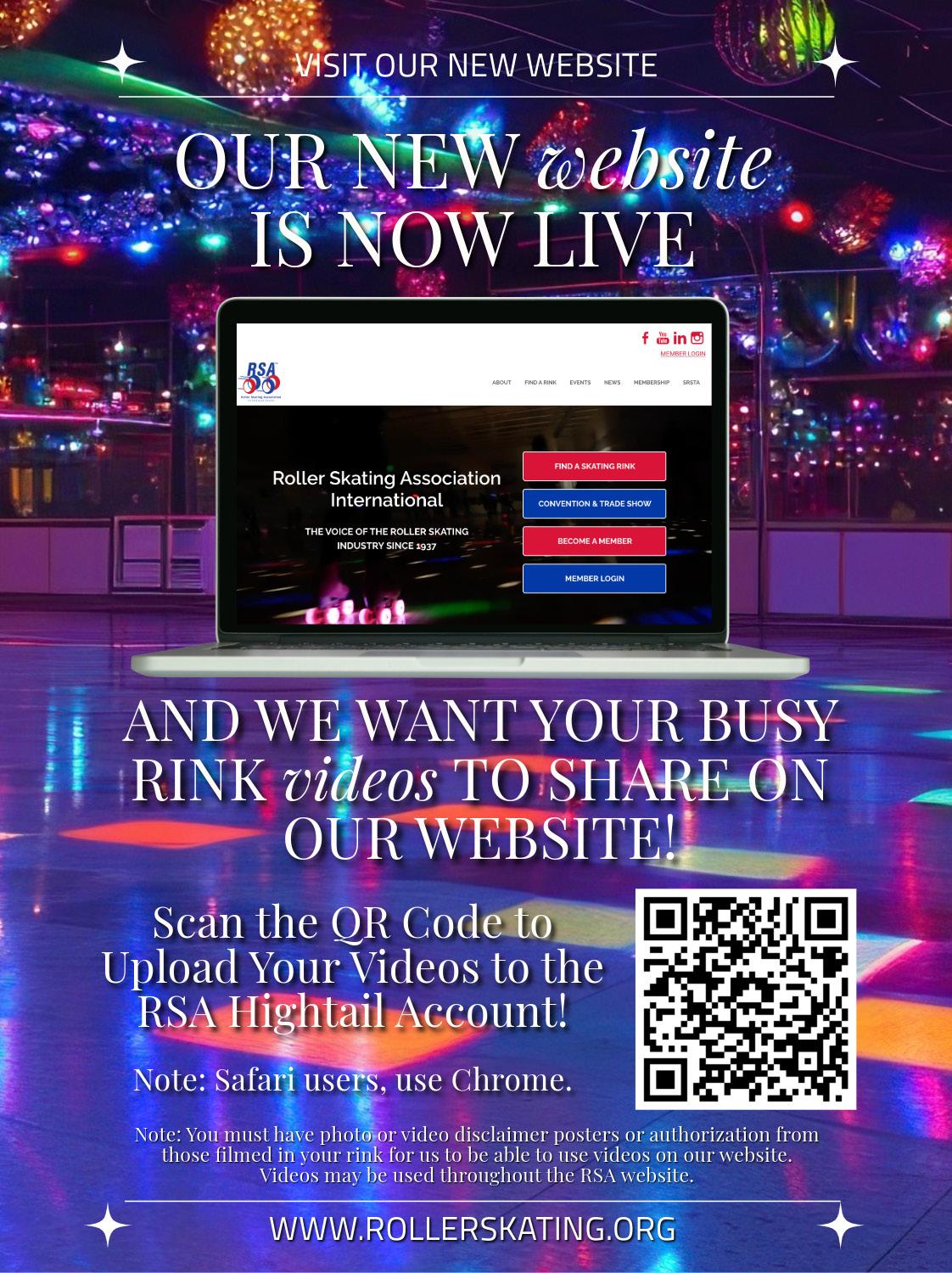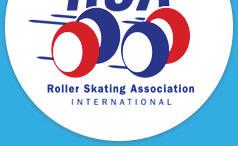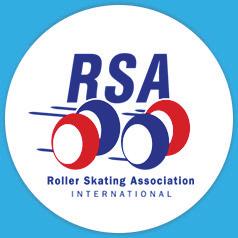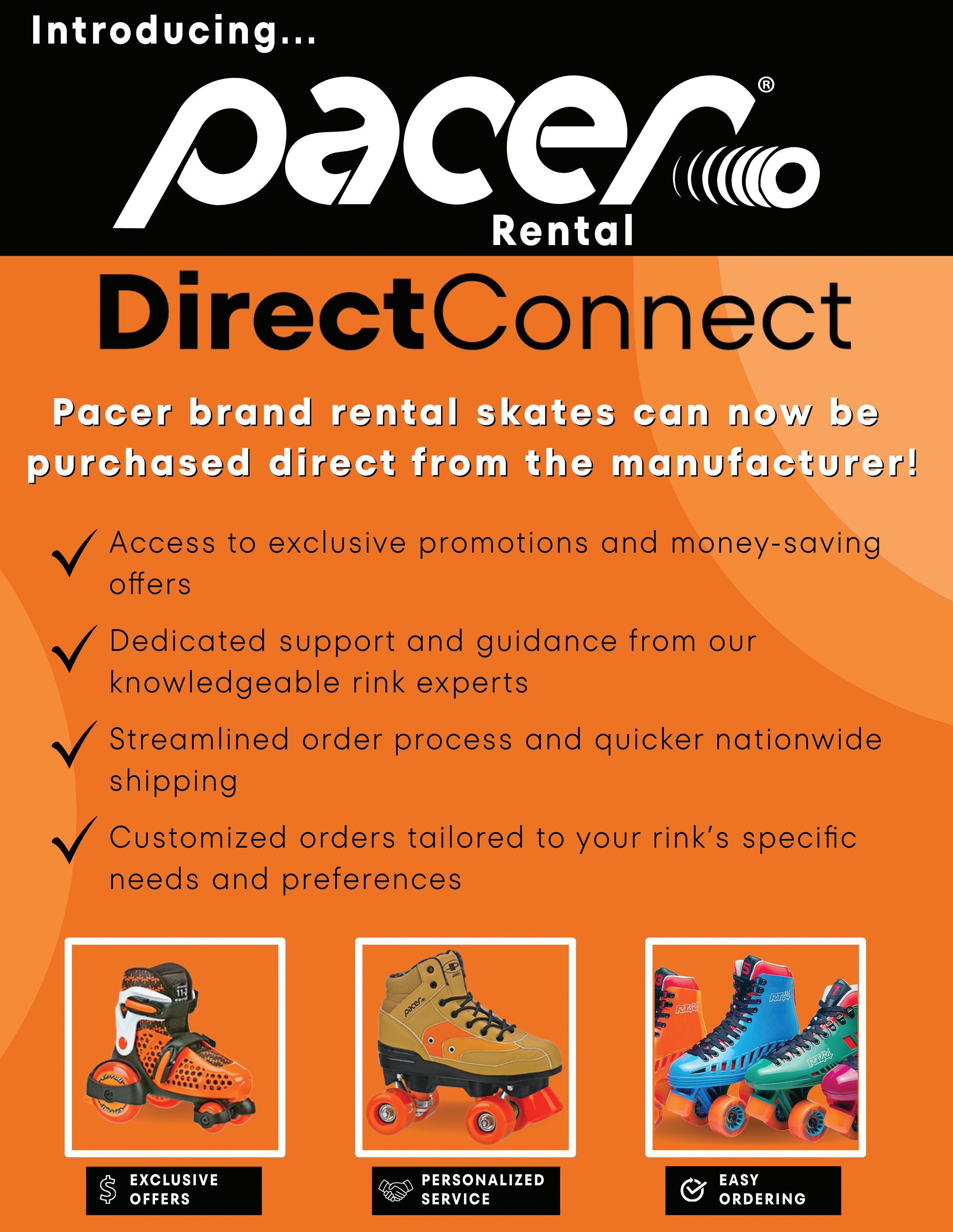
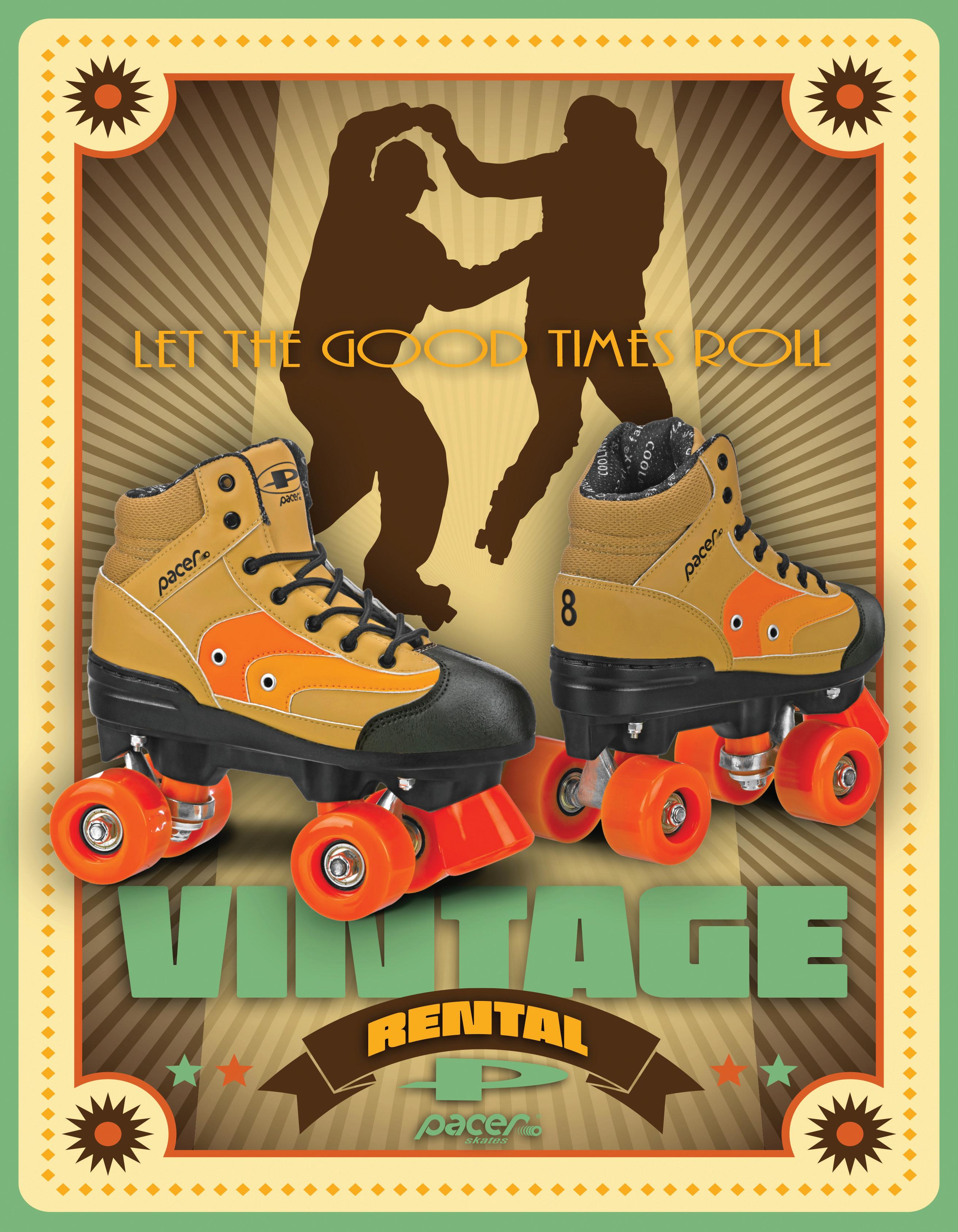
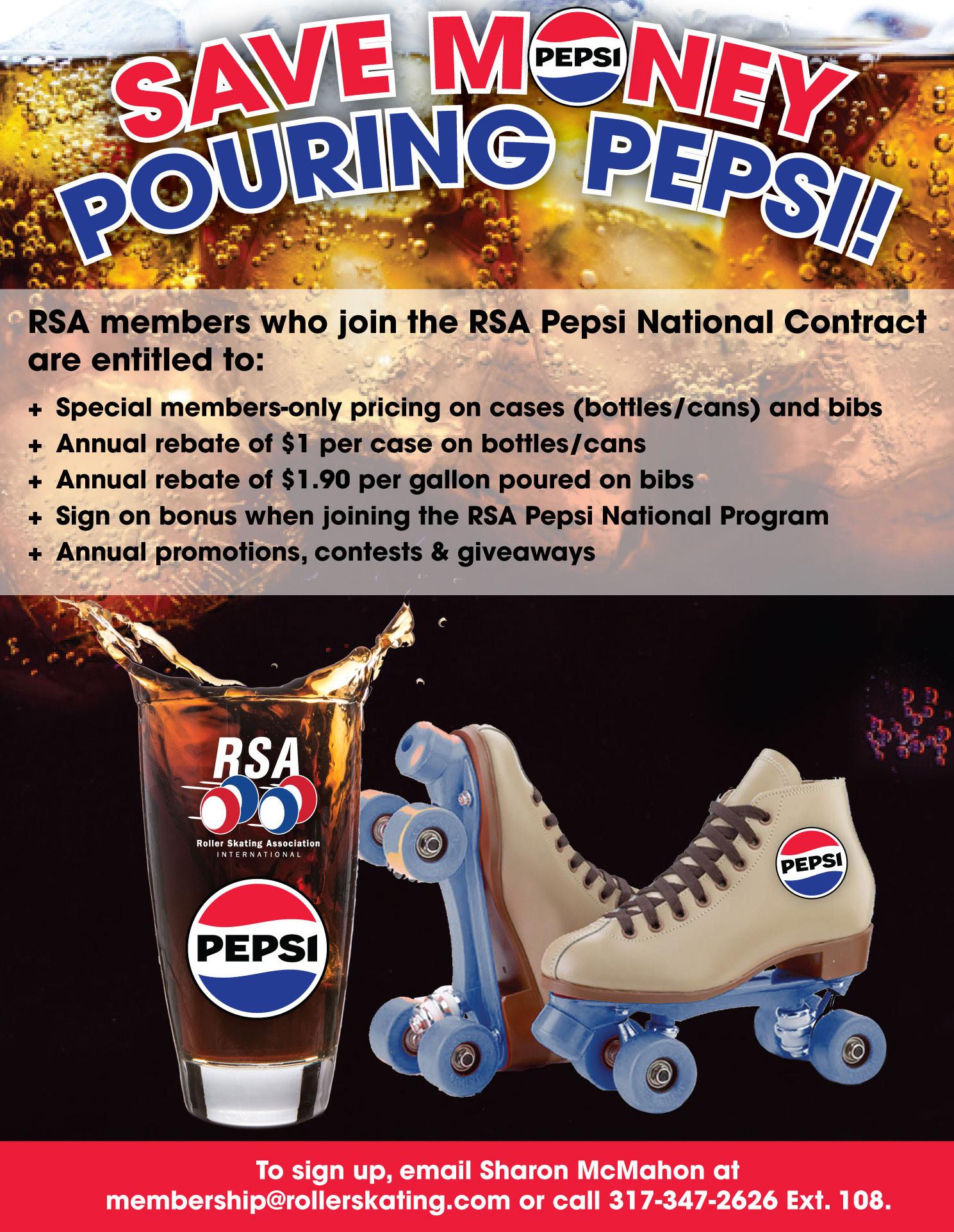












WWhen I assumed the presidency during the value to our sponsors and corporate partners. been able to help members raise vital funds for



AUGUST 26 - 28, 2024
Plus, a 3-night Bahamas & Perfect Day Cruise Before Sk8 Expo with Fellow Members!







CLICK ON “SCAN TO LEARN MORE” BELOW TO LEARN ABOUT THE SHIP, BOOKING INFO AND GROUP NUMBER.



SCAN TO LEARN MORE

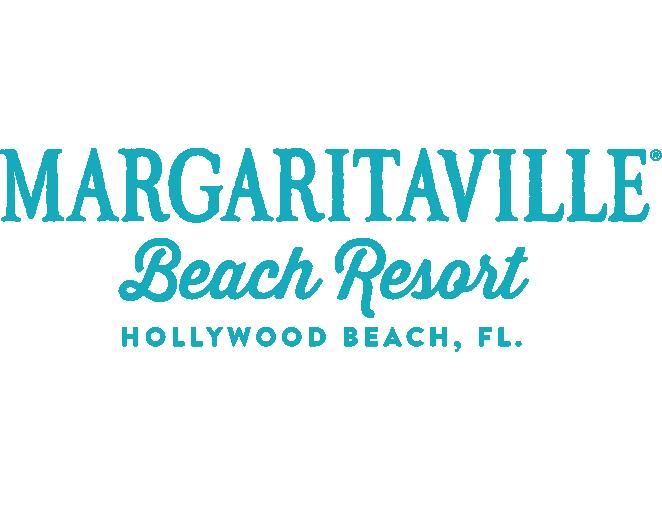
SCAN TO BOOK YOUR ROOM





our organization. With the help of our diligent board of directors and legal team, we successfully negotiated a new contract with Global Music Rights. This agreement ensures that our members continue to pay discounted rates while complying with the music licensing industry.
Adapting and evolving with the changing landscape is essential for staying relevant and impactful. With the help of the RSA Board of Directors, we turned the Kids Skate Free program into a clubstyle membership with an annual fee structure. This strategic shift not only ensured the program’s sustainability and financial viability but also provided added value and benefits to our members and the Association.
Strategic planning and collaboration are critical for charting the course of the RSA. I initiated the inaugural Open Attendance Strategic Planning Session, bringing together all members of the Association to discuss and shape our collective vision and goals. This collaborative effort fostered alignment, innovation, and momentum, paving the way for future success and growth.
Embracing technology and innovation is key to staying ahead in today’s digital age. With the launch of a dynamic new website and member portal, our members now have a user-friendly platform with data accessible and visible only to them, allowing them to access information, resources, and networking opportunities. This modernization effort not only enhanced our online presence but also improved engagement and communication within our community.
I hope that the accomplishments that we have been able to make in the last four years have made an impact on your business both now and for years to come. Thank you to the board of directors, my vice president and incoming president, Billy Thompson, and the other
members in the industry who work so well together to accomplish goals for the industry. It has been my sincerest pleasure to work on behalf of the membership and continue on the enduring legacy of those before me.
I am filled with joy and gratitude as I reflect on the incredible journey we’ve had over the past four years. The accomplishments we’ve achieved together have not only made a positive impact on our business today but have also laid the foundation for a brighter future ahead.
A heartfelt thank you to the dedicated members of the board of directors, our hard-working RSA staff who often work day and night for our members, and all those who have contributed their time, energy, and passion to our shared mission. Special appreciation goes to my vice president and incoming president, Billy Thompson, whose unwavering support and commitment have been instrumental in our success.
I am deeply humbled and honored to have had the opportunity to serve on behalf of our membership and carry forward the legacy that my father, the late Charles Wahlig, instilled in me. His spirit of dedication and service continues to inspire me, and I am hopeful that our collective efforts have made both him and our membership proud.
Before I close on my last column as your RSA President, let me remind you about Sk8 Expo at Margaritaville Resort in Hollywood Beach, FL on August 26-28. Not only will we have a full line up of educational seminars, but we’ve also planned a Bahamas cruise that you can take advantage of - just visit www.rollerskating.com/sk8expo for full details.
Thank you, once again, to everyone who has been part of this journey. Together, we have achieved great things, and I am excited to see what the future holds for our industry. Let’s continue to work hand in hand, supporting each other every step of the way.
 Cort Wahlig
Cort Wahlig
RSA
President410-920-1845
cortw@comcast.net
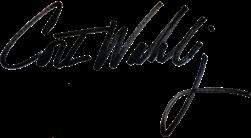
IIn facing the unexpected challenge of our website host decommissioning their server last month, we encountered a pivotal moment in our Association’s digital journey. Presented with a twoweek notice to secure hosting at a considerable cost or seek alternative solutions, we opted for a quick and strategic pivot.
Acknowledging the criticality of safeguarding members-only materials and optimizing user experiences, we partnered with our existing Association Management Software company, Memberclicks. This decision saved the association thousands and facilitated a seamless transition to a more robust infrastructure.
When we embarked on the development of a new website and member portal, I wanted to make sure the pages made sense and were easy to navigate. Rather than clicking on numerous pages to find what you want, I aimed to create an intuitive navigation where everything is found on one page and organized in a way that makes sense.
Website visitors are greeted with a comprehensive array of features tailored to both the general public and members. Public-facing elements include event listings, membership inquiries, rink locator, coaching and judging materials, alongside a wealth of roller skating news and resources.
Within our members-only portal, subscribers gain access to a suite of utilities designed to streamline engagement within your membersonly community. From managing payments and updating staff details to integrating social media accounts for your public rink profiles, members enjoy a seamless digital experience.
Moreover, the portal is a centralized hub for exclusive content, including key benefit partnerships that will save you thousands, RSA program details, discount codes, videos, and multimedia resources. Our commitment to innovation and member-centricity remains unwavering. Our new website represents not only a digital transformation but a testament to our dedication to fostering member
engagement and growth. Moving on to Rinksider, this issue promises to deliver content that you consistently ask for, including:
• The Rise of Roller Skating Communities
• The Magic of Sales Funnels for Party and Rental Booking
• Tips for Adding More Attractions to Your Rink
• 5 Tips for Promoting Your Pro Shop on Social Media
• Top 3 Marketing Trends for Successful Roller Skating Rinks
• How to NOPE Out of a Situation: 30 Scripts for Entrepreneurs Who Struggle with NO
• Crisis Communication Truths to Remember When Disaster Strikes
• How Skating Centers Should (And Should Not) Use AI-created Content
• 5 Action Tips to Get Peak Performance from Employees
• How to Host SensoryFriendly Skating Sessions
• 5 Steps to Turning the Tides on Tough Customers: The Karen Conundrum
• Tips for Entrepreneurs Who Can’t Slow Down
I hope the information you find here will help you drive more traffic to your skating rink, boost sales with new ideas, and help you learn how to slow down and take care of YOU, too.
If you’re interested in making suggestions for content in Rinksider, I’d love to hear from you! My phone and email are always open, and I’d love to hear your pitch!
 Lynette Rowland Editor/Publisher editor@rollerskating.
Lynette Rowland Editor/Publisher editor@rollerskating.
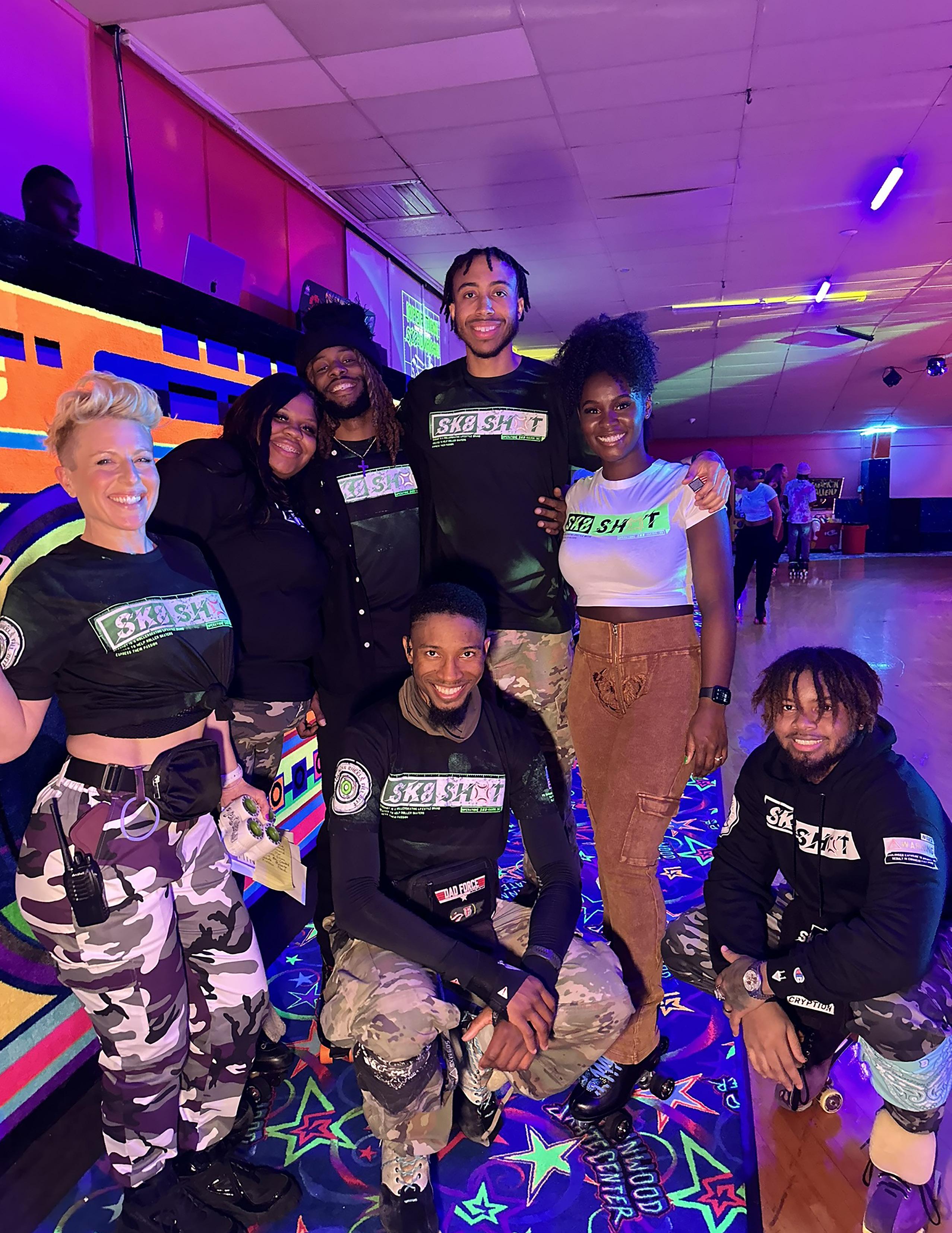
During the COVID-19 pandemic, roller skaters nationwide began to move their favorite activity outdoors to local parks, parking lots, and other skate-able areas. This, plus the increased popularity of #rollerskating on social media platforms like TikTok and Instagram fueled a roller skating renaissance that we are seeing today. It also definitely helped seeing our favorite celebrities in everything from the Super Bowl to Barbie roller skating on the big screen.
This has also led to an increase in the development of roller skating communities around the country. Using
both an online presence and in-person events, almost every major city in the U.S. is home to an organized community of roller skaters that have now moved their outdoor activities back into the skating rinks.
In addition to hosting outdoor get-togethers, some of these roller skating groups also work with their local roller rinks to teach lessons and hold large events, creating a win-win relationship for both the community and the rink.
Here’s a look at how two roller skating communities are working with the rinks in their local area to help create symbiotic partnerships.
In October 2019 — right before the height of the pandemic — Nolan Edwards founded the Motown Roller Club in Detroit, Michigan. A professional skater for Vanilla Skate Company, Edwards wanted to use the knowledge he had gained from traveling the country for competitions and visiting roller rinks. “When I eventually moved back home here after traveling around, I really wanted to bring all the aspects that I learned from traveling in different places, and I wanted to make it effective here in Detroit,” he explains.
Since its inception, Motown Roller Club has held a variety of skating events in outdoor areas, such as Valade Park and Dequindre Cut Freight Yard, through a partnership they have with the Detroit Riverfront Conservancy.
Additionally, the club hosts events at local roller rinks Skatin’ Station II in Canton, Michigan, and Edru Skate in Holt, Michigan. For Skatin’ Station II, Edwards says they met with the owners to come up with some ways they could bring more attendance to their adult skate nights.
“Ultimately, we ended up finalizing on (a) Wednesday night program at Skatin’ Station II,” Edwards recalls. “We do that every single Wednesday night from 8 pm to 11 pm and we’ve been doing it probably for about the past three or so years here now. Over the past years, it’s grown in attendance and we’ve seen a lot more activity from the adult community and new skaters, which was always my my biggest thing — I always wanted to have new attendees.”
Because Edru Skate is located across from Michigan State University, the Motown Roller Club hosts large skating events there during the winter holiday break and at various other times during the year.
“I love the skate community that we already have, but I wanted to grow it and have newcomers come into it as well, which also helps the rink out with rental sales and stuff like that as another stream of revenue for them,” Edwards says. “So that’s really what my main interest was to work together where it’s obviously profitable for everybody here, but also helping the roller rinks retain their business to make everything happen for them.”
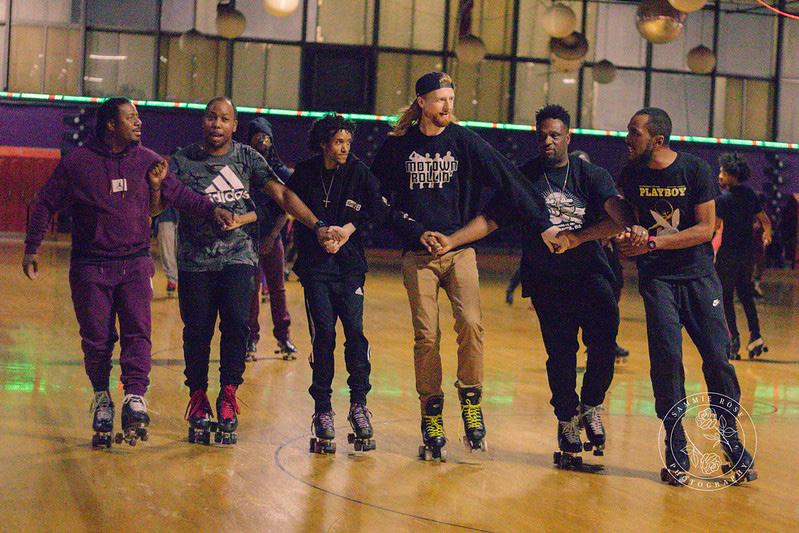
Lynsey Jackson, general manager at Edru Skate in Holt, Michigan, says their partnership with Motown Roller Club has helped bring in new skaters and teach Detroit-style skating.
“It definitely helps us be more connected to what the skating style is right now and what people are looking to do,” she continues. “That Detroit style skating is more like dance skating, and sometimes what’s popular is shuffle skating, which is different, and it’s different music. So being connected to the Motown Rollers or other roller skating groups in our area helps us know what’s really popular right now, what are people wanting to hear, what kind of DJs do we need to provide, and help cater to what people are wanting right now.”
In November 2023, Air Force veterans Knejie Allen and Adontis Atkins started SK8 SHOT Studios — a roller skating lifestyle movement — in Kansas City, Missouri.
Both Allen and Atkins first started teaching beginner adult skating lessons at their local rink, Winnwood Skate Center, also in Kansas City, as well as a local dance fitness studio, which they currently still do. They also expanded their partnership with Winnwood Skate Center to host community skating events.
“In February (2024) we threw our first big skate event there — we rented out the rink and ... We had over 200 people,” Allen says. “And we’ve got our next one in May — it’s going to be Midwest Mayhem, and we’re expecting over 350 people this time around.”
Allen says through the SK8 SHOT Studios community and
events, they’re able to provide rhythm and dance skaters in Kansas City with what they want. “Skate events where you’re bringing in a real skate DJ who has been on the rhythm skating scene all across the country, bringing them in to bring that experience to Kansas City is also a very vital part to the community that has been lacking here in Kansas City for quite a while now,” he continues.
Plus, one of the biggest problems SK8 SHOT Studios is solving, says Allen, is just teaching people how to skate. “We’re changing how people engage with roller skating for the very first time — we’re bringing a new experience,” he explains. “(We’re) adding new skaters to the community and then giving all those different levels of that roller skating and experience — not just the beginner and the fundamentals ... but also providing them events and an online community space with our digital content to connect with the entire skate world.”
In addition to teaching people how to skate, Luke Powell, owner of Winnwood Skate Center, says SK8 SHOT Studios also does a fantastic job of hosting events that are more accommodating to newer skaters. “What I feel is great about our community is it’s very welcoming,” he explains. “Going to an adult night is very, very intimidating for a new skater just due to the sheer volume and just the talent that attends. (The event held in February) was just a little bit different — it was more focused on getting attention to get beginner skaters to come to an event that wasn’t so intimidating.”
With so many roller skating communities popping up around the U.S., chances are good there’s already one in your area that you may be able to partner with.
Allen says the first step is to find the key players in your local skating community. “You got to connect with the correct people that are already in the community in order for you to get in,” he details. “Find the people who people in the community gravitate to. Make sure that you’re working with individuals who have a real passion for roller skating.”
Jackson says social media is a great way to look for skating communities in your area. “Reach out on social media or follow them and see when they’re doing what, and then to just show up and introduce yourself because everyone is really looking to get roller skating big again and get people introduced to it,” she explains.
“Also connect with your regulars because people who really are passionate about roller skating, they’re happy to talk to you about it and give you ideas of what kind of stuff your crowd is looking for, and if there are those groups in the area,” Jackson adds.
Once you find those key players, Edwards says to listen to what their community wants. “I know that sometimes there may be a disconnect from a rink owner to that community, and just sitting down and having that conversation to bring those together is really the crucial element,” he explains. “Those communities, they just want to be heard. They just want to have their voices heard about maybe music selection or acceptance of the people that are coming into the roller rink and things of that nature. It’s different in every area, as I’ve come to find out.”
Whatever roller skating culture you have in your community, Powell says you should embrace it and have the ability to grow your skating. “This community has been here since way before we owned it and pretty much before the owner before us,” he continues. “It just has to happen naturally. If there is a culture, embrace it. If there’s not a culture, help plant those seeds. We want to continue to help grow skating ... and we just feel that assisting a group that wants to help the newer people, that’s what we’re here to do.”
While roller skating is generally considered an activity most people can enjoy, there are some guests who may have a sensory processing disorder that makes them very sensitive to flashing lights and loud sounds.
These sensory issues can be a condition on their own or associated with other conditions such as autism spectrum disorder, attention deficit hyperactivity disorder (ADHD), developmental delays, or traumatic brain injury.
For this reason, many roller rinks have adopted sensory-friendly skating sessions to accommodate their needs and give them an opportunity to enjoy roller skating.
Here’s a look at how three rinks have successfully created sensoryfriendly sessions for their communities, and their tips for rinks that want to start their own.
At Wheels and Thrills in Owasso, Oklahoma, owner Tammy Johnson says she wanted to create a sensoryfriendly skate for her friend who has a child with special needs and anyone else in the area who needed it, too. “That is just one of the things that means a lot to me to be able to give back to her and to the community where they can come in and work on their motor skills and have a quiet place that they can have some fun and work on just socializing with everybody,” she continues.
friendly skating session on the first Sunday of each month. For that session, children and adults with special needs and their families can skate for a low flat fee that includes their skate rental, Skate Mate, and sensory activities.
“It’s never crowded — it’s just a calm place where they can come and let their kids play and teach them how to skate,” Johnson adds.
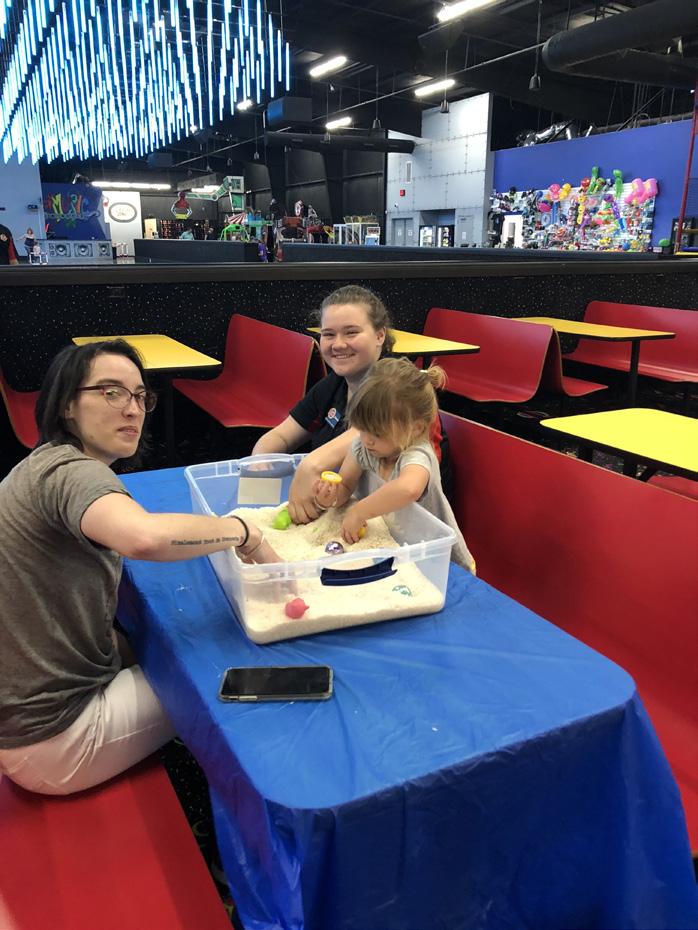
Johnson says they currently hold a sensory-

needs people come in to skate, so we thought let’s just expand on that,” he says.
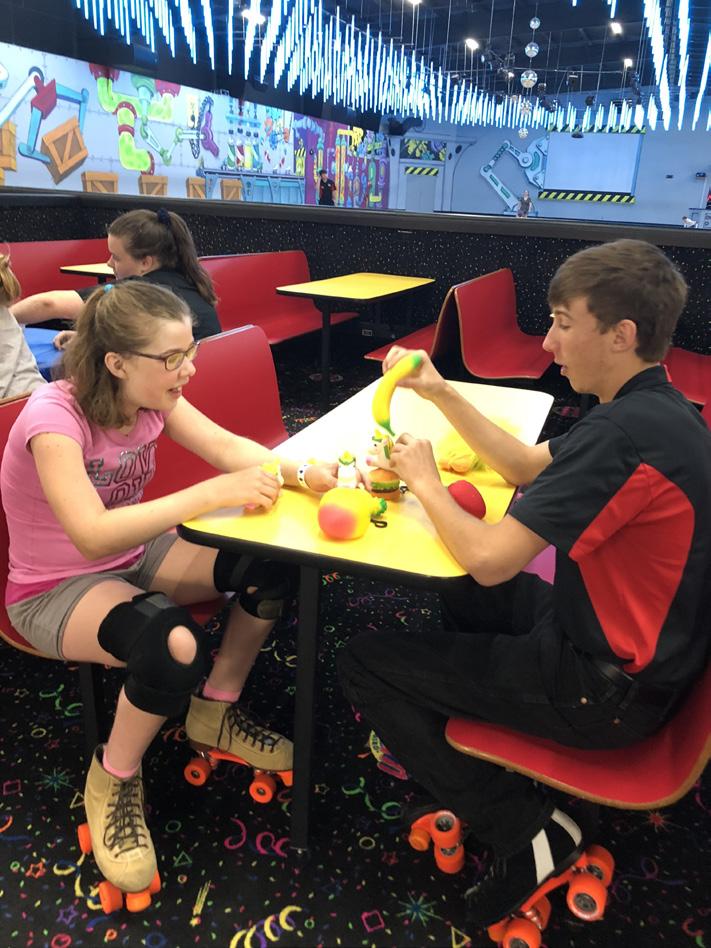
In addition to skating, Cheap Skate’s bounce houses are open during the sensory-friendly skate. “We have the bounce houses on so kids that don’t have the ability to skate can still have fun in the bounce houses,” Golebiowski adds.
A sensory-friendly skate is also held once a month at Skate N’ Fun Zone in Manassas, Virginia. “We were getting a lot of customers that have autism and different sensory issues,” explains KC Perkins, general manager, “so we tried to create a session that would be inclusive for them and provide them a safe place to skate.”
A few steps are involved when it comes to making a roller rink sensory-friendly for these special skating sessions.
First is lighting. “We don’t have any flashing lights — the house lights are up,” Golebiowski says.
Through a relationship with the Autism Society of Minnesota, Cheap Skate in Coon Rapids, Minnesota, started holding sensory-friendly skates on the first Tuesday of each month in 2019, says Ed Golebiowski, operator/president of Fun-ORama Incorporated, which owns Cheap Skate. “Tuesday nights we always had a few special
Johnson says they keep the lights to a solid blue color because of its calming effect. “We don’t have the arcade games on because they’re usually flashing,” she adds.
Sound also must be changed for these events. “We turn (the music) about threequarters of the way down from what we normally have it at,” Perkins says. “It’s not too quiet, but it’s quiet enough that it’s almost like background music.”
In addition to turning the sound down, all three rinks allow guests to wear headphones or earplugs as needed during that time.
1. Create a session where there
2. Turn off arcade games and other activities that may create flashing lights or loud sounds
3. Allow guests to wear headphones or earplugs when in the rink and on the skating floor
4. Consider offering other sensitivefriendly activities like a sensory bin or playdough area
5. Allow parents/guardians to walk on the skating floor
6. Provide ways for non-verbal guests to communicate with staff using signs
7. Offer a special dietary menu, such as gluten-free
8. Reach out to local autism society chapter and/or parent groups for their input and promotion help
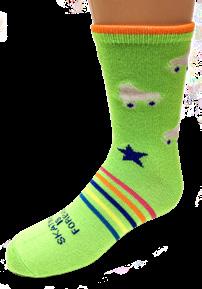
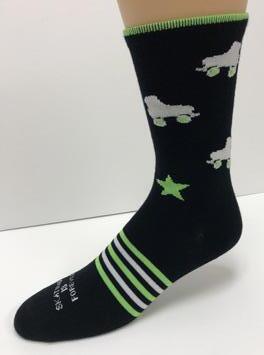
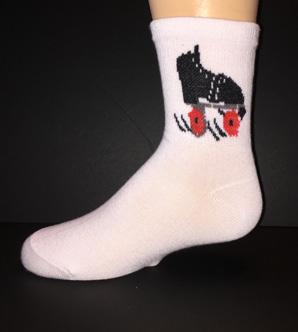
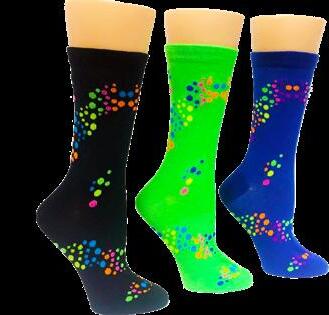


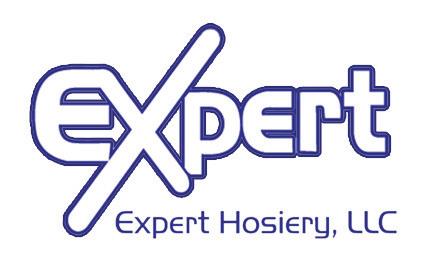

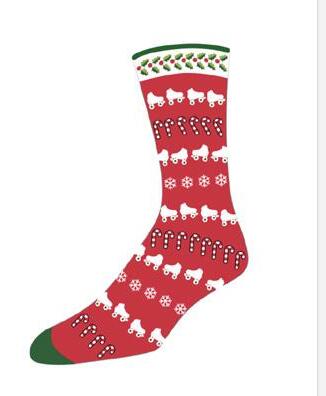

“During sensory-friendly skates, people are allowed to walk on the skating floor, which during a normal session they would not be allowed to do,” Perkins says. “This allow parents to help their young or older children with special needs to learn how to skate,” he says.
“By having their parents out there, the parents can coach them along because when you’re a bigger person and you fall, it’s a lot harder, and the Skate Mates don’t really work,” Perkins continues. “They need somebody to hold their hand as they do it and I think there’s a comfort variable in there as well, having a parent with you and guiding you.”
Although laser tag is turned off during sensory-friendly skates, Johnson says guests are still allowed to walk through the laser tag layout as a maze. “They just walk through there, and that’s fun,” she adds.
Wheels and Thrills also offers glutensensitive concession options and a gluten-free menu during the sensory-friendly skates. They also place signs up in the rink, as sometimes children who have autism or another disability may be nonverbal. “You just put different signs up that say food and restroom,” Johnson details. “And we even have little pages [with photos] that they can touch if they need a drink or a Skate Mate.”
And Johnson says they also offer some
specifically sensory-friendly activities. “We have a sensory bin — it’s a bucket of rice with ‘treasures’ in it, and we change those out,” she explains. “We have a playdoh center where they can play. We have a sensory area where they can touch different textures — some squishy, some furry, some knobby-like balls, things like that, different textures. It’s interesting to see what they’ll gravitate towards.”
Perkins says families love the fact that they offer sensory-friendly skating sessions. “A lot of people come up to us and say this is really great that you guys do this,” he continues. “They can’t do the regular sessions, the music’s too loud, and the only time they can skate is when you guys do these events. It’s creating a safe place for folks with sensory sensitivities — they have a place that they can escape, so that’s the main thing.”
“It’s just giving back to the community,” Johnson says. “During sensory session, (guests with sensory issues) just get to play, and parents do a lot of networking. They get to talk, and it’s just an amazing event.”
For rinks considering starting their own sensory-friendly skate, Golebiowski advises reaching out to local groups. “There’s a lot of groups on social media that are looking
for sensory-friendly activities, or if they have a local chapter of an autism society, reach out to them because they will be happy to advertise it for you, and they would want to be a part of it,” he continues. “It’s just a matter of doing a little bit of research to find out what’s in your area to help get it started. Actually, for us, it was very easy to get it started — even on the very first night, we had a great turnout.”
Perkins agrees, “Reach out to different organizations or different groups that deal with autism or parent groups. A lot of parent groups will be interested in this, as well. If you reach out to them, it’ll grow from there. Talk to them, see if they know any other groups — word-of-mouth with other people in their community a lot of times will help with the session growing.”
“We have some folks that aren’t even part of the community, but they just come to support it,” Perkins adds. “It’s good as a positive view of your facility that you care enough to do something like this for others.”

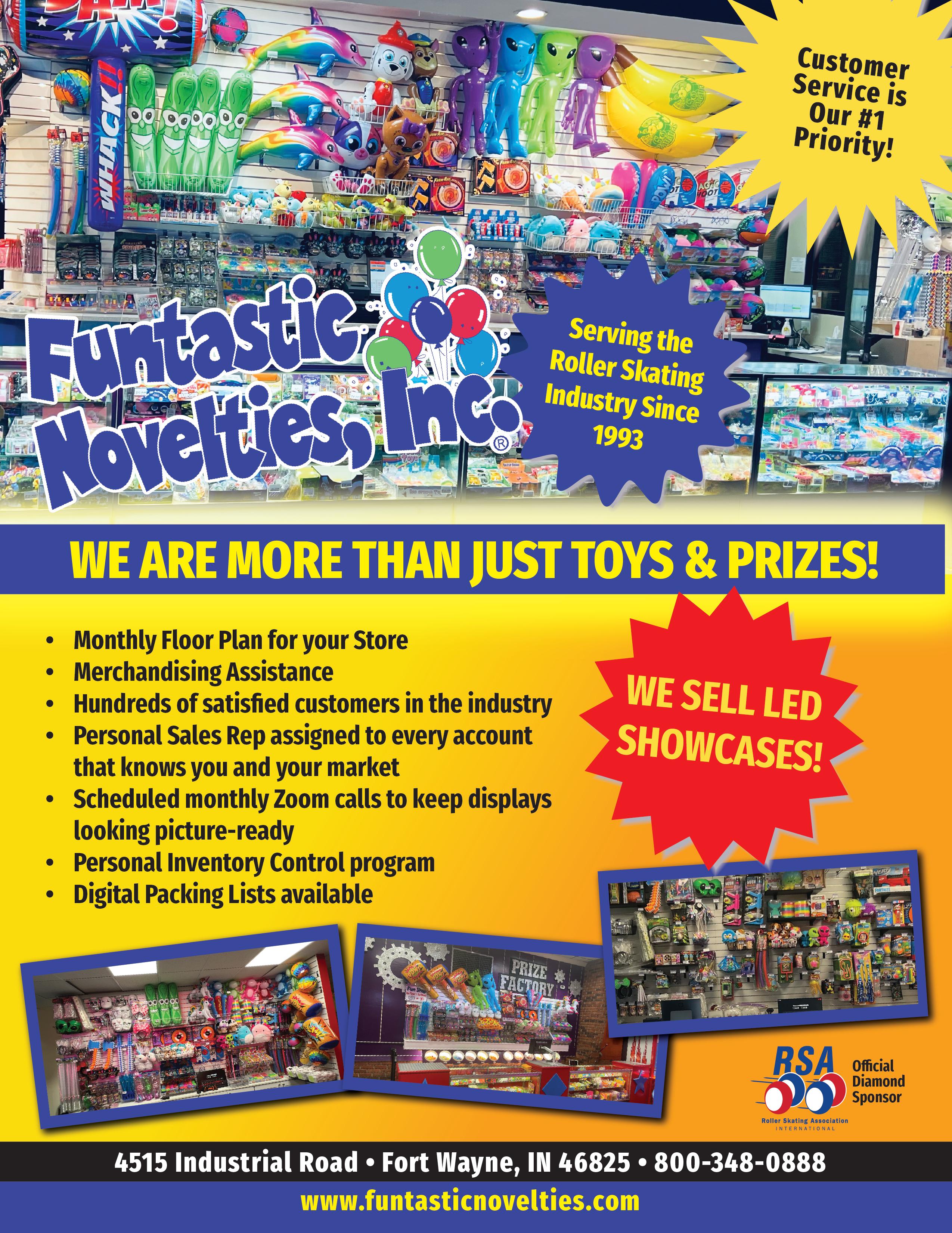

Whether you have a pro shop in your rink or at another location, social media promotion should be an integral part of your pro shop marketing plan.
“It is a relevant marketing avenue right now,” says Shayna “Pigeon” Meikle, owner and founder of Pigeon Skates Inc., which owns Pigeon’s Roller Skate Shop and Pigeon’s Roller Rink in Long Beach, California. “You have a lot of freedom to brand it in a way that makes people feel like they’re in your rink when they’re looking at your pro shop online. And that gets people even more excited once they’re actually there because they feel like they saw a touch of it on social media.”
“It lets customers know that if you are really enthusiastic about skating, then the skating center should be the place that you buy your skates from,” adds Billy Thompson, incoming RSA president and owner of Kate’s Skating Rinks in Gastonia and Indian Trail, North Carolina. “The skating center is going to have a ‘real’ roller skate compared to what you find online. And if you’re going to frequent the roller skating rink, I personally think a lot of people don’t know that rinks sell skates, and some rinks sell skates, and some don’t. It’s important to promote it on social media because it lets your customer know, ‘hey, come here, I’m going to give you fun, you can buy food, you can see your friends, and I can also sell you a quality pair of roller skates.’”
Looking to promote your pro shop’s offerings more on your social media accounts? Here are five tips to get the most of your social marketing.
Over at Kate’s Skating Rinks, which promotes their pro shop on their Facebook, Instagram, and YouTube accounts, they use a combination of both social media posts and in-person marketing to sell their items.
“When we get a new item or new product in, or when we do a special custom build, we’ll just take pictures of it and put it out,” Thompson details. “And they’ll have a tagline on it that’ll say ‘we can do this for you’ or ‘don’t forget to check us out.’”
“(And) when the skaters are in the rink and we get new stuff, if it is geared towards a certain clientele like a certain style of skater ... we’ll just sit it on the counter all night so people can touch it and play with it, they can see the wheels,” he continues. “The social media aspect of promoting it, that’s probably 80% of what we do. And then the other 20% is having it out on the counter for the customer.”
When taking photos or shooting video of pro shop products, Meikle says to make sure you show your rink in the background. “Everyone has on the internet the same product shots — I highly suggest that people take their own photos and they don’t use the white background shots that they would pick up off the internet,” she explains.
For example, when promoting a new product,
Meikle advises not always using the photos sent by the manufacturer but instead taking your own photo of the skates in a cool part of your roller rink. “That’s kind of a two-in-one — you’re showing parts of your rink that people recognize, and you’re branding yourself, and you’re showing look, we’ve got this product, and you can get it here,” she adds.
Thompson says sometimes when they get a new product in, like a new set of wheels, they will give them to one of their rink’s skaters to try them out and provide feedback. They’ll also encourage those product-trying skaters to post about their experience on their social media.
“We’ve got two or three guys and girls that will do that,” Thompson says. “They’ll skate on them — if they don’t like them, they just give them back to us, and there’s no harm, no foul. But if they like them, they’ll take pictures like ‘hey, I just picked these up at Kate’s Pro Shop, go see so and so’ they’ll mention our managers’ names, or they’ll be like ‘hey, thanks for hooking me up.’”
Meikle says another great way to create social media buzz for your pro shop is by committing to a consistent check-in. For example, every Friday do a “Live” on Facebook, Instagram, or TikTok where social media followers can ask questions about skates at the pro shop. Or, on a certain day

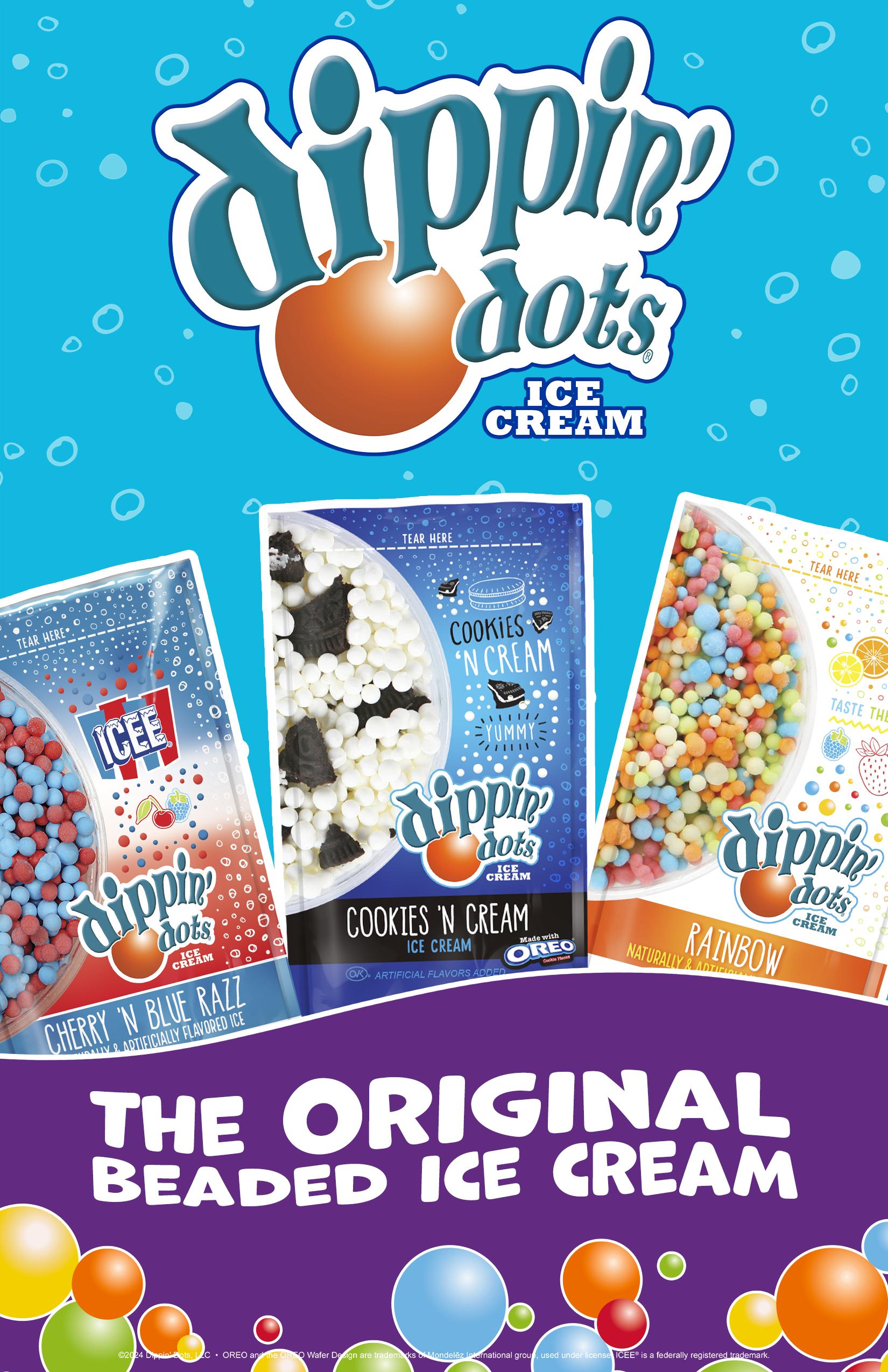
every month, someone from the rink “unboxes” a brand-new skate in stock.
“That’s nice because it’s not putting something permanent up on your social media, it doesn’t have to look perfect, but it’s really engaging,” Meikle continues. “And when you engage with people, then they have a relationship. And when you have that relationship, then you’re connected in your community and you’re gaining loyal customers. So, make things pretty and nice, but also make things real, like you could talk to
somebody or you could look at somebody and talk about the skate.”
And for rinks who maybe are unsure how to go about promoting their pro shop on social media, Thompson suggests starting easy with a
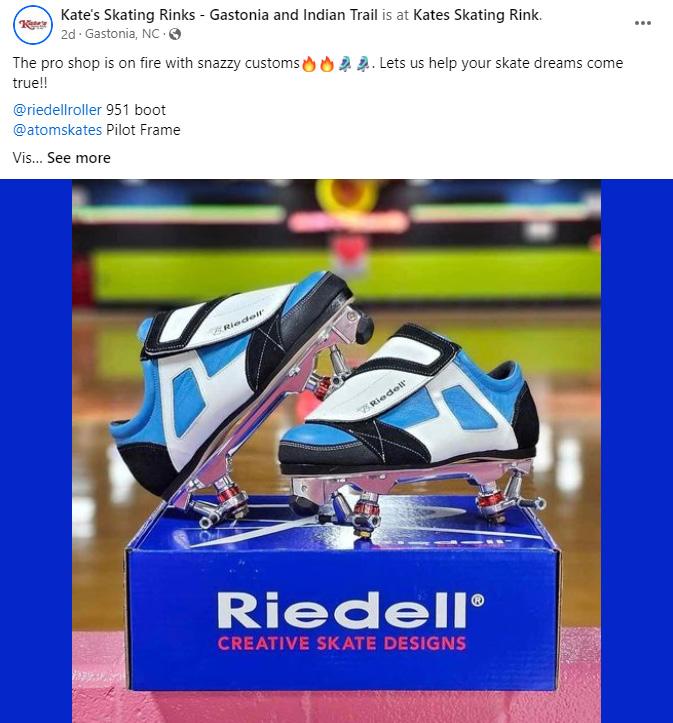

Rotate your iPhone upside down and put it on .5 zoom and skate behind or beside someone wearing the skates for quick and easy video!
good, better, best. “That’s where I would start — the good, better, best skate,” he explains. “Have maybe three different price points and try to get one of each size in your bulk sizes. Maybe have a juvenile skate, then try to have a mid-level skate for like your preteens and your teens, and then maybe try to have a best skate for your adults that maybe gets around that $200 price point.”
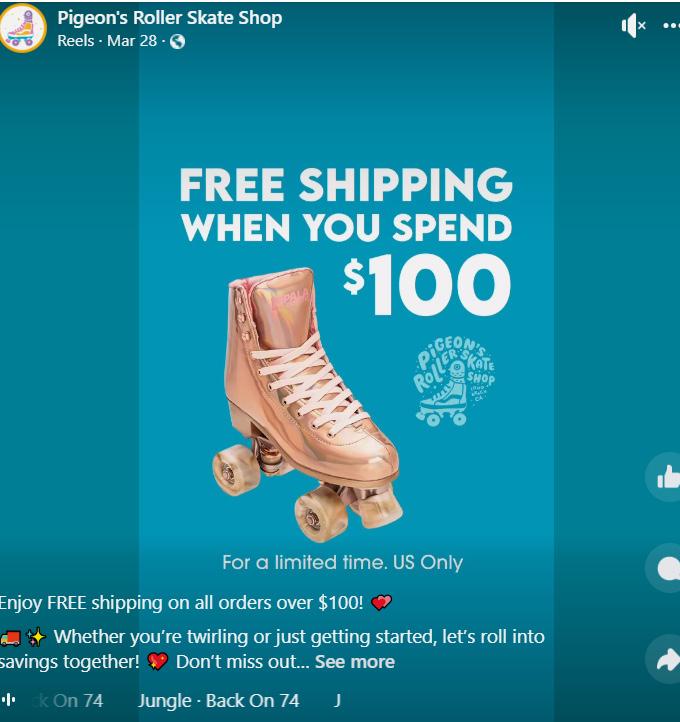
Looking for the best way to video skaters in your rink trying out new skates? Shayna “Pigeon” Meikle, owner and founder of Pigeon Skates Inc., which owns Pigeon’s Roller Skate Shop and Pigeon’s Roller Rink in Long Beach, California, says the best way is to use an iPhone put on the 0.5 mode, and flip it upside down.
“You follow someone really low (with the phone camera) and it looks amazing, especially on a pretty polished rink floor,” Meikle explains. “So if someone can skate behind or next to somebody else with that orientation on their phone, they can get a really cool shot without having to need high-tech equipment or a professional photographer — you can do it yourself.”
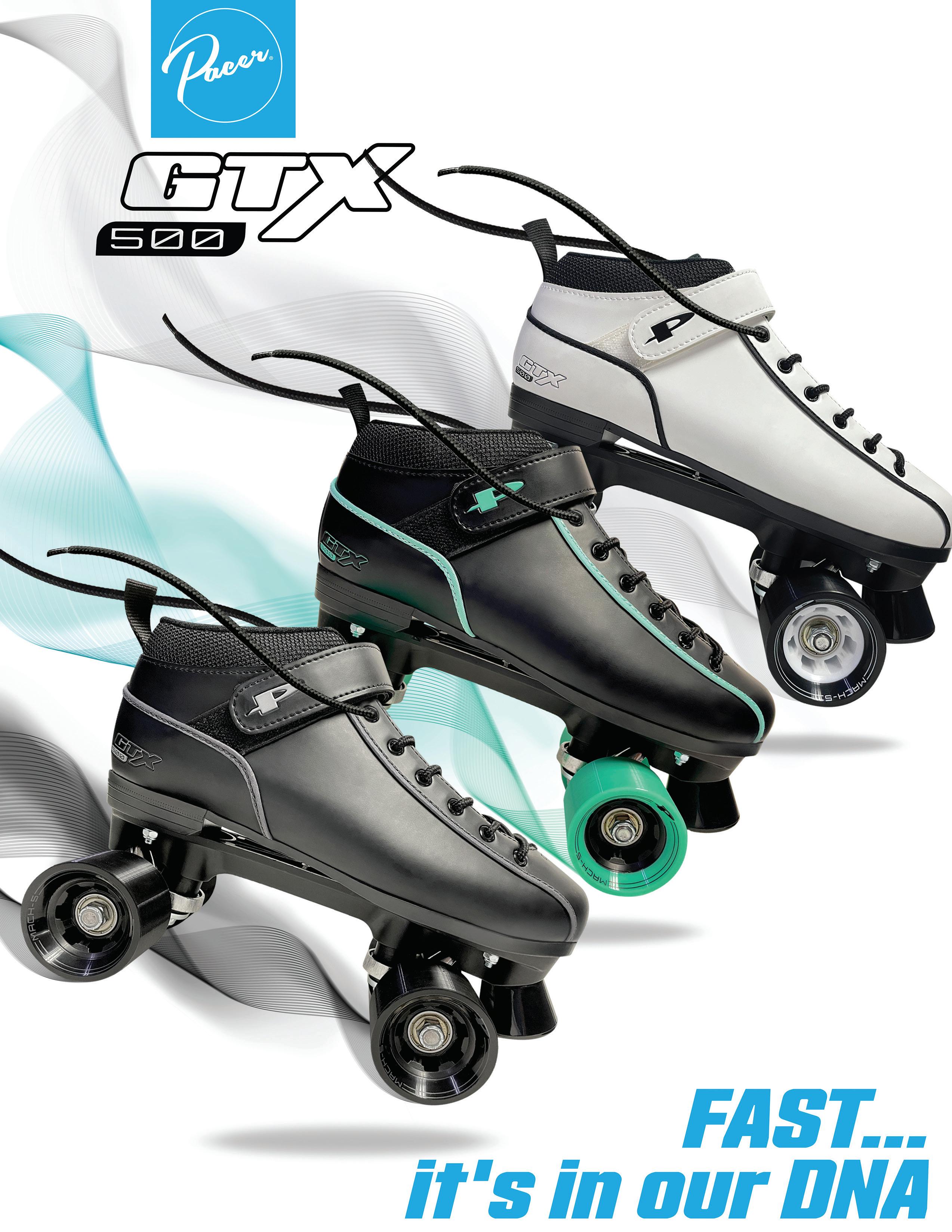

While the majority of people who step into a roller rink are looking to roller skate, sometimes they want other options.
Maybe they plan to be at the rink for a long time and want to do more than just skate. Or possibly they’re part of a birthday party or other type of group and they prefer to play laser tag, ride bumper cards, arcade games, or bowling.
“Multiple attractions allow you to appeal to a wider audience,” explains Mike Ewald, president of LaserBlast.
“People that may not typically visit a roller skating rink are now walking through your doors for the other attractions that you offer. Both new and returning guests are also more likely to remain in your venue longer to enjoy your various attractions. This helps to boost per capita spending because guests are paying for numerous attractions and the added
time in your venue will often lead to additional food and beverage purchases.”
If you’re considering adding additional attractions to your roller rink, here’s a look at what roller rink owners and managers should think about when considering extra attractions, as well as tips on figuring out what additional activities are right for your rink.
In addition to roller skating, Fun Warehouse in Myrtle Beach, South Carolina, also offers an arcade, virtual reality, go-karts, laser tag, and inflatables. Tim Marks, vice president of Fun Warehouse, said they added other attractions as they knew their area could not support just a roller skating rink. “Everybody in their hometown has a roller skating rink, but when you come to Myrtle Beach, you want more than that,” he explains. “Laser tag, virtual reality, go-karts — all those things come way before skating for our tourists that visit our area.”
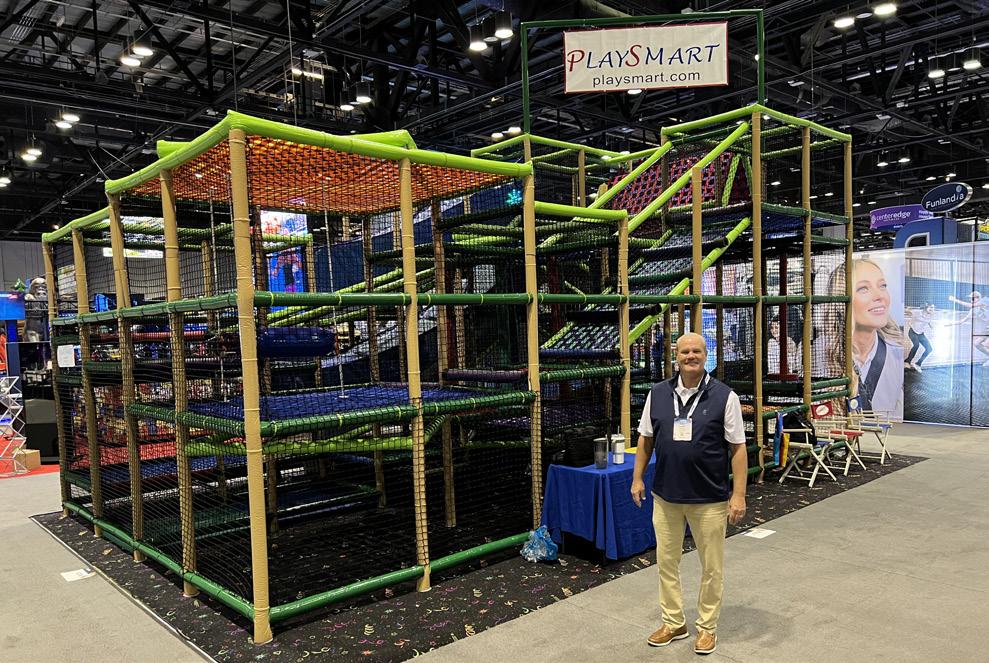
This is why Marks says the first thing to understand before adding extra attractions is your demographic and what their area can support. “We wanted to expand our demographic — we felt like we were pretty much from the ages of six to say 14 or 15, that was
our max,” he explains. “The go-karts gave us the demographic from 16 to, say, 30. And then our next project ... we’re going to add 12 lanes of regulation bowling and axe and dart throwing. ... We’re trying to get an older demographic and expand our food and beverage.”
Speaking of demographics, Gary Boots, general manager of PlaySmart, says soft playgrounds can be particularly good for skating centers because they attract the ages 6 and under crowd. “Some families that have both older and younger children avoid visiting facilities that do not offer entertainment to all siblings,” he explains. “Soft playgrounds overcome this objection.”
And attracting young children does more than just improve a skating center’s current revenue, Boots says, as it can have a long-term impact as well. “Marketing research is showing that there are significant benefits to getting customers accustomed to visiting your facility at an early age,” he details. “The youngsters that are playground customers now return later as skating customers.”
Over in Killeen, Texas, AREA 254 recently opened featuring roller skating, bowling, bumper
cars, laser tag, arcade, and karaoke. Co-owner Jim Lewis advises rink owners to consider adding activities like laser tag, bumper cars, and an arcade as it will allow them to expand their party offerings.
“Laser tag is still strong — it continues to pull people in every single day, it’s not going anywhere,” Lewis continues. “A lot of people can do it at one time, which again makes it perfect for expanding the offerings for birthday parties in particular. And I don’t think you’ll go wrong by making your arcade really good — not just a few games, but something really good.”

Ride Development Company offers bumper car options that can fill a variety of spaces.
“To have a bunch of different attractions to make different packages to make it more attractive to everybody, that’s a definite positive to anybody who is thinking about adding on to their facilities,” Marks adds. “Instead of then going to other places to satisfy their needs, you can be the one stop shop.”
While some attractions may require a large footprint of space, there are others that do not.
“Karaoke is a fun little addition,” Lewis says. “It doesn’t take up a lot of space. And it again is just another thing for people to be able to do that makes you more than just a one attraction shop.”
Marks says their four-player virtual reality system only needs a space of about 25 x 25 feet. And if you do not have any more room on the floor to add attractions, he advises looking up.
“Recently we expanded our soft play area, our climbing area,” Marks explains. “We didn’t have any more space, so we went up. We took it all the way up to the ceiling. So we expanded that a lot.
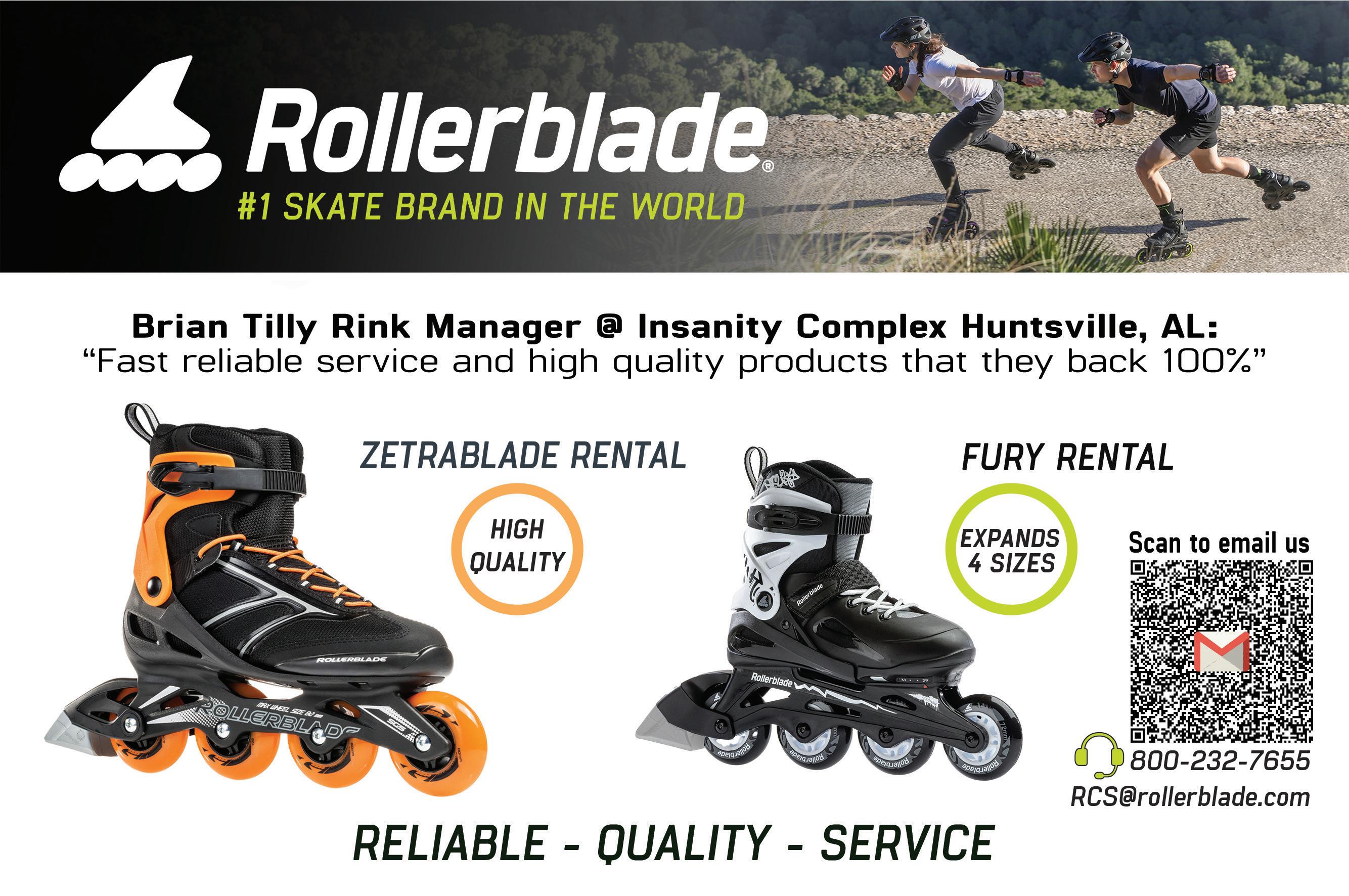
1. Identify your goals — what results do you want in your business?
2. Be aware of your area’s demographic and what activities it can support
3. Understand the link between the cost of the attraction, what you charge, space requirements, staff requirements, and the attraction’s hourly throughput/capacity
4. Think about activities that can be added for little space
5. If you have no room on your floor, consider using the space above
6. Ask yourself what attractions would be best for expanding birthday party offerings
7. Look for attractions that require minimal maintenance and a low number of attendants
8. Consider attractions for younger guests ages six and under
9. Add attractions that do not cannibalize existing revenue
10. Visit industry conferences to talk to vendors to find out what’s available
It turned out to be very good, the kids seem to love it.”
“When people are looking to add an attraction and they say, well, I don’t have the space, look up — how much ceiling height do you have?,” he continues. “Can you make a staircase or can it be a play place that kids climb up to get up to where they need to go? Some things you’ve got to be careful with because of ADA and such, but even in laser tag you don’t really need a huge footprint. And if you have the ceiling height, you definitely don’t need a big huge footprint because you can always go up.”
When considering what new attraction to add to your rink, Danny Gruening, vice president of business development at Creative Works, says it’s important to understand the different variables involved, such as the cost of the attraction, the price you can charge, size requirements, staff requirements, and hourly throughput/capacity.
“All of these work in tandem,” Gruening continues. “As an example, laser tag generally uses a fairly large footprint with an average of 3,000 to 4,000 square feet. But to offset those larger size requirements, it has a great hourly throughput and allows you to charge at a great price point — generally
$7-$10 per game. On the opposite end of the spectrum, escape rooms have significant staffing requirements with a low hourly capacity. But they make up for this with a small footprint and a significantly higher price point you can charge for the experience — generally $25-$40 per person.”
Tami Dean, general manager of Ride Development Company (RDC), agrees these variables are an important part of the purchasing process. “RDC has found that roller rink operators are most interested in (1) optimizing their floor area with a small footprint, (2) adding a new attraction that offers a proven and sustainable ROI, (3) attractions that require one operator, (4) attractions that are fun, thrilling, and appeal to a wide range of ages, (5) added attractions that do not cannibalize existing revenue, (6) minimal maintenance, simplicity and reliability and (7) rapid and unlimited ride cycles,” she details.

area
makes great use of space and offers customers a different option for entertainment.
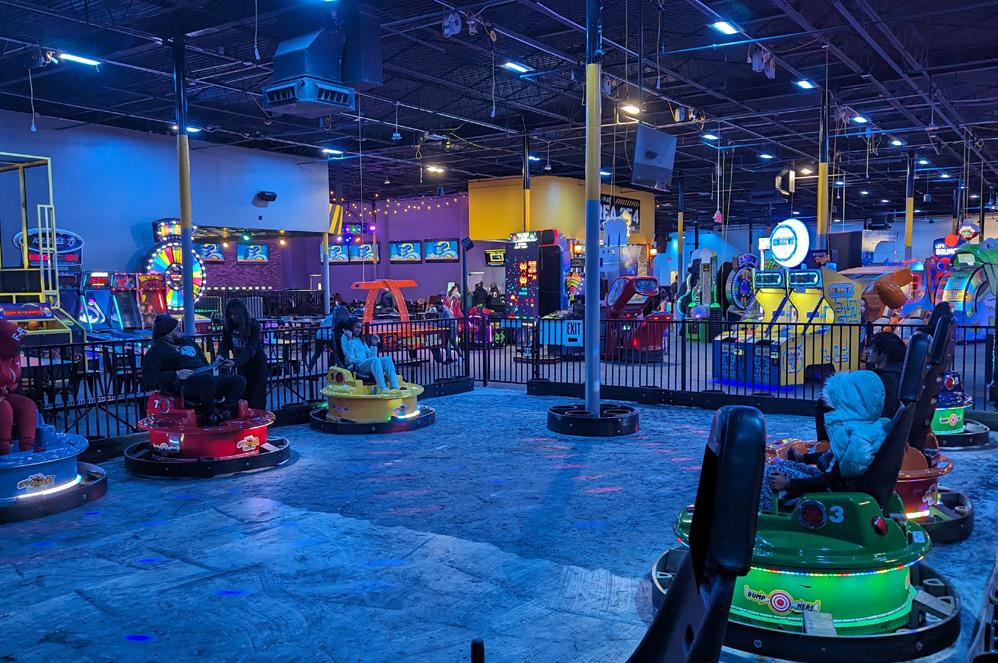

Small business “fixer” Julie Bee explains why saying yes to every opportunity can get entrepreneurs into trouble. Here’s how to stop and refocus on sustainable, strategic growth.
Most entrepreneurs live for new opportunities. The problem is, when you’re focused on growth, it’s easy to say yes to more than your business can handle. Sure, you can juggle it all for a while, but eventually, the stress catches up to you. Your attention is spread over too many people, and no one gets the service they deserve. Plus, employee coaching and development get the shaft—and before you know it, they’re drifting toward disengagement (and burnout).
In other words, says business owner burnout strategist and small business fixer Julie Bee, your bandwidth is a mile wide but only an inch deep—which means it’s in danger of running dry. The key is to make space for redirection and replenishment before that happens.
“Dialing back is one of the hardest things for entrepreneurs to do because, for many of us, it feels like a failure,” says Bee, author of Burned: How Business Owners Can Overcome Burnout and Fuel Success (Matt Holt, June 2024, ISBN: 9781-6377449-0-1, $28.00). “I feel the opposite is true. An intentional pause can save your business. In other words, say no for now.”
The idea is to assess where your business is now, where it’s heading, and whether that’s a direction you really want to go. When you’re ready to hit “play” again, you can do so with redefined goals and clarified priorities that will lead to sustainable growth, not burnout.
Bee, who coaches other business owners to get “unstuck,” work through burnout, and take their companies to the highest level, speaks from 15 years of experience as an entrepreneur. In Burned, she acknowledges that
periodic stress, struggle, and even burnout are givens when you own a business. Her book provides tactical advice on how to make space for addressing burnout, fix any problems it has caused, and leverage its lessons while running a company.
Here, she shares seven steps spread-thin entrepreneurs can take to slow down, re-center, and get back to focusing on what their business does best.
(Temporarily) say no to new. Temporarily is the operative word. Just for a while, stop chasing new opportunities. That’s what got you here in the first place. You need to put your time, energy, and thought into strengthening your business, not expanding it.
“Think of this as saying ‘no for now’—not necessarily ‘no forever,’” advises Bee. “Maybe you do have a fantastic idea that is right in your business’s sweet spot—but first you have to make space to properly develop and execute it. Sometimes the best way to speed up is to slow down.”
Pause projects that can wait. Of course you can’t neglect the needs of your clients; they always deserve your full attention. But chances are there are some bigpicture initiatives you can put on hold, like creating a new product or transitioning to a new software.
“I’m not saying you’ll never pursue these initiatives; this isn’t a permanent pause,” Bee clarifies. “By putting them on hold, you’re helping make space to reassess so that when you do go back to ‘full steam ahead’ mode, you’ll be moving in a productive direction.”

Drill down on why you’re driven to do more. Are you afraid of failure? Do you feel that you owe it to your employees and clients to constantly expand? Are you trying to stay ahead of competitors? Do you have a scarcity mindset? Are you working toward some (mythical) point where you’ll finally feel that you’ve made it and can relax?
“Once you identify what’s motivating you to always do more, you can determine if it’s something that’s serving you and your business well,” says Bee. “For instance, let’s say your fear of failure is prompting you to take on more clients than you can comfortably handle. Ironically, this is pushing you closer to failure than you would be if you capped the number of clients. Other people can often see this more clearly than you, so try to do this self-assessment with a mentor, your mastermind group, a fellow business owner, your leadership team, etc.”
Get clear on what overcommitment is costing you. Are you spending money you probably shouldn’t in order to deliver on your commitments? Are you doing the bare minimum in some areas so you can scramble to keep up in others? Are you able to invest the time you’d like with clients? Employees? Your family and friends? How’s your health? What about your stress and engagement levels and those of your employees?
“When you say yes to a new opportunity, you usually have a clear picture of what you hope to gain,” says Bee. “But chances are, you’ve never taken inventory of how an overloaded plate is negatively impacting you and your business.
This cost-benefit analysis can be eye-opening or even a full-on epiphany.”
Assess where your profitability is really coming from. If you’re putting forth your best effort, but the business isn’t progressing, ask: Which products and services are making the most money (and which aren’t)? Which upgrades and processes are really improving efficiency? Which initiatives are attracting new business?
“Look at the metrics—otherwise you’ll be wasting time and energy on things that aren’t yielding the results you want,” says Bee. “For example, I recently evaluated my use of social media and found that most of my new business came from just two platforms. I plan to reassess my use of the others.”
Verify your gut instincts with data and trusted feedback. Entrepreneurs often place a high value on their instincts. But when it comes to making decisions about your business’s growth and future, your gut might prompt you to go too far or in the wrong direction entirely.
“When your instincts are pushing you in a certain direction, don’t ignore them—but do try to back them up with research, data, and trusted feedback,” advises Bee. “If you’re like me and many other entrepreneurs I know, you might be surprised by how often your gut is not in alignment with external evidence.”
Bee recommends looking at your gut instincts as a starting point for business decisions, not the final decision-maker.

Illuminate your skating rink with carpet patterns that are truly out of this world! Flagship Carpets is dedicated to helping you select one of our many ready to order designs, recolor any pattern from our expansive design library, or create a custom design. With Flagship Carpets, the sky is the limit.







Entrepreneurs do hard things every day. So why do we struggle to say no? Julie Bee explains and offers 30 scripts to help, ranging from “let them down easy” to “rip off the Band-Aid.”
If you’re an entrepreneur, you’re used to doing hard things. So why do you struggle with saying no? Whether you need to turn down a prospective client, reject a misguided employee idea, or decline the invitation to chair a committee at a professional organization, why does that twoletter word get stuck in your throat?
Julie Bee says, for one thing, entrepreneurs are human. It doesn’t feel good to anyone to let someone else down. But there’s more to the story than that, she says.
“I think entrepreneurs in particular struggle with this because we tend to be growth-focused and are always on the lookout for new opportunities,” says Bee, author of Burned: How Business Owners Can Overcome Burnout and Fuel Success (Matt Holt, June 2024, ISBN: 978-1-6377449-0-1, $28.00). “Saying no—even if it’s in our best interests—can feel like failure.”
Still, at various points, we’ll all have to reject clients, projects, and other offers to keep our companies moving forward, our workloads manageable, and our mental health intact.
“That said, all noes are not created equal,” says Bee. “In some situations, you’ll want to let the other person down gently and leave the door open to future collaboration. In others, you might need to set a non-negotiable boundary. Sometimes you might want to explain the reasons behind your answer; other times it’s best to answer concisely and move on.”
In any case, it can help to have a simple script ready ahead of time, instead of winging it. This helps ensure your answer is clear, courteous, and firm—and that you won’t buckle under pressure and
backtrack to a begrudging yes.
Bee, who coaches other business owners to get “unstuck,” work through challenges, and take their companies to the highest level, speaks from 15 years of experience as an entrepreneur.
Here, she shares 30 ways to say no. (“And remember, you can follow any of these with, ‘Thank you for understanding,’ to solidify the message,” she adds.)
...WHEN YOU ARE SETTING BOUNDARIES
• 1. No, I do not have the capacity to [fill in the blank].
• 2. I’m working on saying no more often; this is one of those times.
• 3. No, but I have someone who might be a good fit. Let me check in with them [get permission from that person first].
• 4. Right now and into the foreseeable future, I am

focusing on [fill in the blank]. Therefore, I cannot move forward with/help with [whatever they asked for].
• 5. No, I want to create more space on my calendar, which means I’m turning down some things I would have said yes to in the past.
• 6. I am already overcommitted/have a full plate, and I would not be able to give this the attention it needs/deserves. I have to say no.
• 7. I recognize what you are doing is important/ has value, but at this time I cannot participate/listen/ attend.
• 8. I promised my [kids/ spouse/family/employees/ etc.] I would say no to any new requests that interfere with [weekends/evenings/ focused work/team time], so I am saying no.
The word ‘no’ is one of the most effective tools in your arsenal to ensure you don’t exceed your bandwidth.
...TO SOMETHING YOU’D LIKE TO DO, BUT SIMPLY CAN’T RIGHT NOW
• 9. No at this time, but please follow up with me in [# of months] when I may have more capacity to review/participate/advise/ etc.
• 10. No, I have decided to pass on this project/ request/etc. Thank you for thinking of me and please keep me in mind for future opportunities [if you want this].
• 11. The answer is no for now, but the door is open for a later conversation in [# of months].
• 12. I/We have other priorities at this time, so I/we cannot pursue this one.
• 13. This is something I’d like to keep on the table, but I cannot currently make it a priority.
• 14. No, I am booked solid through [fill in the blank]. Thanks for understanding.
...TO SOMETHING THAT FEELS OFF
• 15. My gut instinct is to say no, and I’m going to stick with my gut.
• 16. I was initially excited about this idea, but upon review, I realize it isn’t a good fit.
• 17. No, this does not align with our mission statement and/or vision.
• 18. No, we are going in a different direction, but thank you for your time/offer/etc.
• 19. No, I have found
• 20. No, I do not think our companies/personalities are a match.
• 21. I’m not the one to talk to about this—you need to speak with [so-and-so].
• 22. No, thanks.
• 23. No, I am not interested.
• 24. No, I’ve already exceeded my [fill in the blank that relates to the ask] for the next [number of months/years].
• 25. No, I am not able to take on [fill in the blank].
• 26. No, I am going to burn out if I take on anything else.
• 27. No, and please do not ask again.
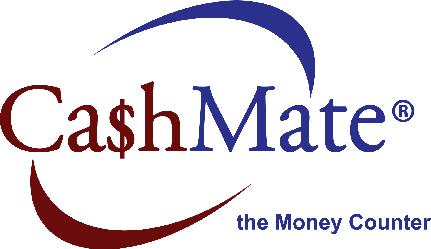
• 28. No, I’m taking a break from [whatever they asked you to do].
• 29. No, this is not in my wheelhouse.
• 30. No, and I do not know of anyone who would be a good fit for [role/ask/ request].
Learning to say no can be a lifesaver (or at least a mental-health saver). In her upcoming book, Burned, Bee explains that most entrepreneurs will have a brush with burnout at some point.
“Sometimes the catalyst for burnout is a big, unexpected event, like the resignation of a key employee or the death of a loved one,” says Bee. “But most often, burnout is brought on gradually as business owners take on increasing amounts of responsibility, both at work and in their personal lives. By the time they realize they’re juggling too much, it’s difficult to pull back.
“My point? The word ‘no’ is one of the most effective tools in your arsenal to ensure you don’t exceed


your bandwidth,” Bee concludes. “Remember, opportunities are rarely once-in-a-lifetime. ‘No’ doesn’t have to mean ‘no for all time.’ It can simply be a ‘no for now.’”

Julie Bee is the author of the upcoming book Burned: How Business Owners Can Overcome Burnout and Fuel Success. A business owner burnout strategist, Bee has been dubbed the “small business fixer” by her clients and peers. With over 15 years in the entrepreneurial field, she has solidified her reputation as a dynamic consultant, a riveting speaker, and a leader who sheds light on the darker side of business ownership. Having been celebrated by Fast Company and Forbes, her insights are in high demand across the industry. For more information, please visit https://www.thejuliebee. com/.
Burned: How Business Owners Can Overcome Burnout and Fuel Success (Matt Holt, June 2024, ISBN: 978-1-6377449-0-1, $28.00) is available for pre-order from major online booksellers.
• Count an entire cash drawer in less than one minute, including loose or rolled coins and bills.
• 100% accurate and never requires calibration
• Family-Owned Business
• Available in U.S. and International
• 24/7 Customer Service in the U.S.


Encountering difficult customers can test even the most patient of people - sometimes, it seems like nothing you can do will make them happy. Dealing with entitled customers is a complex situation that requires a consistent approach.
She wanted to return a cake that was almost gone. How bad could it have been? Normally, if something is spoiled or not up to standards, it’s returned almost intact. This thing was a pile of crumbs. But it gets better; she demanded cash, yelled at me, and started causing a scene. I hope she never comes back.”
“He brought his car in for a repair and demanded that we detail it at no charge. “You have no idea who I am!” Well, I didn’t. His car was a low-end luxury car. Our customers with real money don’t act like that. The entitlement oozed out of every pore in his body. I handled the situation, but he was horrible!”
Encountering customers with challenging behaviors— sometimes colloquially referred to as “Karens”—is an inevitable part of business. (Apologies to all of the very nice people in this world named Karen.) If not handled properly, interactions with these people can escalate and affect the morale of employees and the reputation of the business.
When something is wrong with a product or service, customers should complain, and businesses should do all they can to correct the problem. When customers cross the line, however, they require a different approach.
Don’t leave navigating interactions with entitled customers up to your staff to figure out. Entitled customers are not the regular run-of-the-mill challenge, and your staff needs to be ready to handle them.
While rules can seem restrictive on the surface, when thoughtfully developed, they can help employees navigate tough situations. Can they give away products? Under what circumstances are free upgrades allowed? In other words, where is the line?
A framework or model can provide guidance employees can access in real time if it’s something they’ve memorized and practiced. ACORN is such a tool.
Recognize the customer’s patronage and acknowledge any requests.
“So you want to have your car detailed while we repair it. We can accommodate. I have two packages: a light detail at $150 and a deep detail at $300. Which would you like me to add to your order?”
Customer: “I want you to include the deluxe detail at no charge. I’ve spent a fortune here.”
“And we appreciate your business.”
Clearly communicate what is possible within the company’s policies, setting realistic expectations for what services can be provided.
“Our detailing packages do

have a cost associated with them.”
Present the customer with viable alternatives or solutions, guiding them toward available choices that align with the company’s capabilities.
“Do you want either package, or should we hold off for another time?”
Repeat and reaffirm key points as necessary, especially in the face of persistent or unreasonable demands, to maintain a clear and consistent message.
Customer: “Are you deaf? I said I want you to include it. I spend a lot of money here.”
“Sir, I hear you, and we do appreciate your business. Detailing is not free or something we add in. Again, would you like to purchase a detailing package today?”
Steer the dialogue towards a positive outcome by focusing on constructive solutions, avoiding confrontation, and keeping the conversation on track toward resolution.
Customer: “I want a manager!”
“I can certainly get her.”
Whether it’s ACORN or something else, practice the framework with your employees before they need it.
Managers are managers for a reason. When customers cross the line, managers must be willing to step in and support their team.
“Mr. Green, I understand from Wendy that you’ve requested a deep detail package at no charge. Is that correct?”
Customer: “Yes. I spend a lot of money here, and it’s the least you can do. I’ve already wasted too much time on this.”
“As Wendy explained, we appreciate your business. As for the request for free service, that’s not something we can accommodate. Detailing services have a fee. Would you like to purchase a package?”
After a particularly difficult interaction with an entitled customer, it’s beneficial for the team to debrief and discuss what happened, what was handled well, and what could be improved. A review after the fact provides valuable learning opportunities and helps refine the organization’s approach to handling similar situations in the future. Collecting and analyzing feedback from these encounters can also inform potential adjustments to policies and procedures to better serve both customers and staff.
STEP FIVE: RECOGNIZE
Acknowledging and rewarding employees who effectively manage challenging interactions can significantly impact morale and motivation. Recognition can take many forms, from verbal praise in team meetings to more formal rewards like employee of the month programs. Celebrating these successes reinforces the value of skilled customer service and encourages continued excellence.
Dealing with entitled customers is a complex challenge that requires a thoughtful, consistent approach. You can navigate these difficult interactions more smoothly by equipping your team with clear policies and effective communication frameworks like ACORN. Additionally, be prepared to step in when needed. And when challenges arise, use each one to learn and grow as a team.

Kate Zabriskie is the president of Business Training Works, Inc., a Maryland-based talent development firm. She and her team provide onsite, virtual, and online soft-skills training courses and workshops to clients in the United States and internationally.
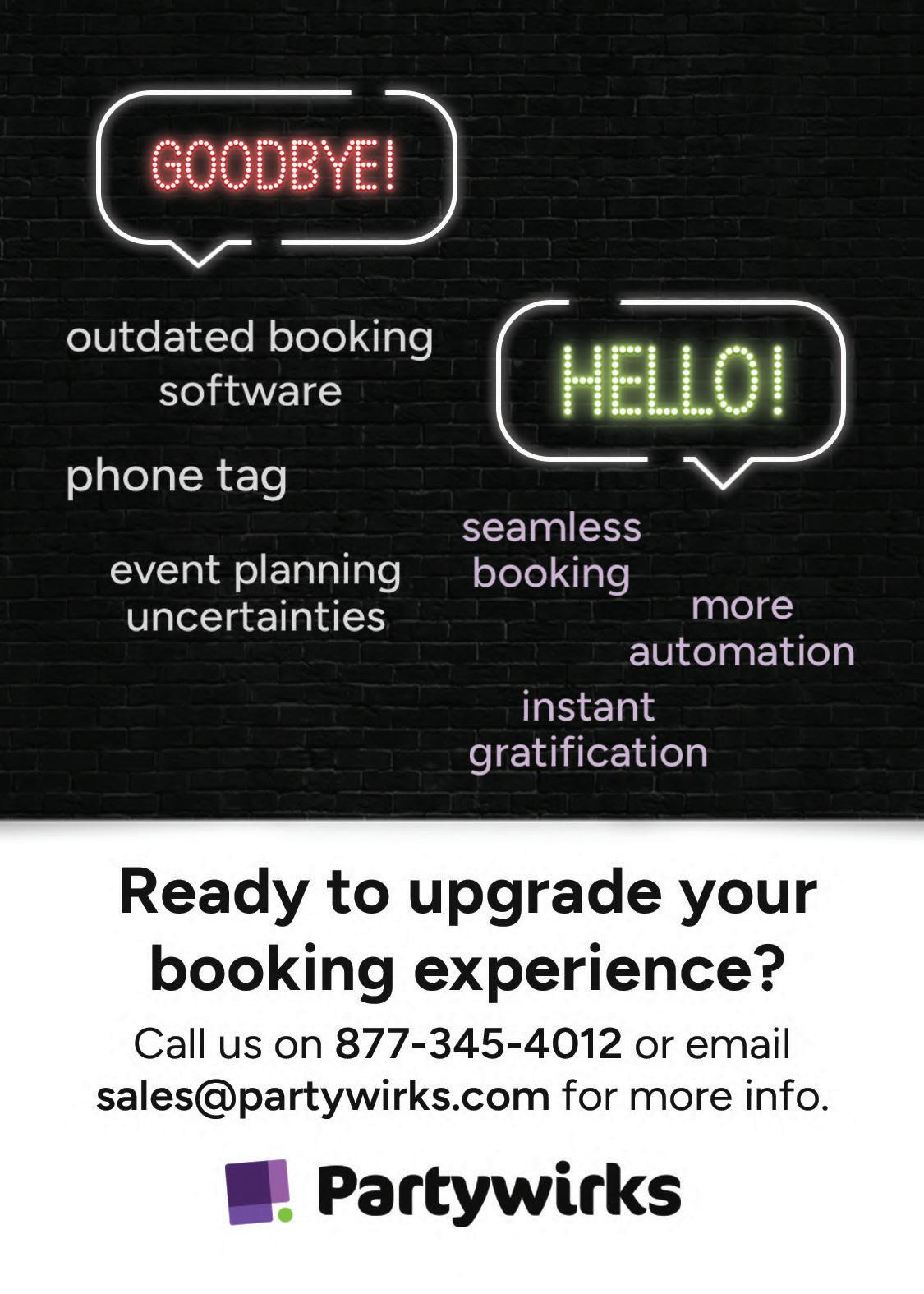






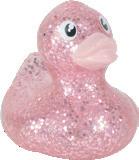


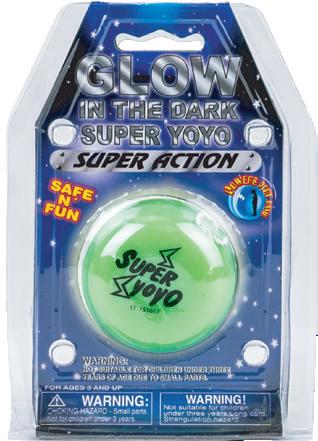
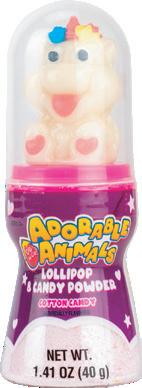

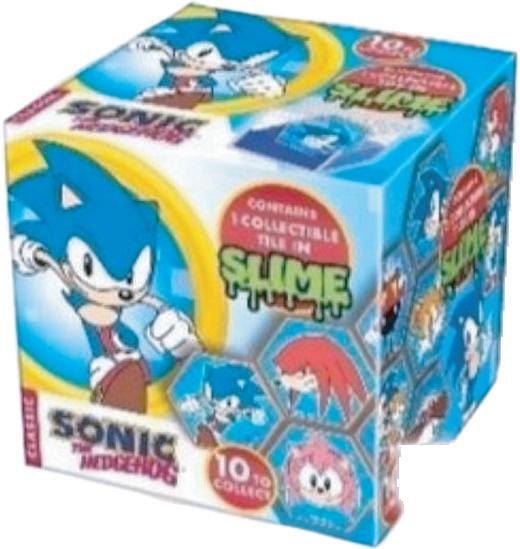


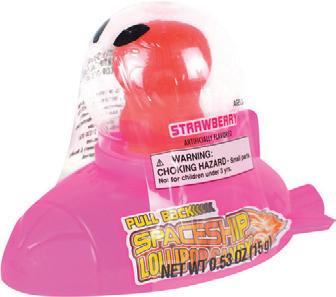
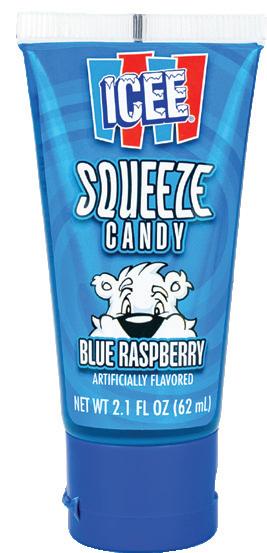




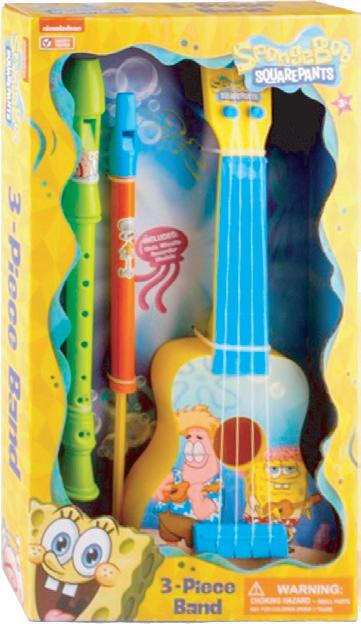



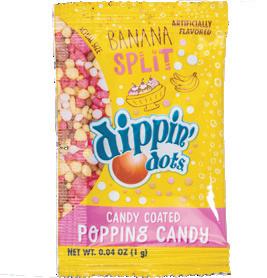

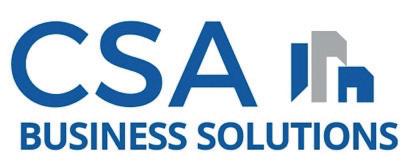
RSA’s only Preferred Merchant Account Provider
Does your credit card provider un derstand your business?
As a skating rink or family entertainment center owner, you know that your business is unique and your needs are complex.
As the RSA’s only Preferred Merchant Account Provider, CSA Business Solutions understands that.

We have been an advocate for our RSA business owners for several years.
We know many RSA members personally.
We have visited many of your rinks, worked with you over phone or email, and dealt with third-party vendors on your behalf.
We developed customized POS solutions unique to RSA members. We understand the complexities of online party booking, Kids Skate Free, the Stuff Shop, your eating centers, and all of the components that need to work together for your rink or FEC to run smoothly.
We
know what you need
That’s
and
we know how to save you money.
our job, and we are very good at it.
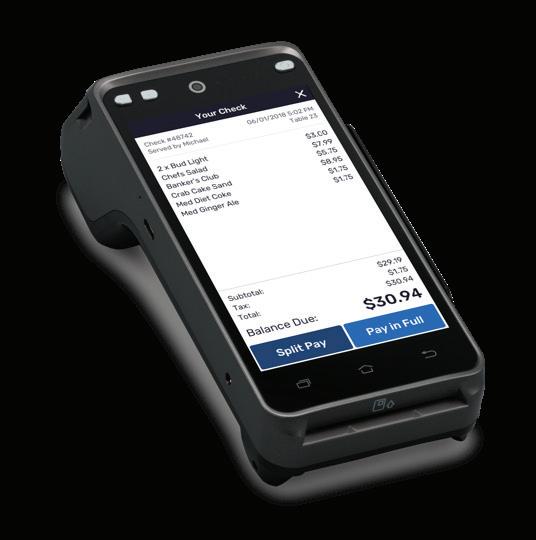

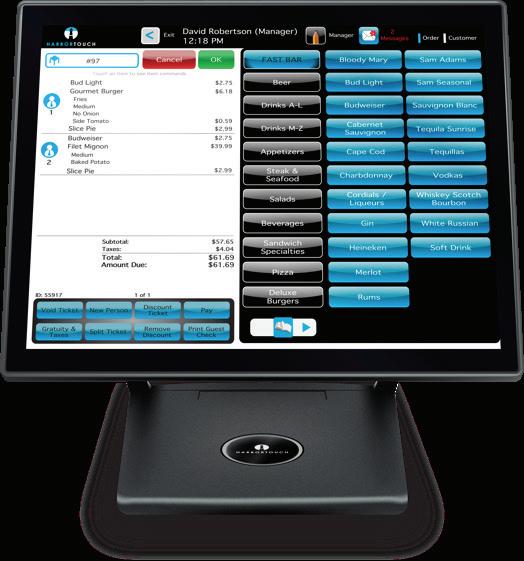
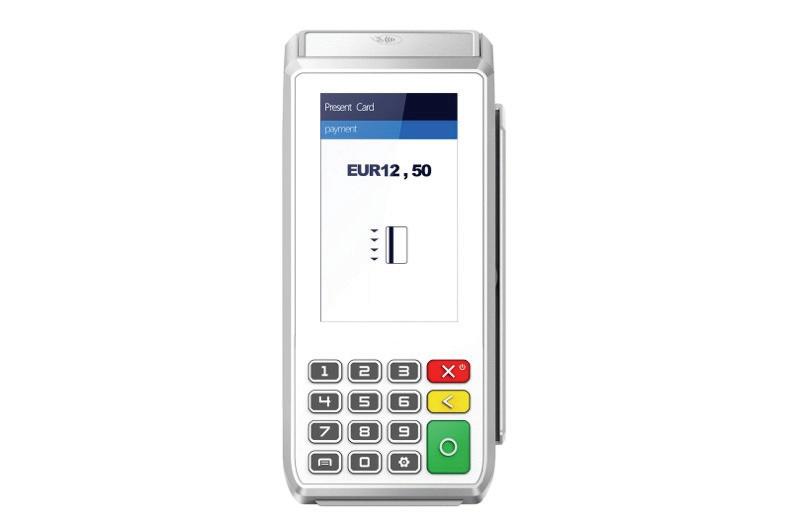











FREE TERMINAL PLACEMENT AND POS OPTIONS �������� �������� No Upfront Cost – as low as $29.00 Monthly! �������� �������� Powered by Shift 4: �������� �������� The Most Secure Payment Network �������� �������� The Processor Behind Most Las Vegas casinos and sports arenas! �������� Endorsed by the Industry Expert - Jon Taffer!





Every company is at risk for a public relations disaster. Robert L. Dilenschneider—who helped Johnson & Johnson manage the ExtraStrength Tylenol crisis—lays out six dos & don’ts to help you handle the situation in a way that spares your reputation and maybe even strengthens it.
Every leader hopes they never have to face a public relations crisis. That’s unrealistic, says Robert L. Dilenschneider. Any company that puts itself out there—no matter how cautious and how diligent its people are—can and likely will experience a mishap. Sometimes those mishaps are minor; other times they have deadly consequences. And thanks to the always-on nature of today’s media, how you handle your (inevitable) crisis will determine whether your reputation is destroyed or preserved and in some cases strengthened.
Dilenschneider, author of USA TODAY Bestseller The Ultimate Guide to Power & Influence: Everything You Need to Know (Matt Holt Books, July 2023, ISBN: 9781-6377429-3-8, $28.00), says the key to good crisis management is threefold: preparedness, responsiveness, and transparency.
“Crisis management is not just about handling the situation once it has happened,” he says. “It’s about foresight, anticipating potential crises before they occur, and having a robust plan in place to address them effectively when they do.”
The preparedness piece, of course, comes first. In his book, Dilenschneider quotes his colleague Jonathan Dedmon—who wrote a crisis communications chapter in the 2022 book The Public Relations Handbook, which Dilenschneider edited—on putting together a small and agile core team, taking inventory of past crises (to determine if they might recur), imagining future possible crises, and putting together a written plan for each.
“In a crisis, every second counts,” notes Dilenschneider. “Quick decision-making, clear
communication, and a unified message can make the difference between a company that survives and thrives and one that takes a serious hit to its reputation.”
With that in mind, here are a few things TO DO and a few things NOT TO DO:
DO: TELL IT ALL AND TELL IT FAST.
Some crises take hours, and some draw out for months. In the early stages, “the best strategy is to tell it all and tell it fast,” says Dilenschneider. “Be disciplined and know that nothing happens automatically. Making sure the core team is on the same concise page is very important, as mixed messages hinder the company’s ability to navigate the crisis.”

Johnson & Johnson’s handling of the Tylenol crisis remains the gold standard on what to do and is a case study still taught four decades later. Seven people had died in the Chicago area in 1982 after taking Extra-Strength Tylenol capsules that had been poisoned with cyanide. What set the company apart was how they responded: They recalled 31 million bottles of those capsules and replaced them all with a safer product free of charge.
“The outcome was Johnson & Johnson barely lost market share and customers,” reflects Dilenschneider, who was directly involved in developing a solution to this crisis. “After releasing their tamper-proof packaging—which changed the industry—they
Know the journalists who cover your industry. Feed a reporter something interesting (not self-serving) going on in your company or industry. Tip them off when a big announcement is about to be made, such as a change in leadership or relocation of headquarters. Answer calls and emails. Building trust in the good times will prove a valuable foundation in a time of crisis.
rebounded well, even if it did cost them almost $100 million.
“The point is this crisis could have been lethal, yet they were able to turn it into an opportunity to rebuild public trust instead of lose trust by getting out in front of the story, and putting their customers and public safety first instead of trying to spin the story,” he adds.
Besides moving quickly and transparently, make sure your message contains a heavy dose of empathy. As Dedmon writes, “It is a generally accepted rule that the best messaging has a strong emotional component versus simply a logical and rational argument.”
A few more tips:
• Talk from the viewpoint of your audience and to their self-interest.
• Avoid jargon and euphemisms. An explosion is not an incident.
• Tell the truth, even if it hurts. Don’t be defensive.
• If the media gets something wrong, correct it immediately.
• Never say, “No comment.” If the information is private— say, about personnel— explain the reason. Then find something else to say.
DON’T: TRY TO ESCAPE ACCOUNTABILITY AT THE EXPENSE OF YOUR CUSTOMERS’ WELL-BEING.
EXAMPLE: GENERAL MILLS SHRIMP TAIL INCIDENT
In March of 2021, podcast host and comedian Jensen Karp tweeted a photo of what he said he found in a box of Cinnamon Toast Crunch
► Serving as the RSA Endorsed Insurance Provider Sponsor
► Diamond sponsor at every Roller Skating Industry Event
► Kids Skate Free Sponsor
► Roller Skating Manufacturer Associate Member
► Sponsor of local RSA Chapter Meetings
► Roller Skating Museum Sponsor
► My Skate Repair Program Sponsor
► Risk Management assessments for all customers
► American Roller Sports Insurance Provider
JBL Trinity has a division of underwriting and claims managers dedicated to the roller skating and FEC industry. Thanks to the dedication of these skilled professionals, JBL is at the forefront of the industry. We provide a full menu of insurance coverages to meet your specific needs, including but not limited to: General Liability, Property, Liquor Liability, Employment Liability (EPLI), Builders Risk.
We hope that you will give JBL Trinity an opportunity to quote your roller skating rink or family entertainment center. Visit us on the web at www.skatinginsurance.com to fill out an application.
• $0 Deductible
• Additional Insureds
• Schools & PTAs
• Rides and Arcades
• Medical Payments
• Active Shooter Coverage
• Hired and Non-Owned Auto
• Boy and Girl Scouts
• Special Events
• Assault and Battery
• Sexual Abuse and Molestation
• Teams, Leagues and Roller Derby through American Roller Sports Program
Refer to the actual policy(s) for complete terms/conditions.
• HVAC Equipment Breakdown
• Replacement Cost
• Money - In & Out
• Ordinance or Law
• Hurricane and Wind
• $1000 Deductible
• Computer/EDP Equipment
• Crime Coverage
• Food Spoilage
• All Risk - Special
• Garages and Sheds
These coverages are provided by “A-rated” carriers that understand your business and provide the specialized coverages you need. Our industry-wide expertise and claims assistance completes your insurance protection at a price you can afford.

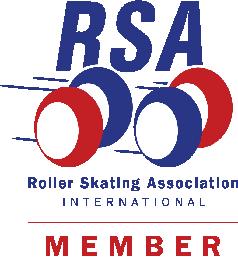
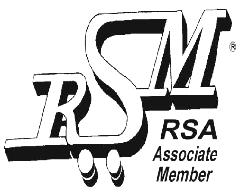
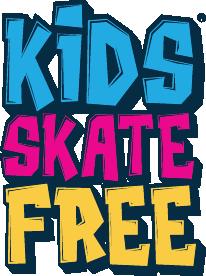

cereal: two shrimp tails. After offering to send Karp a replacement box of cereal, the social media team tweeted that those weren’t shrimp tails; they were cinnamon-sugar clumps.
Keep in mind that Karp’s tweet had included a photo, so thousands could see for themselves that the “accumulation” looked exactly like shrimp tails. As can—and does—happen in the Twitterverse, a flood of ridicule and memes followed. Soon, the shrimp tails leapt from Twitter to news stories in publications such as the New York Times, Washington Post, and Business Insider and broadcasts such as Fox News and CNN.
“The social media team for Cinnamon Toast Crunch should have responded with the alacrity and seriousness appropriate for a matter of consumer health, even if it couldn’t verify the contamination or quickly trace how it might have happened,” notes Dilenschneider. “In fact, one manager responded that it couldn’t have happened in his facility, which sounded like passing the blame, not reassuring customers.”
Bottom line: Instead of the ridiculous explanation of accumulated cinnamon sugar, General Mills could have responded by recalling all the boxes sold at Costco, where Karp had purchased his cereal. Stories like this live on via the internet, and if you Google “Cinnamon Toast Crunch,” you’ll see lots more sordid details.
DON’T: TRY TO SPIN THE STORY OR BE DISHONEST.
EXAMPLE: VOLKSWAGEN CRISIS
While Johnson & Johnson’s handling of the Tylenol scare is a model for the right way to address a scandal, Volkswagen provides the wrong way. They were accused by the EPA in 2015 of deliberately violating the Clean Air Act through software that permitted their cars to pass emissions tests that without the software would not. No one likes to be misled, and that includes the EPA.
The company executives bungled the response. They first lied about it, then later admitted they knew. Then they moved to lay off 300,000 workers. Although probably unrelated, the perception of it was that employees were being fired to make up for the loss in profit. In response, consumers took to social
media to charge the company with deliberately deceiving them.
“It takes a long time, if ever, to repair this type of damage to a company’s reputation and to rebuild trust,” says Dilenschneider. “In contrast to the Tylenol scare, Volkswagen’s executives’ response made things entirely worse.”
DON’T: TWEET “THOUGHTS AND PRAYERS” OR GIVE ANOTHER CANNED RESPONSE.
EXAMPLE: AMAZON TORNADO
In December of 2021, a tornado ripped through an Edwardsville, Illinois, Amazon warehouse, destroying it. Six people died. But instead of an immediate and appropriate response, Jeff Bezos’ first acknowledgment of the tragedy came as a tweeted statement twentyfour hours later and came across as insincere. The lesson learned here is that any statement’s wording is crucial. Part of Bezos’ tweet was “our thoughts and prayers are with their families and loved ones,” but apparently unbeknownst to Bezos, the phrase “thoughts and prayers” has become an overused line by politicians and others responding to mass shootings and other mass casualty incidents.
AND CERTAINLY DON’T: LEAVE THE DOOR OPEN FOR MORE TROUBLE!
EXAMPLE: AMAZON TORNADO (PART 2)
After the Edwardsville crisis, Bezos started his own tornado that would rip through Amazon and the country at large: Word came out that Amazon workers were allegedly forced to continue working through tornado warnings. OSHA investigated and found that Amazon had met the minimum standards, but it ultimately has remained a stain on the company’s reputation to this day. (It seems clear that when deadly natural disasters threaten, “minimum” isn’t good enough!)
DON’T: PANIC AND OVERREACT.
EXAMPLE: CHILEAN GRAPES VERSUS THE FDA
In 1989, the FDA came down on grapes imported from Chile—after being fed an anonymous tip. “The FDA inspector in Philadelphia made a special examination of a miniscule portion of the hundreds
of thousands of tons of fruit brought in daily,” says Dilenschneider. “Two grapes in 600,000 crates were found to be injected with cyanide.”
The FDA commissioner was about to ban the sale of Chilean grapes when a lawyer called Dilenschneider to help the Chilean government deal with the impending crisis.
“We went to work quickly and made sure the Chilean government was able to present a single, consistent position to the Department of Commerce, the Federal Trade Commission, and the FDA,” he explains. “We reinforced with the FDA the risk of inappropriately submitting to terrorist demands. The real villains were unknown, but the victims would be the American consuming public and the fruit growers of Chile.
“Fortunately, the danger to the public was not real,” emphasizes Dilenschneider. “If it had been, we would have handled the situation differently. We were able to convince the FDA to lift the ban, and then broadened the field of information to include the trade, the industry, consumers, and the media, and demonstrated the absurdity of being bamboozled by two grapes in 600,000 crates. We were careful, however, to never try to dismiss the public’s fear directly.”
Finally, says Dilenschneider, never dodge the media. If the crisis is a tragedy, then reporters will have to write or broadcast stories no matter what. You can’t completely control the narrative, but you can make sure the company’s message is heard.
“Build relationships with the media long before a crisis occurs,” he advises. “Know the journalists who cover your industry. Feed a reporter something interesting (not self-serving) going on in your company or industry. Tip them off when a big announcement is about to be made, such as a change in leadership or relocation of headquarters. Answer calls and emails. Building trust in the good times will prove a valuable foundation in a time of crisis.”
 ROBERT L. DILENSCHNEIDER
ROBERT L. DILENSCHNEIDER
Robert L. Dilenschneider, author of USA TODAY Bestseller The Ultimate Guide to Power & Influence: Everything You Need to Know, formed The Dilenschneider Group in October 1991. Headquartered in New York, Miami, and Chicago, the firm provides strategic advice and counsel to Fortune 500 companies and leading families and individuals around the world, with experience in fields ranging from mergers and acquisitions and crisis communications to marketing, government affairs, and international media.
Prior to forming his own firm, Dilenschneider served as president and chief executive officer of Hill and Knowlton, Inc., from 1986 to 1991, tripling that firm’s revenues to nearly $200 million and delivering more than $30 million in profit.
Dilenschneider was with that organization for nearly 25 years. Dilenschneider started in public relations in 1967 in New York, shortly after receiving an MA in journalism from Ohio State University and a BA from the University of Notre Dame. He has authored 18 books, including A Briefing for Leaders, The Public Relations Handbook, Decisions, and Nailing It.
For more information, please visit www.robertldilenschneider.com
The Ultimate Guide to Power & Influence: Everything You Need to Know (Matt Holt Books, July 2023, ISBN: 978-1-6377429-3-8, $28.00) is available at bookstores nationwide and from major online booksellers.
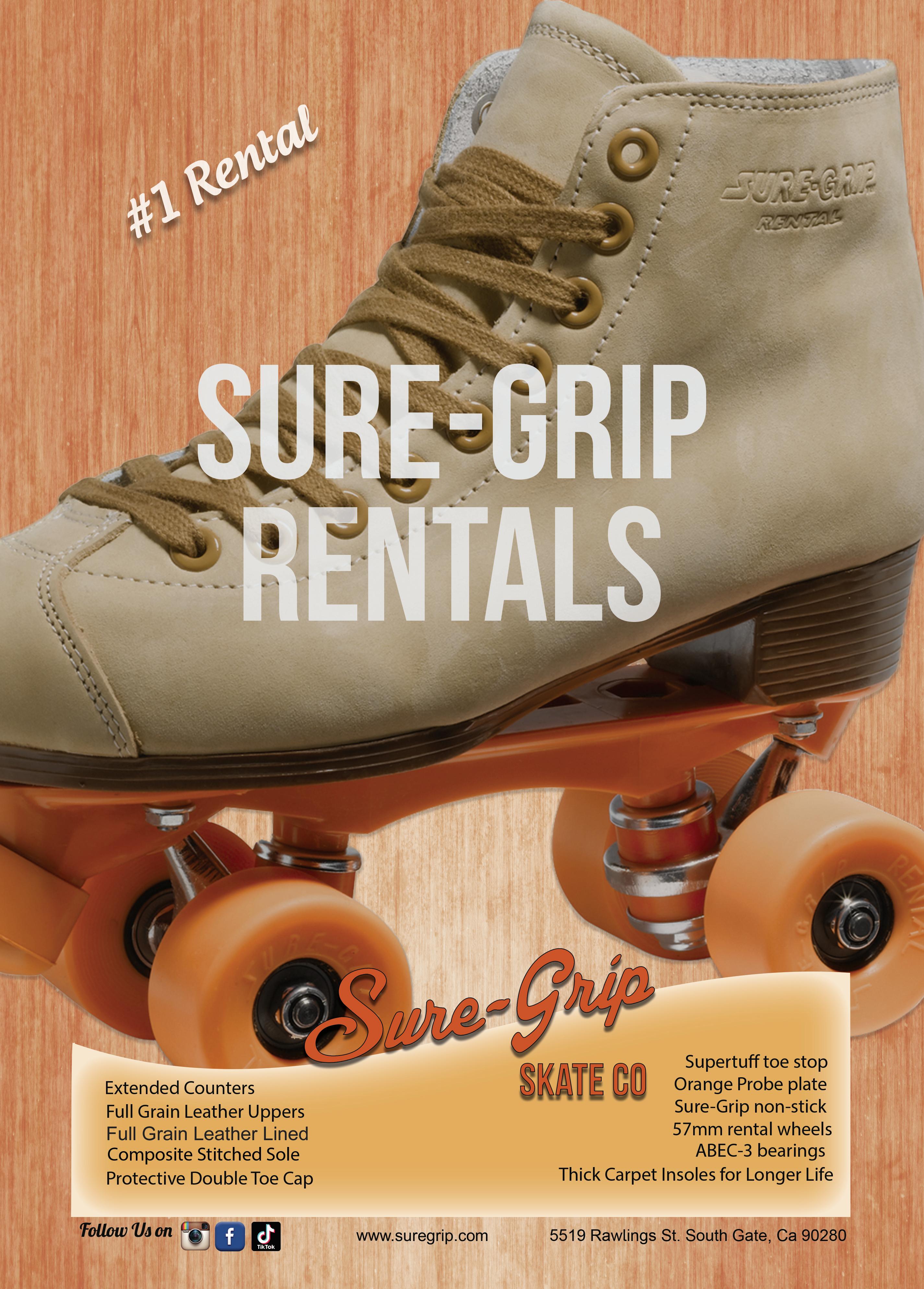
The National Museum of Roller Skating’s fundraising events are some of the sole means of raising funds for the museum. We encourage attendees to purchase raffle tickets or participate in the golf outing to support the history of roller skating.
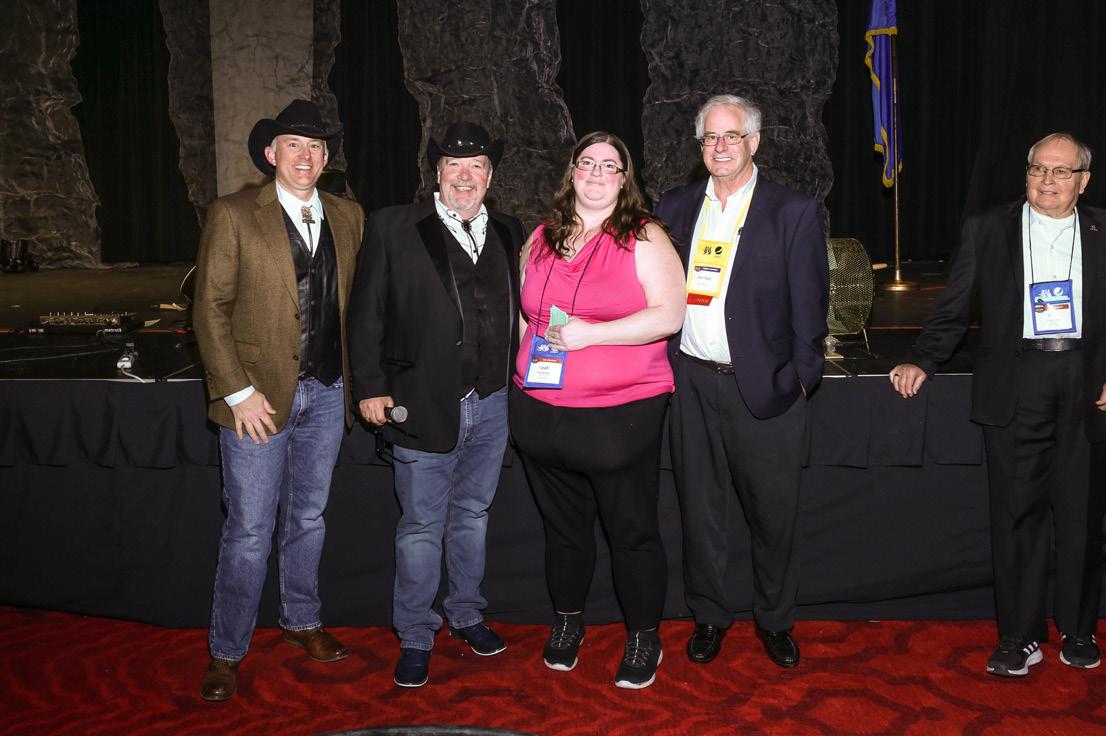
Pictured above in the center is the third place raffle winner, Leah McKinzie, from Skateland Fun Center in Union Gap, Washington, during the 2023 RSA President’s dinner at the RSA’s annual convention. Other individuals from left to right are Billy Thompson, Cort Wahlig, Kim Wall, and Eric
The Raffle at the RSA convention is the largest fundraiser for the year.
For each $50 ticket bought, $25 goes to the Museum, and $25 goes to cash prizes.
• 1st place 35%
• 2nd place 10%
• 3rd place 5%
Last year the top winner, Ethan
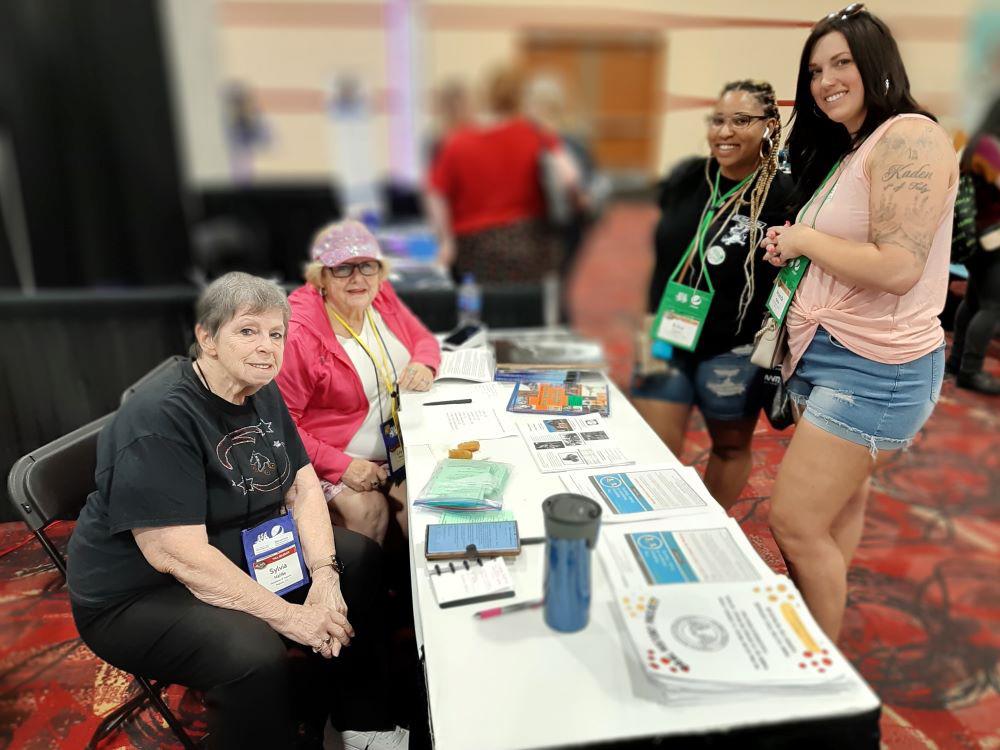
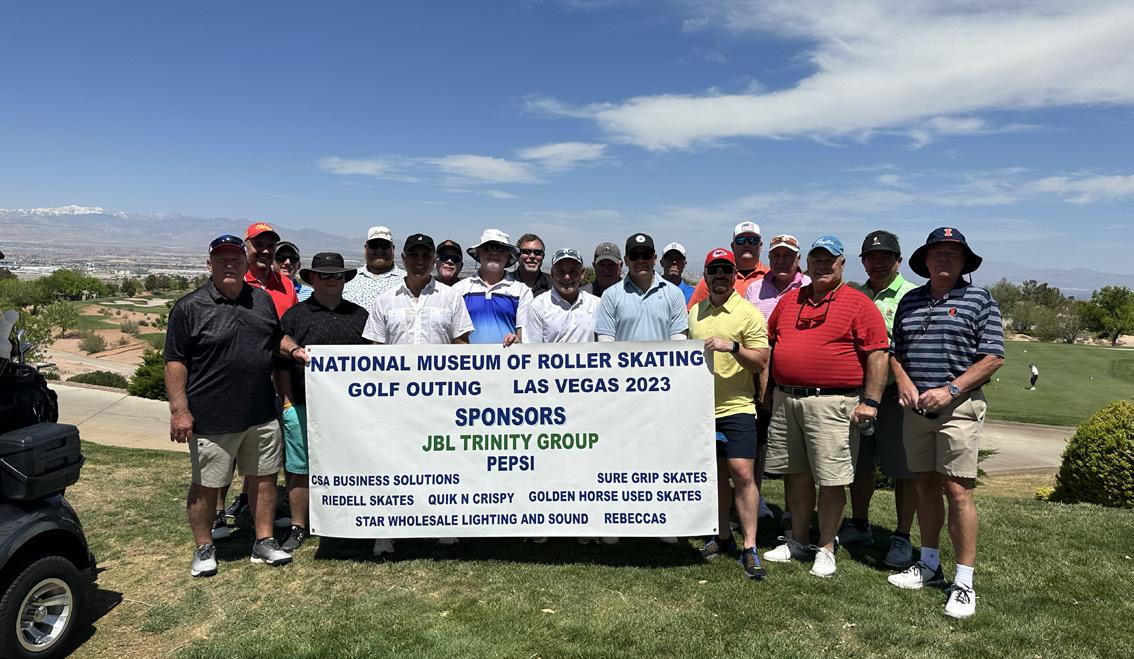
Housholder, won $5,845. 334 tickets were sold last year, the most in many years. RSA President Cort Wahlig was the number one seller.
Tickets can be purchased through any Museum or RSA Board member, at the Museum’s booth at the trade show, or at the President’s dinner. Pictured below from left: Sylvia Haffke and Linda Miner selling tickets at the Museum’s booth.
The Museum’s first golf tournament was spearheaded last year by Frank Torries who is repeating the event this year, just proceeding the RSA convention on Sunday, May 5. The following businesses contributed to this new fundraiser for the Museum in 2023: JBL Trinity Group, CSA Business Solutions, Star Wholesale Lighting and Sound, Sure Grip, Rebeccas, Riedell Skates, Quik n Crispy, and Golden Horse Used Skates. The following golfers donated and participated pictured above: Ralph Dunham, Anthony Profaci, Scott Riegelman, Tyler Havens, Jim Foulk, Luke Powell, Jim Ball, Steven Ball, Jeff Groban, Bob Housholder, Pat Savell, Joe Champa, Billy Thompson, Skip Clinton, Pete Morin, Doug Glass, Carter Malone, Ben Rohe, and Frank Torries.
For further information, contact Frank Torries at ftorries@gmail.com or call 337.278.8275.
If you did not attend the RSA convention and missed out buying a raffle ticket, there is another way you can give to the Museum. The annual Lincoln Day fundraiser occurs in May. The
Lincoln Community Foundation of Lincoln, Nebraska, will give each participating entity a portion of the $650,000 of funds available this year. Gifts will be matched proportionally based on dollars raised by each nonprofit.
Donations are accepted between May 1 and May 30. Go to www. givetolincoln.com and follow the prompts and type “National Museum of Roller Skating” in the “Find a nonprofit” search bar.

Alan Bacon is the director of Section 1 of the RSA, owner of Rollarena Skating Center in Richland, Washington, history teacher, treasurer of the National Museum of Roller Skating, and writer/editor of The National Museum of Roller Skating’s newsletter.
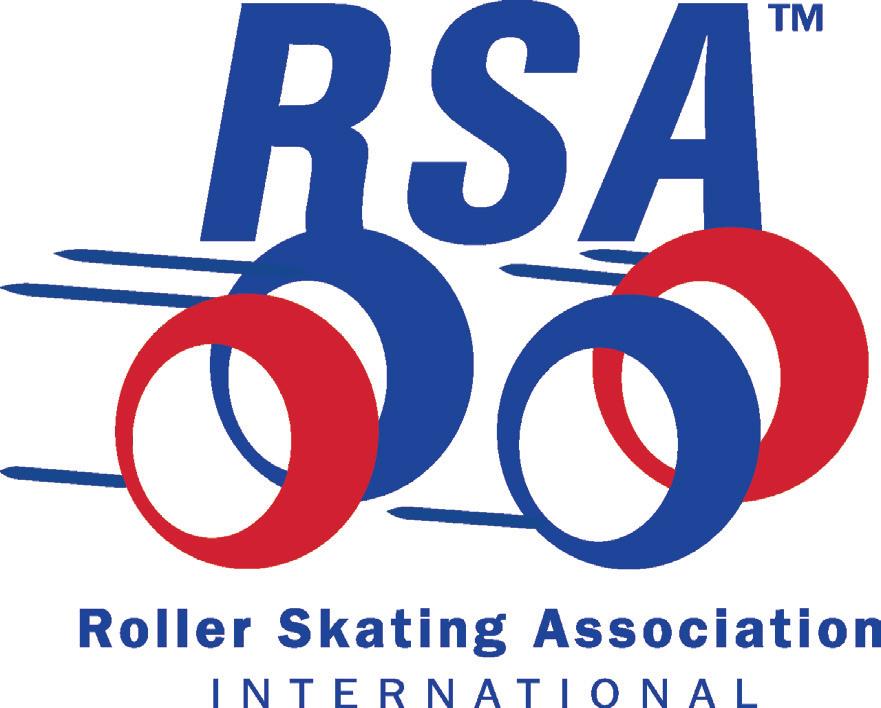
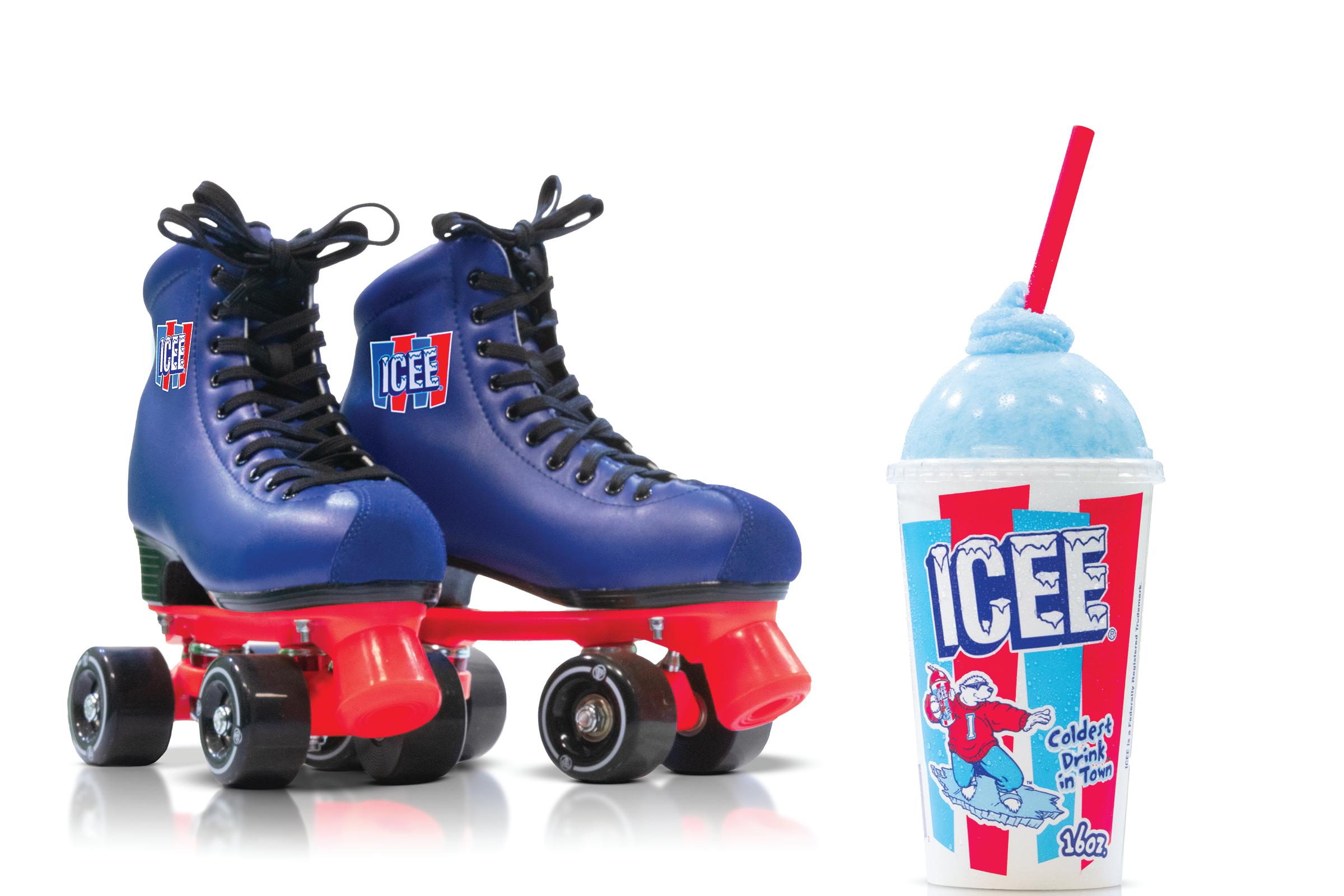

A turnkey solution to affordable healthcare for your team. At Meridio, we handle the administrative setup, online guidance and eduction from licensed experts, along with ongoing benefits support.


Pre-built ACA compliant health plans. No cost to you, no group minimums to access, and no underwriting
Every team member gets matched with the Customer Care team to oversee the ongoing relationship with Meridio. No admin setup required.

Personalized education, expert guidance, and single-point customer care for support Clear billing and continued value for each team member.
Helping to bridge the gap between The Marketplace and affordable care for business owners. Your success is our success.


Imagine you’re at a roller rink, breezing along to the rhythm of catchy tunes, when suddenly you encounter the business equivalent of a stray shoelace on the floor – the cumbersome, outdated booking system that trips up even the most seasoned rink operators. It’s that moment of unexpected friction that sends your smooth operation into a tailspin, much like an overenthusiastic skater on a Saturday afternoon.
This is where the sales funnel slides in, not just as a concept but as a game-changer in the roller rink world. Think of it as the ultimate pair of highperformance skates that every rink owner needs – designed to keep your business rolling smoothly, turning potential chaos into a streamlined path of effortless bookings and joyful celebrations. It’s about transforming the way you handle party bookings and private rentals, ensuring that every customer’s journey from interest to booking is as smooth as the rink’s polished floor
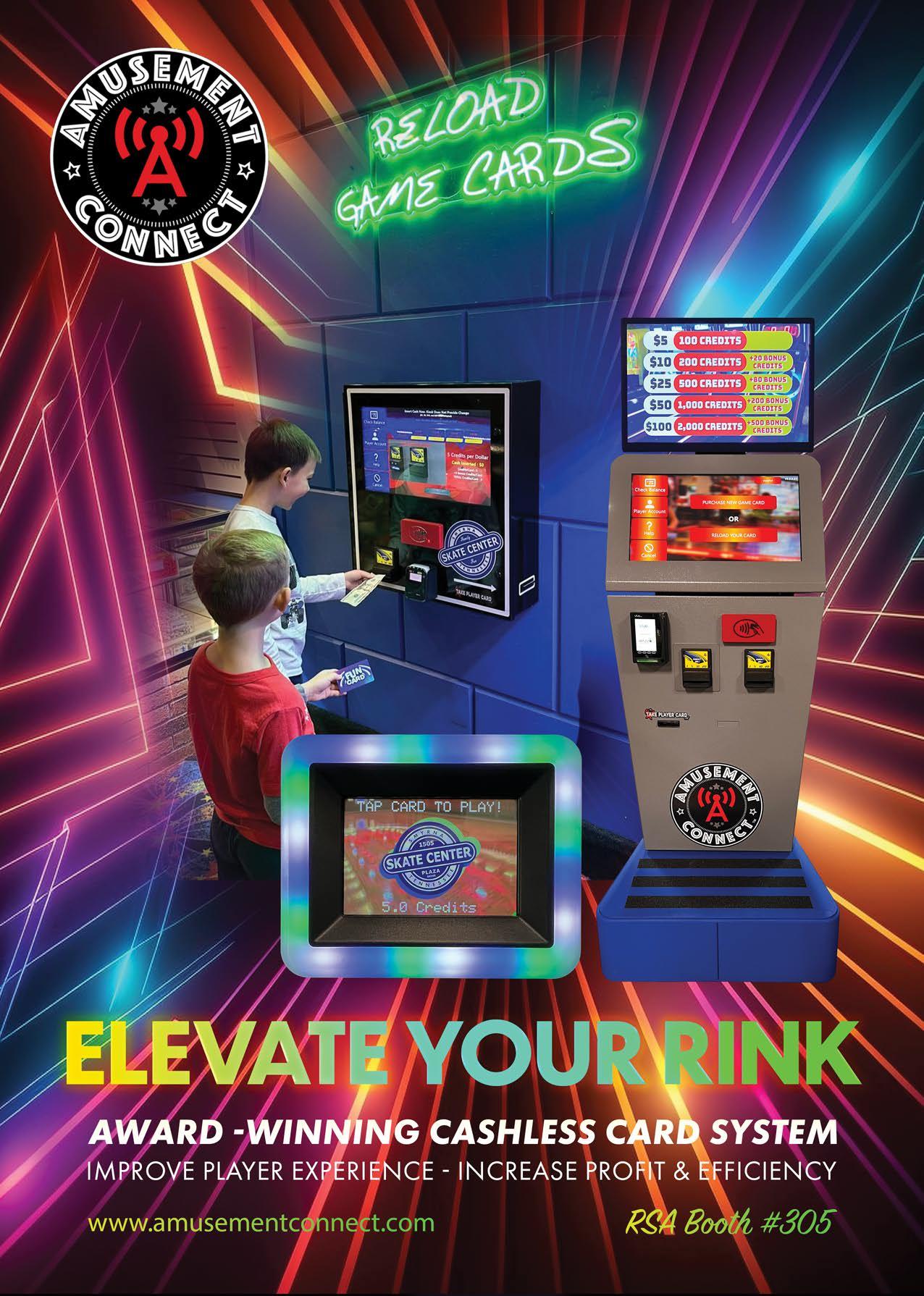
during a quiet morning session.
Sales funnels might sound like high-flying tech jargon, but in reality, they’re the behind-thescenes heroes, working tirelessly to ensure your rink is packed with happy patrons and non-stop parties. They take the heavy lifting out of customer acquisition, automating the process to free you up to focus on what you do best – creating unforgettable skating experiences.
Prepare to glide into a world where traditional rink management meets the sleek efficiency of digital automation. We’re about to embark on a whirlwind journey that marries the charm of roller skating with the cutting-edge tactics of online marketing, revolutionizing how you connect with your audience and fill your booking calendar. Fasten your laces; it’s time to discover how your roller rink can spin, twirl, and leap into the future of automated booking success.
Navigating the world of online marketing can sometimes feel like you’re skating backward in a roller rink: thrilling but a tad confusing. Let’s break it down with a spin around the rink, shall we? Picture your traditional website as the roller rink itself – it’s inviting, it’s got all the flashy lights and retro vibes, and it tells everyone, “Hey, come on in, we’re open!” It’s your online brochure, showcasing your rink’s shiny floor, the snack bar, and the neon-lit arcade corner. It’s static, though; it waits for visitors to explore and decide on their own, much like guests deciding whether to skate, play arcade games, or hang out by the snack bar.
Enter the sales funnel, the dynamic, proactive guide through the rink experience. It’s like having a personal party host who takes you by the hand the moment you step into the rink, leads you to the skate rental, shows you to the party area, and ensures you have the exact party package you want, all without you needing to ask where to go or what to
do next. This process doesn’t just make life easier for your guests; it transforms their entire experience, making it as streamlined and enjoyable as skating to their favorite tune.
In the roller skating realm, a sales funnel isn’t a mysterious vortex that sucks in customers and spits them out at the party table. Instead, it’s a well-choreographed jam skate dance, guiding customers from “Hmm, this could be fun,” to “Wow, that was easy, I’ve booked a party!” It streamlines the journey, from initial curiosity sparked by an engaging ad or social media post, right down to the satisfaction of securing a booking, complete with choices of pizza toppings or birthday cake flavors, all without human error or misheard phone conversations.
Perhaps you’ve imagined a sales funnel as a giant, actual funnel, where customers are poured in at the top and slide down through a confusing tube, only to be spat out bewildered and dizzy at the end, not sure what they’ve just signed up for. Instead, it’s more like guiding them smoothly from the entrance, past the rental skates, straight to the party room, where everything they wished for is ready and waiting, no mix-ups or lost bookings.
Imagine the roller rink is buzzing with energy, lights glimmering, music pumping, and the sound of wheels rolling smoothly on the wooden floor. Now, what if I told you that the same excitement could extend to your booking process? A sales funnel is a tool designed not just to keep the party going but to supercharge it, ensuring your calendar is as packed as your rink on a Saturday night.
Let’s paint a picture: a family is planning their kid’s birthday bash. In the pre-sales funnel era, they might stumble upon your website, get dazzled by the array of options, and then... hesitate. Do they call? Do they email? Or do they get sidetracked by a video of a cat on a skateboard? Here’s where the magic happens with a sales funnel. It’s like having a virtual party planner at their fingertips, guiding them from “just looking” to “let’s book!”
Think about the old-school method – perhaps a hefty ledger under the counter, its pages filled with scribbles of bookings, crossedout names, and double-booked disasters. Quaint? Sure. Efficient? Not so much. Now, replace that image with a sleek digital funnel, capturing the interest of party planners the moment they feel the urge to celebrate. No more missed
IN THE ROLLER SKATING REALM, A SALES FUNNEL ISN’T A MYSTERIOUS VORTEX THAT SUCKS IN CUSTOMERS AND SPITS THEM OUT AT THE PARTY TABLE. INSTEAD, IT’S A WELLCHOREOGRAPHED JAM SKATE DANCE, GUIDING CUSTOMERS FROM ‘HMM, THIS COULD BE FUN,’ TO ‘WOW, THAT WAS EASY, I’VE BOOKED A PARTY!’
calls, no lost emails, just a smooth transition from “We should do this” to “We’ve got it booked!”
Consider this scenario: It’s midnight, and a parent suddenly remembers they need to book their child’s birthday party. In the bygone days, they’d fret until morning, hoping they don’t forget again. But with your sales funnel, they can hop online right then and there, choose their date, select a party package, add a custom cake, and even pre-purchase party favors like glow sticks that the kids love – all confirmed in an instant. Come morning, they wake up to a confirmation email, not a to-do list panic.
It’s a win-win: the family gets a stress-free booking experience, and you secure a booking while you sleep. This is the sales funnel at its finest – turning the oncecumbersome process into a slick, streamlined, and oh-so-satisfying experience. And let’s face it, it’s infinitely more appealing than playing phone tag or deciphering handwritten notes from last week’s call.
So, as you consider the leap from the traditional, charmingly chaotic methods to the polished precision of a sales funnel, imagine the possibilities. More bookings, happier customers, and a calendar so full it’s like the VIP list at a roller disco. That’s not just growth; that’s a booking revolution, all thanks to the transformative power of a wellstructured sales funnel.
Envision a potential customer, let’s call her Jamie, who stumbles upon your website while daydreaming of her perfect roller disco-themed birthday party. She’s interested, clicks around, but then gets distracted. Maybe her cat just knocked over a plant, or perhaps her best friend called. Just like that, she’s gone, another potential booking vanished into thin air. Or is it?
Here’s where the sales funnel, your digital party-saving superhero, swoops in. Unlike the old days, where Jamie’s interest might have evaporated into the ether, the sales funnel gently grabs that lost opportunity by the metaphorical skate laces and pulls it back in. How? Through the subtle magic of automated follow-ups and personalized reminders that pop
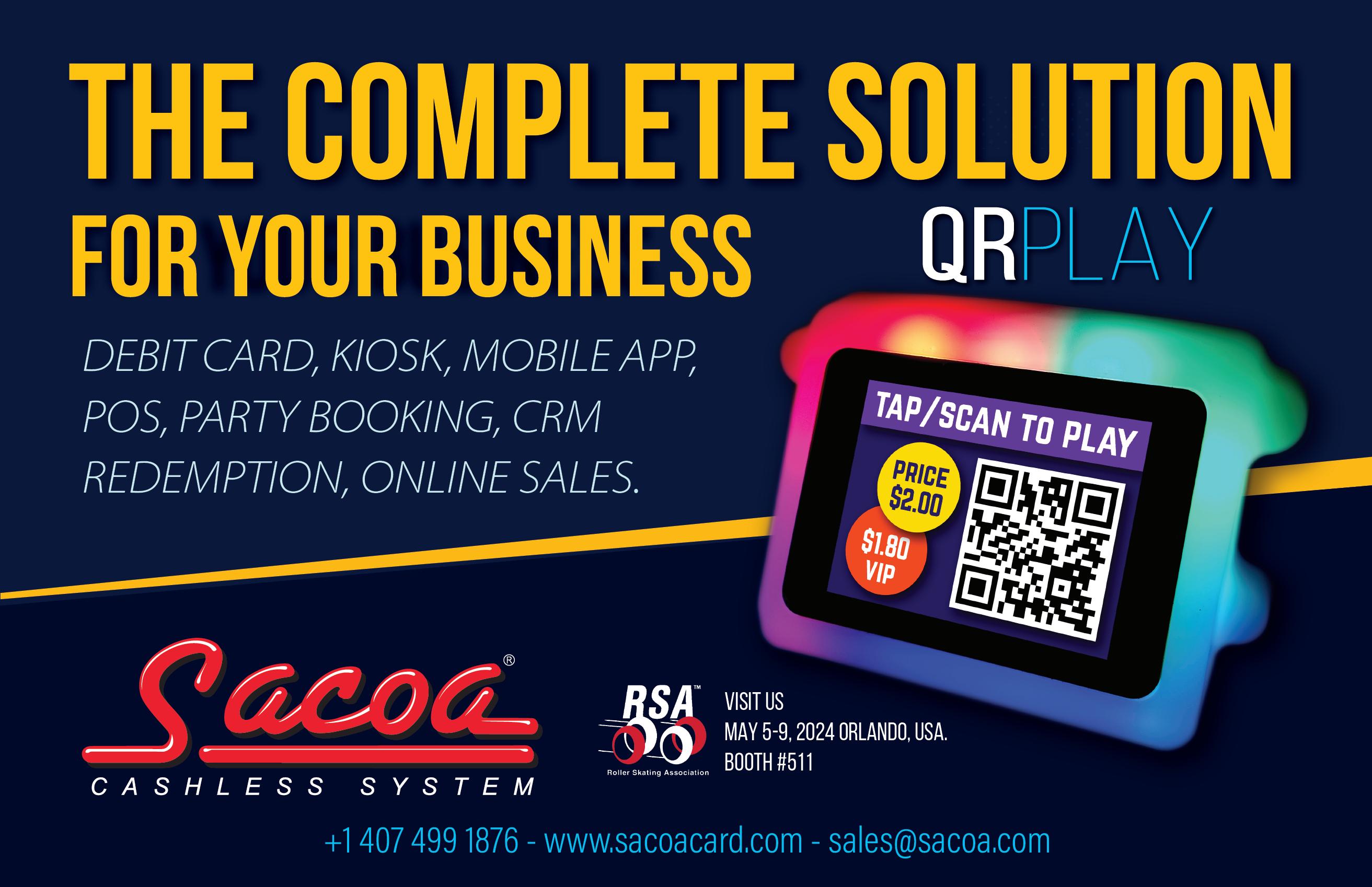

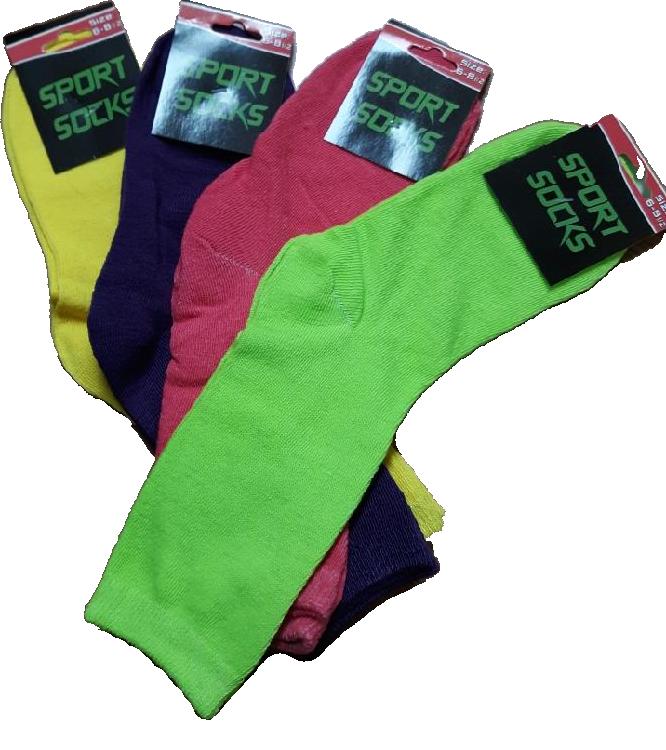

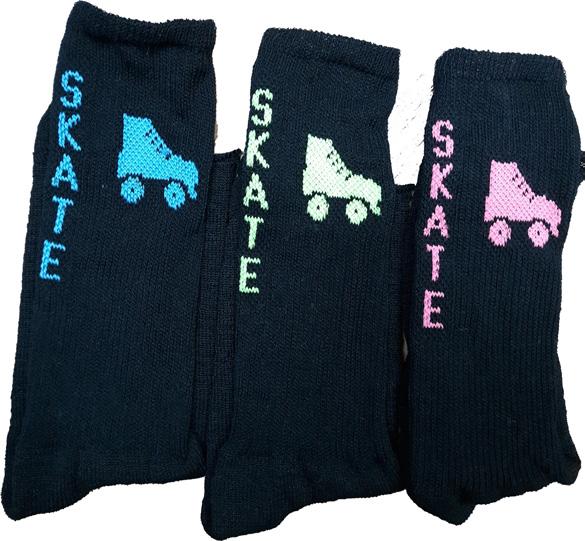



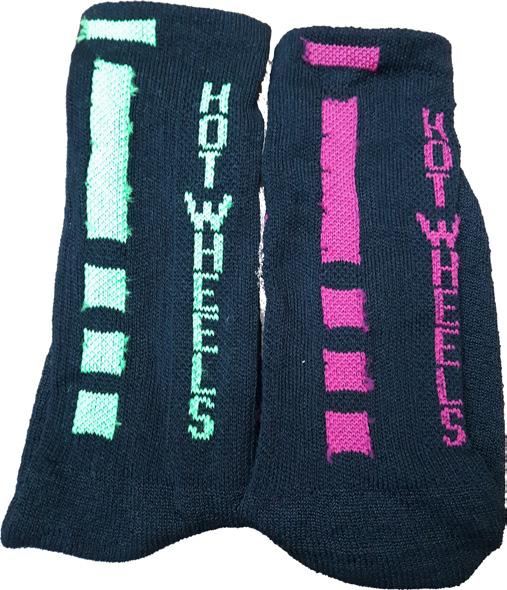
Has your blood pressure gone up talking to customer service? Do you feel irritated, annoyed, or just downright icky? The words designed to de-escalate and reassure through their overuse now function as lighter fluid - here’s how to ditch the jargon and speak to your customers on a human level.
Iunderstand your frustration.” Really? My bank account is overdrawn. I’ve bounced two checks, and it’s because you made a mistake. Unless you’re also having fees charged to your account, I’m not feeling it.”
“We apologize for any inconvenience this may have caused.” That’s what I was told after my flight was canceled at the last minute, stranding me in an unfamiliar city overnight. Had they pulled the plug earlier in the day, I would have had options. Inconvenience? The experience went well beyond inconvenience. I wasn’t cutting it close. I planned. Still, I missed my sister’s wedding rehearsal dinner—an irreplaceable moment. Their scripted apology infuriated me. I’m angry just thinking about it.
“Thank you for your patience.” Patience? My internet has been down for three days, affecting my ability to work from home. I’ve called customer service several times and get the same line every time. My patience isn’t a virtue; it’s a necessity forced by the situation, and their gratitude feels mocking when what I need is action and answers.
Being “customer serviced” is a familiar scenario for many of us—it occurs when service providers rely on a series of well-worn phrases to pacify and calm us, and they end up achieving exactly the opposite effect.
• “I understand your frustration.”
• “I apologize for any inconvenience.”
• “I appreciate your patience during this time.”
• “Thank you for bringing this to my attention.”
• “We value your feedback.”
Has your blood pressure gone up? Do you feel irritated, annoyed, or just downright icky? The words designed to de-escalate and reassure through their overuse now function as lighter fluid.
Shifting from scripted interactions or customer service speak to a more conversational approach can transform frustrating customer experiences into fulfilling ones. By communicating naturally and addressing issues directly, you can avoid “customer servicing” the very people you’re there to help.
Here are five tips to help you break free from scripted support and connect with customers on a human level:
Jargon creates a distance between you and the customer. Phrases such as “we understand your frustration” are often overused and lack sincerity. By avoiding jargon and focusing on specific details of the customer’s situation, you show you’re truly listening and empathizing with the experience.
• Instead of: “We understand your frustration.” (Overused!)
• Try: “What you’ve just described should not have happened. I can help.” (Emphasizes empathy and action.)
Scripted phrases such as “per our policy” sound robotic and shut down conversation. They can also make customers feel powerless. Instead, use natural language to explain the relevant policies or procedures. Frame it as a collaborative effort to find the

best solution, outline the options available, and work with the customer to find the most suitable path forward.
• Instead of: “Per our policy...” (Sounds robotic)
• Try: “Let me go over the options we have available in this situation...” (Collaborative and informative.)
Active listening is key to truly understanding the customer’s needs. A generic “So what you’re saying is” shows that you’ve heard, but it doesn’t necessarily show that you care. By asking specific questions that demonstrate you’ve been paying attention and are digging deeper to understand the root cause, you demonstrate genuine interest in resolving their issue quickly and efficiently.
• Instead of: “So what you’re saying is...” (Generic)
• Try: “Thanks for explaining that. To make sure I have everything clear, could you tell me a bit more about what happened with [Specific detail from the customer’s explanation]?” (Shows genuine interest and encourages elaboration on a specific point.)
A personal touch goes a long way. Using customers’ names and acknowledging their specific situation shows that you care about their experience. It also demonstrates initiative by offering further assistance before they even ask.
• Instead of: “Your reference number is...” (Impersonal)
• Try: “I’ve created a reference number for you, [Customer Name], so you can easily track the issue online as we’re troubleshooting in the background.” (Adds a personal touch.)
While apologies are important, focusing solely on them doesn’t solve the problem. Empower the customer by offering concrete solutions and outlining the steps you’ll take to fix the issue. A solid plan shows initiative and demonstrates that you’re committed to resolving the situation in their favor.
• Instead of: “We’re sorry for the inconvenience.” (Doesn’t solve problem)
• Try: “Here are a few ways we can fix it...” (Empowers customer)
By adopting these five practices, you can ensure your interactions are engaging, sincere, and helpful, and that none of your customers feel as they’ve been “customer serviced” by you.

Kate Zabriskie is the president of Business Training Works, Inc., a Maryland-based talent development firm. She and her team provide onsite, virtual, and online soft-skills training courses and workshops to clients in the United States and internationally. For more information, visit www. businesstrainingworks.com.



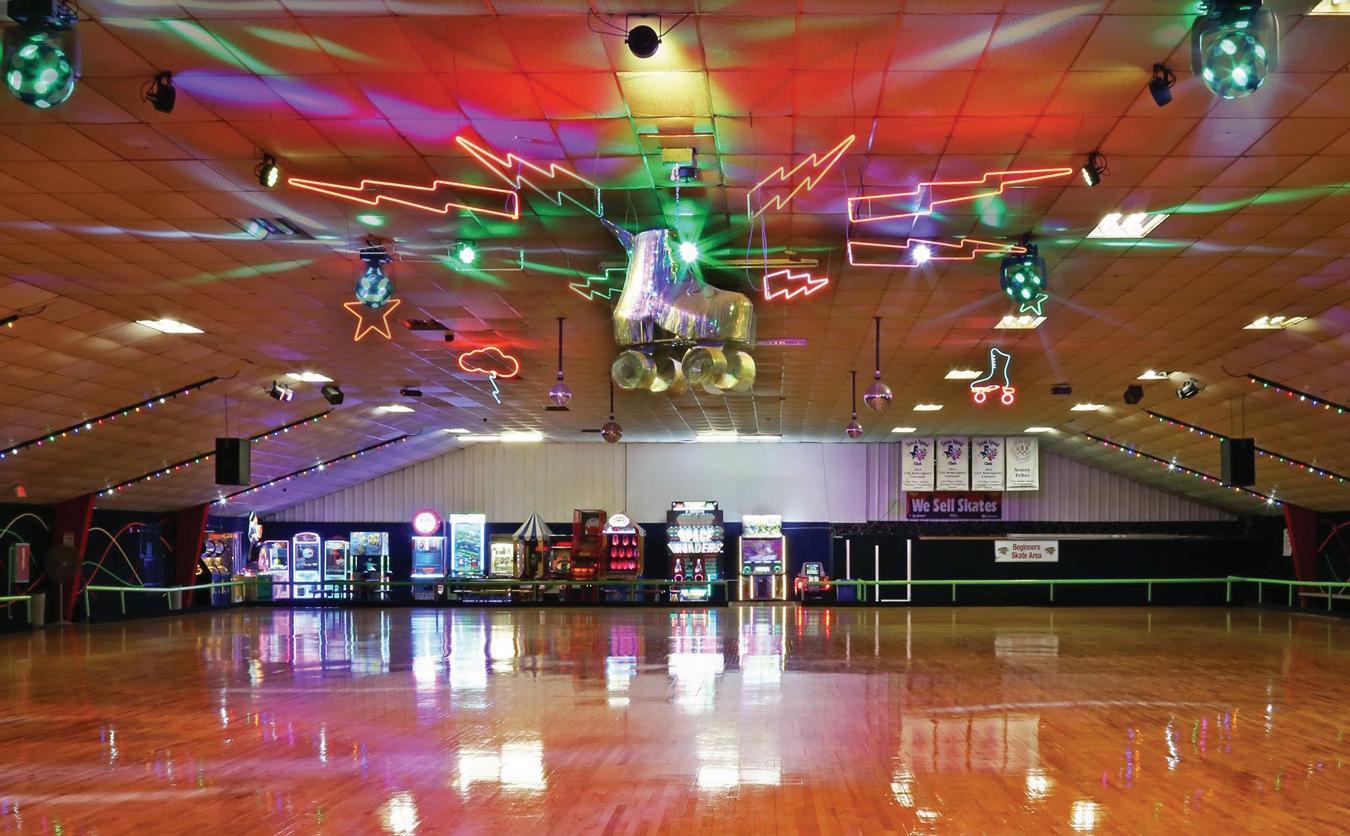












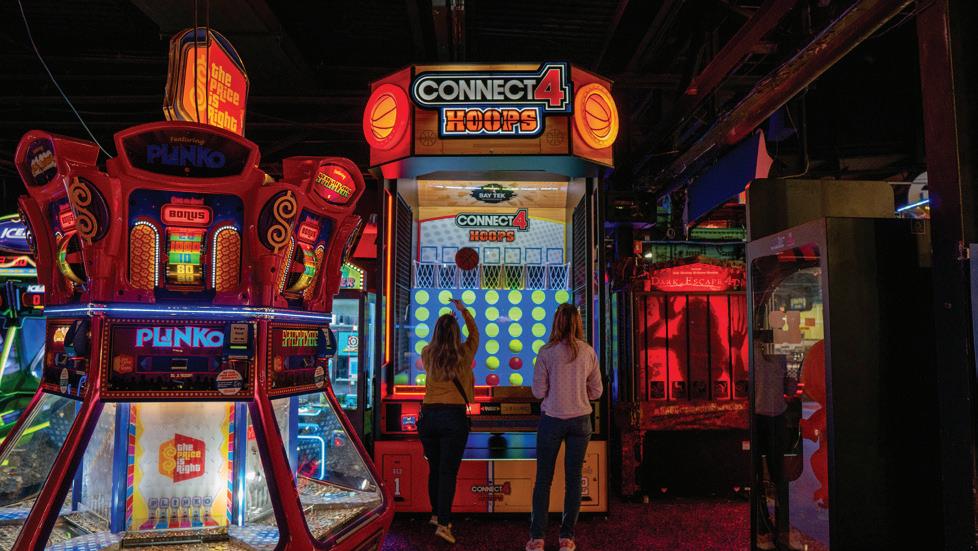




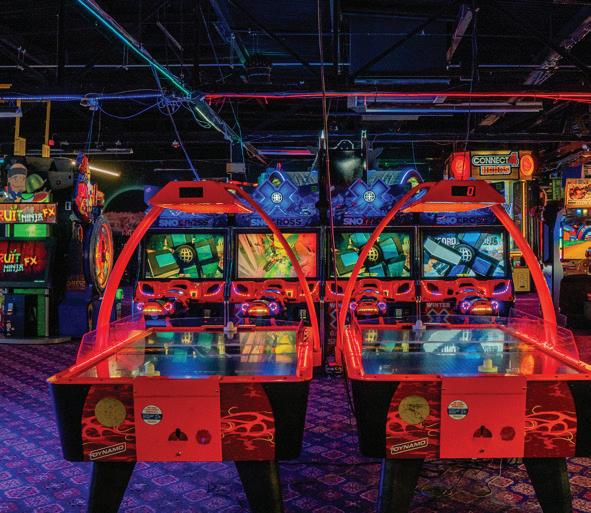





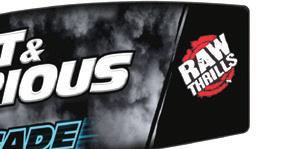












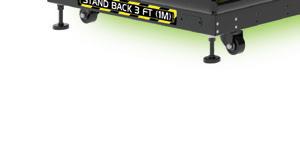









Knowing the trends in social media marketing can mean a world of difference in how you reach your target market. Christopher Rokosz attended the Social Media Marketing World 2024 in San Diego, California to bring you the top tips of advice for your rink.
Irecently attended Social Media Marketing World 2024 in San Diego where I learned the best marketing strategies from the world’s top experts to distill down to the most important information and bring it to you.
What does this mean?
We used to judge the effectiveness of campaigns by how much interaction a post would get, such as likes, comments, and shares. Now, it’s all about retention rate or how long someone stays with your content.
Why is this important?
Because it impacts your ability to reach customers.
The goal of a great organic social media campaign is to make the algorithm happy; it’s just that simple. Making the algorithm happy is different from chasing it, beating it, or hacking it.
In the past, the algorithm said that if people liked and shared something, then other people might like it, too.
Now, it looks at how long somebody stays on a particular piece of content.
It’s called “Hang time,” and it is what’s driving reach on social media today.
The algorithm looks at how long each user stares at a piece of content, which impacts whether it recommends it to others.
If you’re not getting many likes, shares, and follows, that’s OK. What matters is how long people stay with your content.
Tip: Start with your best visuals
first to pull the viewer in
You want to make content that engages people for at least three seconds; that’s the magic number.
(The big one)
AI is trending in every department of every industry, and its capabilities are almost magical.
It will disrupt everything. Ask it to write something, and it will. Ask it for a photograph, and it will create it.
Right now, the key to artificial intelligence is to stay focused on your goals and workflows. Don’t let the AI tools lead you; you have to lead the tools.
Example: If you were to sit down and write a flyer for an upcoming event, you might ask Chat GPT to give you a starting point. It doesn’t make sense to start with a blank piece of paper anymore.
The mistake would be not carefully editing the results.
AI is going to create endless amounts of sterile, lifeless content, and real humans will be able to pick up on it quickly, and they’re going to reject it.
Use it to help you create content; don’t use it to create content. Use it to come up with script ideas; don’t use it to create synthetic photos.
Let the AI make what you already do better.
Don’t chase it.
Not all trends are new.

Social media platforms WANT VIDEO. Short form, vertical video. They want it bad, are happy when they get it, and will reward you for it with greater reach.
Tip: 90%+ of your posts should be videos.
The only reason it isn’t 100% is that, believe it or not, the algorithm also values a little bit of variety and doesn’t like to see 100% of any one thing.
Scrolling vertical videos, whether they’re called reels, shorts, or TikToks, are their own thing. They are powerful and addictive, and they are where all the focus and attention inside the social media companies is right now.
You don’t have to like it.
If you’ve ever scrolled reels, short videos on YouTube or TikTok, you can feel it sucking you in.
These things aren’t great for society, but it’s where your customers are, and as marketers, it’s our job to create content that our customers like, not what WE like.
Challenge: Make great shortform video content while you’re at the RSA Convention or at your rink this weekend and post it. This should be easy; you guys are in the business of fun!
Don’t worry about likes and comments, worry about watch time.
Leave the AI to make jobs easier for you, don’t be led by the technology.
Make engaging short form video, post often, monitor video insights, adjust your content strategy, and repeat.

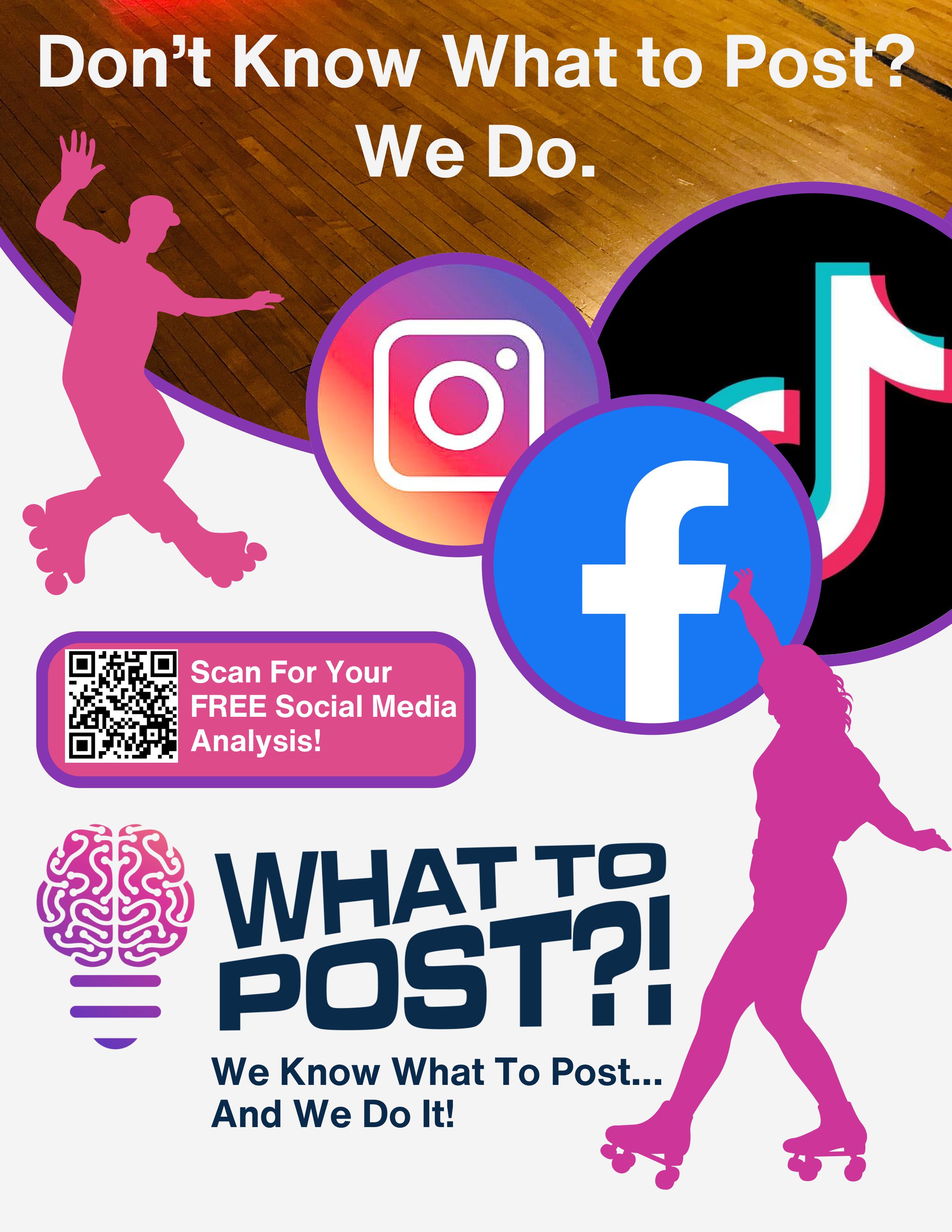
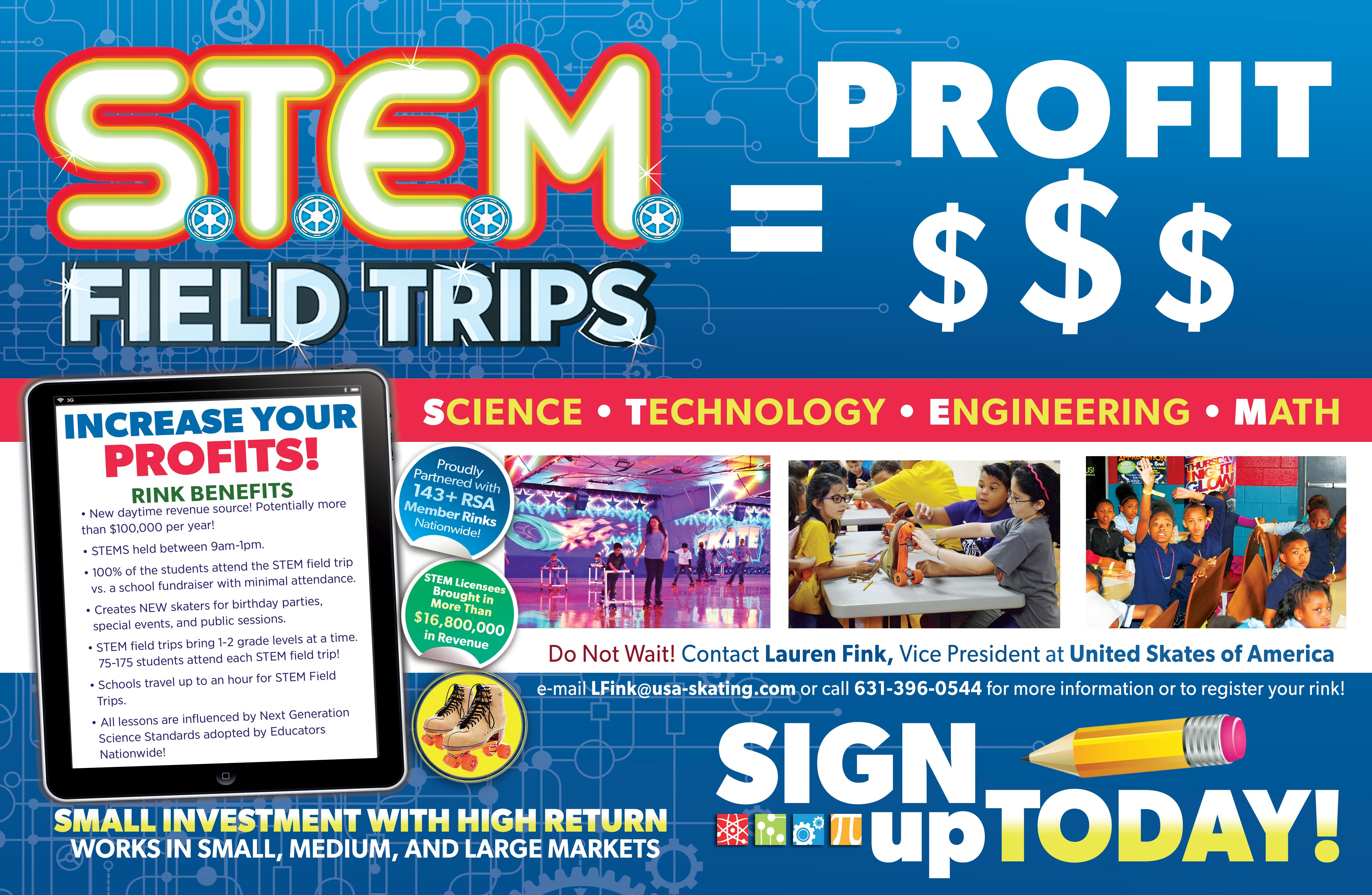



AUGUST 26 - 28, 2024
Plus, a 3-night Bahamas & Perfect Day Cruise Before Sk8 Expo with Fellow Members!






SCAN TO LEARN MORE
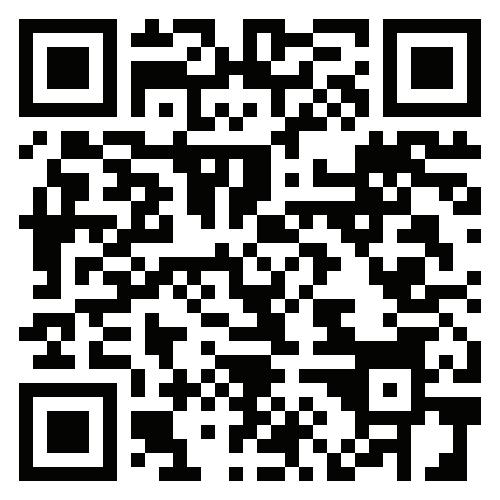




CLICK ON “SCAN TO LEARN MORE” BELOW TO LEARN ABOUT THE SHIP, BOOKING INFO AND GROUP NUMBER.




SCAN TO BOOK YOUR ROOM




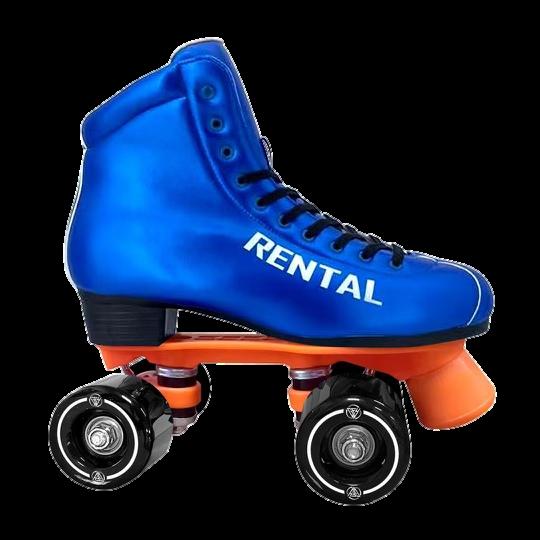



Critically evaluate new opportunities. Once you’re ready to “un-pause,” ensure that you have a better system for evaluating requests and opportunities. Your goal is to be more intentional and less reactive. You might want to write down a list of questions like:
• Do we have the time/ resources/knowledge to do this?
• Will it generate revenue? If so, how much?
• Does it align with our core business values?
• How will it differentiate our company?
• Will it help us grow or just keep us busy?
• Does this opportunity energize me and/or my employees?
• Who is pushing hardest for this: internal or external stakeholders?
• Am I trying to appease someone else?
• What is the cost of saying yes? (In other words, what might we have to say no to?)
“At first it may feel uncomfortable to say no to opportunities you would have taken on in the past— but push through that feeling,” encourages Bee. “Steve Jobs said it best: ‘People think focus means saying yes to the thing you’ve got to focus on. But that’s not what it means at all. It means saying no to the hundred other good ideas that there are. You have to pick carefully.’”
“Implementing these tactics (especially saying ‘no for now’!) will probably feel uncomfortable or downright scary—but the process is worth it,” concludes Bee. “By temporarily taking a step back from your frantic pace, you are giving yourself the space to figure out how to sustainably propel your
FUNNELS - CONTINUED FROM PAGE 40
up in her inbox, whispering, “Hey, remember that awesome party you were going to book?”
Let’s get whimsical and picture our sales funnel as a friendly, neonclad roller rink host. Jamie, after initially drifting away, receives a personalized email, perhaps with a subject line that twinkles with nostalgia, “Ready to roll back to the fun?” It’s like the host is reaching out through the screen, offering a helping hand (or skate) back to where the party planning began. This isn’t just any email; it’s a tailored message, complete with details of what she viewed, maybe even a special offer or a gentle nudge saying, “Your perfect party date is still available!”
The beauty of this system isn’t just in its ability to recapture wandering minds but also in its capacity to gather precious data and insights. Every click, view, and hesitation is a story, a piece of the puzzle that the sales funnel uses to refine its approach. It’s like having a behind-the-scenes documentary of your customer’s journey, showing you exactly where they got hooked, where they hesitated, and what ultimately convinced them to book.
Through playful visuals in the
business two, three, or more steps forward—in a direction and on a timeline that’s best for you and your employees.”
 JULIE BEE
JULIE BEE
Julie Bee is the author of the upcoming book Burned: How Business Owners Can Overcome Burnout and Fuel Success. A business owner burnout strategist, Bee has been dubbed the “small business fixer” by her clients and peers. With over 15 years in the entrepreneurial field, she has solidified her reputation as a dynamic consultant, a riveting speaker, and a leader who sheds light on the darker side of business ownership. Having been celebrated by Fast Company and Forbes, her insights are in high demand across the industry. For more information, please visit https://www.thejuliebee. com/.
Burned: How Business Owners Can Overcome Burnout and Fuel Success (Matt Holt, June 2024, ISBN: 978-1-6377449-0-1, $28.00) is available for pre-order from major online booksellers.
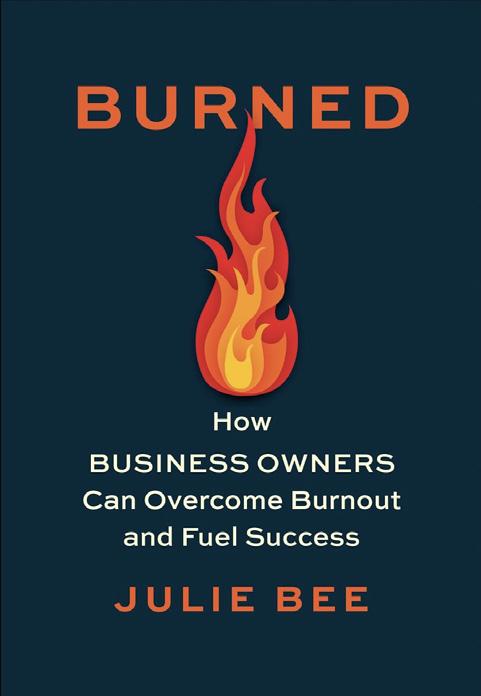
emails, like confetti popping around a “Book Now!” button or a gif of someone gleefully skating, the funnel doesn’t just communicate; it entertains and engages. It turns the mundane act of booking into an extension of the party itself, complete with the promise of fun and an easy path back to completing their reservation.
In the grand tapestry of your roller rink’s world, each lost lead is a thread, waiting to be woven back into the vibrant pattern of booked events and happy guests. The sales funnel, with its automated reminders, personalized outreach, and insightful analytics, is the loom that keeps those threads connected, ensuring that no potential party goes unnoticed and every celebratory wish is granted the chance to become a reality.
As we circle back to the essence of our journey, it’s clear how a sales funnel can revolutionize your roller rink’s booking system, transforming potential chaos into a streamlined symphony of bookings, celebrations, and unmatched customer satisfaction. This isn’t just about keeping up with the times; it’s about propelling your rink into a future where every inquiry is a
potential party, every click can lead to a celebration, and your calendar is as packed as a rink on a Saturday night.
Consider the seamless transitions and automated ease a sales funnel introduces, much like the smooth glide of a well-practiced skate routine. It’s time to reevaluate your booking strategies, envisioning how this digital transformation could enhance your operational harmony and elevate customer experiences. Imagine the possibilities, the increased bookings, the saved time, and the elevated customer journey that awaits. Embrace this opportunity to modernize your approach, ensuring your rink remains the go-to spot for unforgettable skating parties. Let’s roll forward with innovation, making every booking an effortless victory lap.

Crystal Silvas, certified master marketer and the founder of Skate Pulse Media, skillfully blends her marketing acumen with a lifelong passion for roller skating, revolutionizing promotional strategies for the roller rink industry. With 17 years of experience in marketing and public relations, she excels in crafting impactful brand experiences, boosting revenues, and fostering community engagement. She specializes in creating custom websites, sales funnels and marketing strategies tailored to the unique needs of the roller skating industry. Crystal is a life long skater, starting in childhood as a inline skater, transitioning to roller derby in her 20s and now enjoys recreational and artistic skating with her 5-year-old daughter at her home rink, Lynden Skateway, where she also a floor guards & teaches learn-to-skate classes. When not strategizing or skating, she enjoys teaching learn-to-skate classes, gardening, crafting and spending time with her husband, daughter and a menagerie of pets in her home in the PNW. Visit Skatepulsemedia.com.
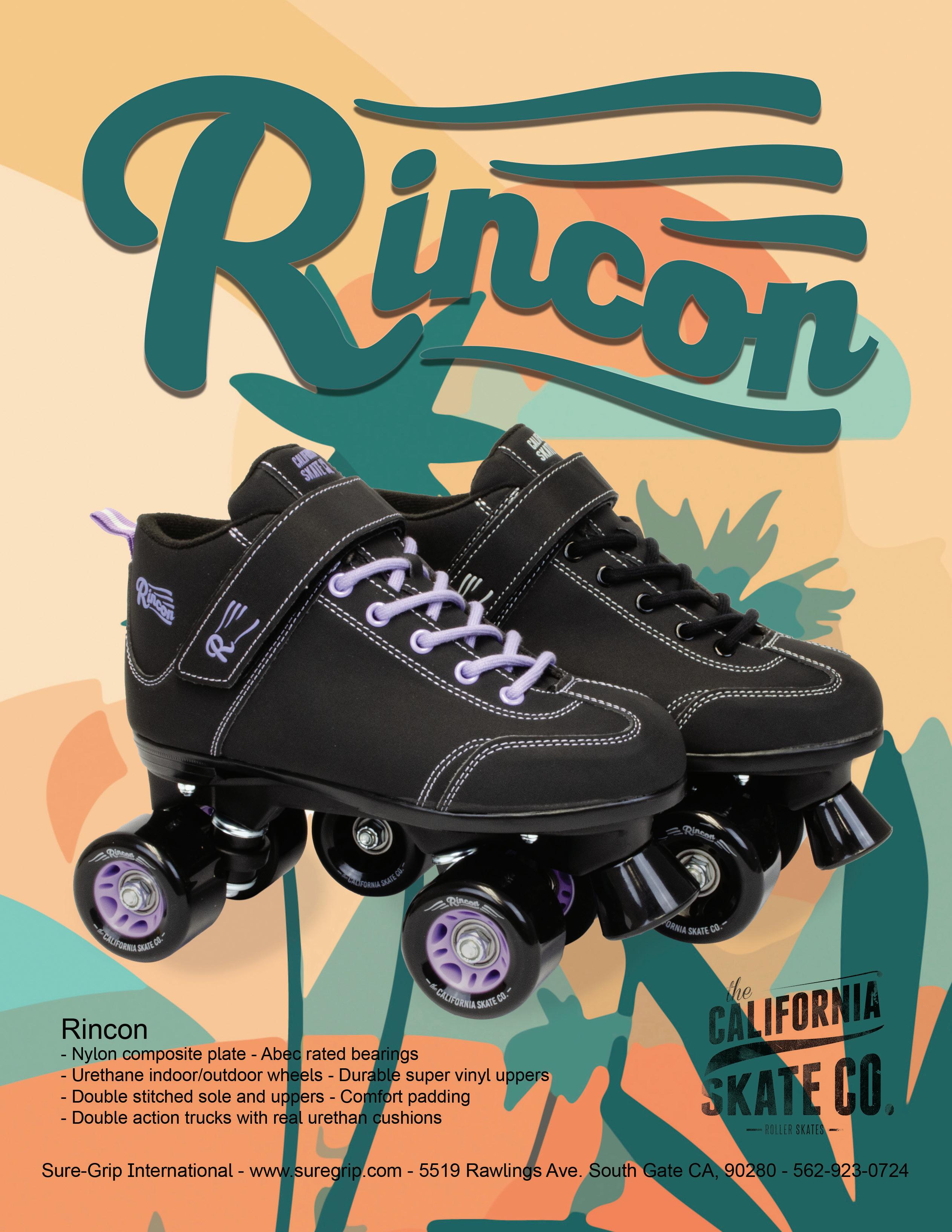
If your firm services the roller skating industry or small business owners and you would like information about becoming a member, or you are a current member needing to update your information, call the Association headquarters at 317-347-2626 Ext. 108. If you would like an additional listing under another RSM category, there is a charge of $145 per additional category.
EXPERT HOSIERY LLC
Abid Sheikh 919-799-7707
5448 Apex Peakway No. 115, Apex, NC 27502 support@experthosiery.com www.funtimefootwear.com
LAYMON HUGHES HOSIERY
Sharon Hughes
256-845-1034
1017 Sanders Ave. NE, Fort Payne, AL 35967 laymonhughes@bellsouth.net www.laymonhugheshosiery.com
COMPUTER TECHNOLOGY, SOCIAL MEDIA & MARKETING
BEYOND
Kristin Novak-Csapo 302-668-7282
204 Miriam Dr., Bear, DE 19701 kristin.novak-csapo@getbeyond.com me.getbeyond.com/kristinnovakcsapo
BOOKING ZONE
Ryan Wright
954-347-0906
6880 SW 20th St., Plantation, FL 33317 ryanw@bookingzone.com www.bookingzone.com
EZTRANSITION
Darren Cato
470-431-1801
4691 Atlanta Rd. Suit 230 Atlanta, GA 30039 darren@eztransition.com www.eztransition.com
HOWND
Brandon Willey
877-394-2410
7890 S Hardy Dr A-105, Tempe, AZ 85284 brandon@hownd.com www.hownd.com
IDEAL SOFTWARE SYSTEMS
Cat Owen
3839 Hwy 45 North, Meridian, MS 39301 800-964-3325 fecsales@idealss.com www.idealamusementsoftware.com
INFLY
Joseph Henderson
801-550-6166
36 W. Syracuse Rd., Vineyard, UT 84059 team@infly.com www.infly.co
INTERCARD INC.
Rhonda Stevens
314-275-8066 1884 Lackland Hill Parkway Suite 1, St. Louis, MO 63146 rstevens@intercardinc.com www.intercardinc.com
LILYPAD
Jeremy Devalk
866-419-4043
4056 Meadowbrooke Dr., Unit 148, London, ON NBL 1ES jeremy@lilypadpos.com www.lilypadpos.com
MANCUSO, INC.
Nick Champa
859-404-7744
297 Ruccio Way, Lexington, KY 40503 nick@visitchamps.com nick@visitchamps.com/mancuso
OCCASION
Leanne Purkis
872-362-3910
245 Durham Nox Road, Kintnersville, PA, 18930 Leanne@getoccasion.com www.getoccasion.com
PARTY CENTER SOFTWARE
Scott Drummond
888-804-1166
1010 Camerado Drive #206, Cameron Park, CA 95682 sales@partycentersoftware.com www.partycentersoftware.com
PARTYWIRKS.COM
Larry McLean
503-488-5516 9450 SW Gemini Dr, Suite 30375 Beaverton, OR 97008 larry@partywirks.com www.partywirks.com
RINK WARE
Harold Herrin
1-800-720-1219 25711 Drybrook Rd., Spring, TX 77389 harold.herrin@rinkware.com www.rinkware.com
ROLLER
Megan Harr
513-845-3338
Level 4, 101 Moray Street South Melbourne, VIC 3205 Australia megan.harr@rollersoftware.com Website: roller.software
SACOA CASHLESS SYSTEM
Hiara Elias (407) 499-1876 sales@sacoa.com www.sacoacard.com
6457 Hazeltine National Dr, Suite 130 Orlando, FL 32822
SEMNOX SOLUTIONS LLC
Brian Duke 616-264-4816 11498 Luna Rd Suite 200, Farmers Branch, TX 75234 brian.duke@semnox.com www.semnox.com
SKATE PULSE MEDIA
Crystal Silvas
530-459-8264 117 E. Front St. Lynden, WA 98264 crystal@skatepulsemedia.com www.skatepulsemedia.com
TIMES TWO TECHNOLOGY
Kendall Cabe
508-283-3830 Ext. 801 1257 Worcester Rd. #296, Framingham, MA 01701
kendall.cabe@timestwotechnology.com www.timestwotechnology.com
TRUSTWORKZ
Denise Griffin 770-615-3275
1025 Rose Creek Dr. Ste 620-379, Woodstock, GA 30189
denise@trustworkz.com www.TrustWorkz.com
WHAT TO POST?
Carrie Rokosz
727-218-3962
3248 SW Elizabeth St. West Melbourne, FL 32904 carrierokosz@me.com www.facebook.com/ whattopostandwedoit
RADIOBOSS 2-WAY
Adam Smith
516-694-6000
28 Baiting Place Rd., Farmingdale, NY 11735 adam@radioboss.com www.radioboss.com
CONSULTING, RINK PLANNING, INTERIOR DESIGN & DECOR
BLACK LIGHT UNITY
Karl McCarrison
914-984-5632 karl@blacklightunity.com www.blacklightunity.com
OTTAWAY ENTERTAINMENT GROUP
Journey & Austin Ottaway 316-737-8697
10519 E. Mainsgate St., Wichita, KS 67226 ottawayeg@gmail.com www.fecmanagers.com
RC SPORTS INC.
Nathan Dieringer 913-894-5177
14501 W. 98th, Pillar 18-51A, Lenexa, KS 66219 nathan@rcsports.com www.rcsports.com
TRAINERTAINMENT
Beth Standlee 817-886-4840
6829 Green Leaf Dr., North Richland, TX 76182 beth@trainertainment.net www.trainertainment.net
US DESIGN LAB
Gary Smith
813-947-2360
15077 N. 40th St., Suite 103B, Tampa, FL 33605 gary@usdesignlab.com www.usdesignlab.com
UVSCENERY, LLC
Greg Kaplan 508-736-6848
2218 Massachusetts Ave., Cambridge, MA 02140 uvscenery@gmail.com www.uvscenery.com
COSTUMES
MASK US INC
David Bragg 619-476-9041
3121 Main Street, Suite F Chula Vista, CA 91911 dave@maskus.com www.maskus.com
FINANCIAL, PLANNING AND PAYMENT SYSTEMS
CFG WEALTH MANAGEMENT SERVICES
Michael Puckett 317-841-7959 9840 Westpoint Drive, Suite 150, Indianapolis, IN 46256 mpuckett@cfgwms.com www.cfgwms.com
CSA BUSINESS SOLUTIONS
David Brewer 770-428-2565 797 Bishops Circle, Evans, GA 30809 dbrewer@csamail.net www.csabusinesssolutions.com
FEC FINANCIAL GROUP LLC
Scott Heit 800-417-6883 12414 Medford Rd., Philadelphia, PA 19154 scott@fecfin.com www.fecfin.com
NORTH AMERICAN BANCARD
Brian Roth 866-481-4604 broth@nynab.com www.nynab.com
FLOOR MATERIALS AND INSTALLATIONS
ASTRO CARPET MILLS
Stefanie Mantooth 800-542-4189 Ext. 836 PO Box 1059, Calhoun, GA 30701 smantooth@marquisind.com www.astrocarpetmills.com
FLAGSHIP CARPETS
Marsha Long 800-778-5241
734 S. River St., PO Box 1779, Calhoun, GA 30701 marsha@flagshipcarpets.com www.flagshipcarpets.com
FLOOR SYSTEMS INC
Kim Wall 260-484-7746
4517 Industrial Rd., Fort Wayne, IN 46825 kim@floorsystemsinc.com www.floorsystemsinc.com
OMEGA PATTERN WORKS
Kristin Messick Office: 800-554-7007 Cell: 620-200-5405 PO Box 1059, Calhoun, GA 30701 kamessick@gmail.com www.omegapatternworks.com
ROLL-ON FLOOR PRODUCTS
Joseph Nazzaro Jr. 817-571-2438
233 W. Pipeline Rd., Hurst, TX 76053 joenazzaro@aol.com www.roll-on.com
SOUTHEASTERN SKATE SUPPLY #2
David Ramsey 800-241-8060
462 Veterans Memorial Hwy, SE, Mableton, GA 30126 david@seskate2.com www.southeasternskatesupply.com
TITE COAT INTERNATIONAL
Scott Gray
800-442-8483
2440 County Road 870, Crane Hill, AL 35053 owner@titecoat.com www.titecoat.com
GROUNDS MAINTENANCE AND OFFICE CHEMICALS
CINTAS CORPORATION
Chris Schneider 317-387-9000
6800 Cintas Blvd, Mason, OH, 45040 schneiderc@cintas.com www.cintas.com
SCENTURION TECHNOLOGIES,(PATRIOT LLC)
Dave Smallwood 802-343-7490
P.O. Box 507, Eaton Rapids, MI 48827 dave@patriottechusa.com www.patriottechusa.com
INSURANCE
AMERITRUST INSURANCE GROUP
Lisa Ignoto 913-266-5325
11880 College Blvd, Ste 500, Overland Park, KS 66210 lisa.ignoto@ameritrustgroup.com www.ameritrustconnect.com/rsa
HANASAB INSURANCE SERVICES
Robert Ferrer 323-782-8454
625 South Fairfax Ave, Los Angeles, CA 90036 robert@hanasabinsurance.com www.hanasabinsurance.com
JBL TRINITY GROUP LTD
Anthony Profaci
800-925-7465
50 First Avenue, Atlantic Highlands, NJ 07716 anthonyprofaci@jbltrinity.com www.skatinginsurance.com
MERIDIO HEALTH CARE
Madison Pope
929-392-2050 mpope@getmeridio.com go.getmeridio.com/meridiohealthcare-rsa
LAWYERS & EXPERT WITNESSES
INTERNATIONAL AMUSEMENT & LEISURE DEFENSE ASSOCIATION
PO Box 4563, Louisville, KY 40204 502-473-0956 info@ialda.org www.ialda.org
LEISURE SERVICES ASSOCIATES
Edward Wankel
631-445-8798
507 N. 5th St., Lafayette IN 47901 lsaexperts@gmail.com
TOTAL SPORTS CONSULTING
Alphonses Heraghty
45 Ashley Circle, Commack, NY 11725 631-241-3058 heraghty36@gmail.com
LOCKERS
AMERICAN LOCKER SECURITY SYSTEMS
Pete Collins
817-722-0135 2380 Dean Way, Ste. 100, Southlake, TX 76092 pcollins@americanlocker.com www.americanlocker.com
MEDIA
RINKSIDER MAGAZINE
Lynette Rowland 317-347-2626 Ext. 107 6905 Corporate Dr., Indianapolis, IN 46278 editor@rollerskating.com www.rollerskating.com
ROLLER SK8R MAGAZINE
Susan Geary 540-339-9461 4712 Oak Rd. NW, Roanoke VA rollerskater@susangeary.com www.rollersk8r.com
MONEY COUNTERS
INTERLINE CASH SYSTEMS INC., DBA CA$HMATE USA
John Kinley
888-437-0920
P.O. Box 366261, Bonita Springs FL 34136 john@cashmate.us www.cashmateusa.com
ASCAP
John Bonaccorso 800-505-4052 2 Music Square W., Nashville, TN 37203 jjohnson@ascap.com www.ascap.com
FEC MUSIC
Jim Juniper
866-684-8324
787 Adelaide St North, Suite 2, London, ON, N5Y 2L8 sales@fecmusic.com www.fecmusic.com
NOVELTY & REDEMPTION & PARTY SUPPLIES
A & A GLOBAL INDUSTRIES
Stacy Johnson
800-638-6000 17 Stenerson Lane, Cockeysville, MD 21030 kdunn@aaglobal.com www.aaglobal.com
BMI MERCHANDISE
Dave Schwartz
732-363-0212
1960 Rutgers University Blvd., Lakewood, NJ 08701 dschwartz@bmimerchandise.com www.bmimerchandise.com
ELAUT GROUP USA
Paula Rinker
561-588-5200 2201 4th Avenue North Lake Worth Beach, FL 33461 prinker@coastentertainment.com www.cranemachines.com
FACTORY PARTY DIRECT
50 Ann Street, West Pittston, PA 18643
Jeremy McDermott (272) 209-2293 jeremy@crowndisplay.com https://www.factorydirectparty.com/
FUN EXPRESS
Lae Phonephakdy 402-939-3020 4206 S 108th St, Omaha, NE 68137 laep@funexpress.com www.funexpress.com
FUNTASTIC NOVELTIES INC.
Kris Wall Friesner 260-482-1566
4515 Industrial Rd, Fort Wayne, IN 46825 kris@funtasticnovelties.com www.funnov.com
GLOWORKS Joe Iacona 800-809-4569 21116 Greenfield Rd. Oak Park, MI 48237 joe@gloworks.com www.gloworks.com
PARTY DIRECT
Kimberly Hawkins
800-548-7868 PO Box 353, Peru, IN 46970 acct@partydirect.com www.partydirect.com
REBECCA’S
Joseph Nazzaro Jr. 817-545-2745
233 W. Pipeline Rd., Hurst, TX 76053 service@rebeccas.com www.rebeccas.com
REDEMPTION PLUS
Mike Tipton
913-563-4040
6800 College Blvd., Overland Park, KS 66214 mtipton@redemptionplus.com www.redemptionplus.com
RHODE ISLAND NOVELTY
Hutch Costello 800-435-3456
350 Commerce Dr., Fall River, MA 02720 hcostello@rinovelty.com www.rinovelty.com
SSM VENDING
Judi Heston-Donnell 877-213-0500 1716 West Broadway Road Suite 111, Mesa, AZ 85202 judi@ssmvending.com www.ssmvending.com
STUFF SHOP
Sean Silva
774-365-6128
350 Commerce Dr., Fall River, MA 02720 sean@stuffshop.com www.stuffshop.com
SURESHOT REDEMPTION
Meg Bonnichsen
402-659-9688
3350 Shelby St. Ste. 370 Ontario CA 91764 megb@sureshot-redemption.com www.sureshot-redemption.com
PLAY EQUIPMENT, BOWLING & LASER TAG
ART ATTACK
Doug Wilson
863-438-7469
101 Shepard Ave. Winter Haven, FL 33838 sales@artattackfx.com www.artattackfx.com
CREATIVE WORKS INC.
Armando Lanuti 317-834-4770
5767 Dividend Rd., Indianapolis, IN 46241 marketing@thewoweffect.com www.thewoweffect.com
LASER BLAST
Carla Ewald
877-338-7889 6118 Gotfredson Rd., Plymouth, MI 48170 mike@laser-blast.com www.laser-blast.com
LASERTRON
Ann Kessler
716-836-0670
251 Meyer Rd., Amherst, NY 14226 info@lasertron.us www.lasertron.us
PLAYSMART
Gary Boots 217-221-4031
107 North Missouri, Sedalia, MO 65301 gboots@playsmart.com www.playsmart.com
RIDE DEVELOPMENT COMPANY
Tamara Dean 503-606-4438 PO Box 40, Independence, OR 97351 RDCcars@gmail.com www.bumpercar.com
ROLLER SKATE MANUFACTURERS
ATOM SKATES
Josh Haagen 253-301-3460
2750 Williamson Place NW Suite 148, DuPont, WA 98327 Info@atomskates.com www.atomskates.com
CHICAGO SKATES/NATIONAL SPORTING GOODS
Joel Aranson 973-779-2323
376 Hollywood Ave., Fairfield, NJ 7004 skater@chicagoskates.com www.chicagoskates.com
CRAZY SKATES USA Trent Carter 317-222-6105 2801 Fortune Circle East, Indianapolis, IN 46241 contact@crazyskateco.com www.crazyskateco.com
JAMMERZ SKATE COMPANY
Robert Burt 2229 23rd Ave., Rockford, IL 61104 815-708-7781 jammerz2010@yahoo.com www.jammerzlightedplates.com
RIEDELL SKATES INC. Bob Riegelman 800-698-6893 122 Cannon River Ave N, Red Wing, MN 55066 tylerh@riedellskates.com www.riedellskates.com
ROLLER DERBY SKATE CORP Tony Muse 217-324-3961 311 West Edwards Street, Litchfield, IL 62056 tmuse@rollerderbyskates.com www.rollerderby.com
SKATES US INC. David Ripp 765-935-7477 415 West Eaton Pike, Richmond, IN 47374 david.ripp@skatesUS.com www.SkatesUS.com
SURE GRIP INTERNATIONAL
Jim Ball
800-344-3331 5519 Rawlings, Southgate, CA 90280 skates@suregrip.com www.suregrip.com
ROLLER SKATES & DISTRIBUTORS
GFY SKATES
Skip Clinton 816-809-6356
1901 NE 107th Terrace, Kansas City, MO 64155 gfysales@gmail.com
GOLDEN HORSE RENTALS/LW SKATES
Walt Hedrick 817-781-1898 4004 Cedar Creek Ct, Arlington, TX 76016 waltskate@yahoo.com www.usedrentalskates.com
PARADISE SKATE WHOLESALE SHIPPING
Robert Bruce 925-470-6549 1201 W. 10th St. Antioch, CA 94509 robert@paradiseskate.com www.paradiseskatewholesale.com
RC SPORTS INC.
Nathan Dieringer 913-894-5177 17501 W. 98th, Pillar 18-51A, Lenexa, KS 66219 nathan@rcsports.com www.rcsports.com
ROCES USA
Dave Smallwood 802-343-7490 10 Technology Dr., Unit 1-B, West Lebanon, NH 03784 davesmallwood@rocesusa.com www.rocesusa.com
SOUTHEASTERN SKATE SUPPLY INC.
Glenn Ramsey Jr 800-444-7528 2917 Nicholas Ave, Roanoke, VA 24012 info@seskate.com www.seskate.com
SOUTHEASTERN SKATE SUPPLY #2
David Ramsey 800-241-8060
462 Veterans Memorial Hwy, SE, Mableton, GA 30126 david@seskate2.com www.southeasternskatesupply.com
ROLLER SPORTS
AMERICAN ROLLER SPORTS
Lisa Dunham, Director of Sports 6905 Corporate Dr., Indianapolis, IN 46278 317-347-2626 Ext. 105 info@americanrollersports.com www.americanrollersports.com
USA ROLLER SPORTS
Heidi Permatteo 402-483-7551
4730 South Street, Lincoln, NE 68506 heidi@usarollersports.org www.usarollersports.org
SNACK BAR EQUIPMENT & SUPPLIES
ICEE COMPANY
Scott Lodsdon 803-926-5657
265 Mason Rd., La Vergne, TN 37086 iceeap@icee.com www.icee.com
MINI MELTS ICE CREAM
Rachel Fox
860-889-7300
2540 Metropolitan Dr., Trevose, PA 19053 rfox@minimelts.com www.minimelts.com
PEPSI-COLA COMPANY
Mark Maiola 724-880-2598 mark.mailoa@pepsico.com www.pepsiworld.com
QUIK N’ CRISPY
651-669-8993
12021 Plano Rd. Suite 160, Dallas, TX 75243
sales@q-n-c.com www.q-n-c.com
SB VALUE FOOD BUYING PROGRAM
Clint Akins
P.O. Box 785 Linville, NC 28646
980-429-0398 clint@wegrowvalue.com www.wegrowvalue.com
SCHWAN’S FOOD SERVICE
Doug Priestas
507-537-8140
9472 Hunters Pond Dr., Tampa, FL 33647 douglas.priestas@schwans.com www.schwans.com
STATE FAIR MINI DONUTS
Pamela Palm
763-438-2867
1515 Archwood Rd, Minnetonka, MN 55305
ppalm@statefairminidonuts.com www.statefairminidonuts.com
SOUND & LIGHTING SYSTEMS
ACTION LIGHTING
Jeff Stevens
800-248-0076
310 Ice Pond Rd., Bozeman, MT 59715 jeff@actionlighting.com www.actionlighting.com
AUDIO LITE
Terry Maxfield
800-255-1015
701 Graham St., Emporia, KS 66801 terry@audiolite.com www.audiolite.com
FEC MUSIC
Jim Juniper
866-684-8324
787 Adelaide St. North, Suite 2, London, ON N5Y 2L8 sales@fecmusic.com www.fecmusic.com
FROGGY’S FOG
Christopher Markgraf
615-469-4906
302 Rutherford Ln, Columbia, TN 38401
sales@froggysfog.com www.froggysfog.com
STAR WHOLESALE LIGHTING AND SOUND
Michael Couey
678-570-7608
55 Thomas Grace Annex, Sharpsburg, GA 30277 michael@starliteffc.com www.buystarwholesale.com
SPECIAL PRODUCTS & SERVICES
VENU+
Kaitlyn Hartford 1-800-385-4973
200 W. Sandlake Rd Suite 800 Orlando, FL 32809 khartford@venuplus.com www.venuplus.com
VENDING, VIDEO & COIN OPERATED GAMES
AMUSEMENT CONNECT
Frank Licausi
816-405-3187
7020 Universal Ave., Kansas City, MO 64120
frank@amusementconnect.com www.amusementconnect.com
AMERICAN VENDING
Keith Krail
847-439-9400
750 Morse Ave., Elk Grove Village, IL 60007 kkrail@avscompanies.com www.avscompanies.com
BAY TEK GAMES INC.
Lauren Perlberg 920-822-3951 1077 E. Glenbrook Drive, Pulaski, WI 54162 sales@baytekgames.com www.baytekgames.com
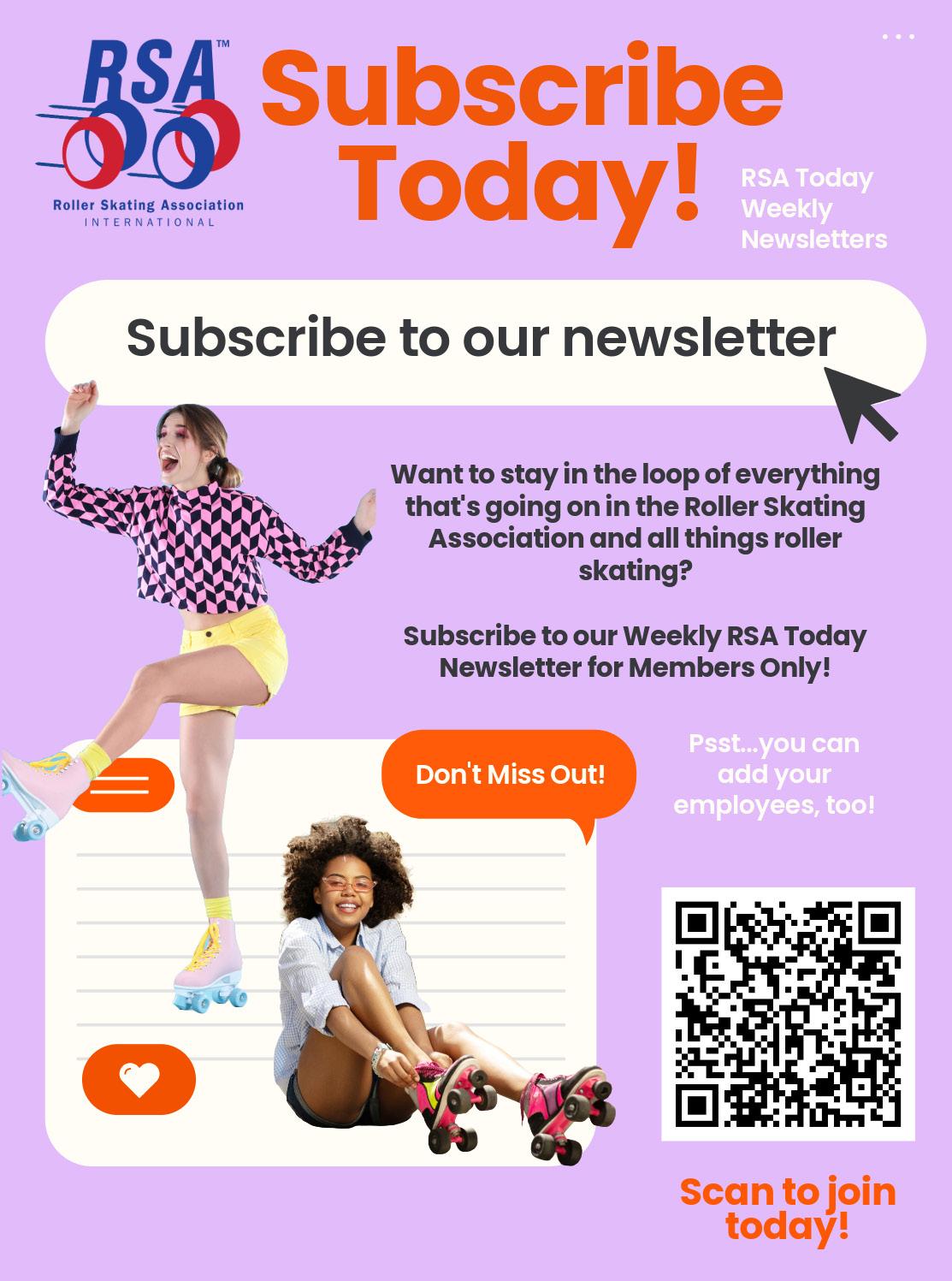
BETSON ENTERPRISES
Bob Dipipi
201-438-1300
303 Paterson Plank Rd, Carlstadt, NJ 07072 bdipipi@betson.com www.betson.com
EAST COAST AMUSEMENTS
Wilbur Thompson 804-516-9083 bluthomp@aol.com www.ecagames.com 1500 Commerce Rd., Richmond, VA 23220
INCREDIVEND
Howard Rubin 1869 Best Drive, Walled Lake, MI 48390 702-909-0905 howard@incredivend.com www.incredivend.com
PIPELINE GAMES
Beverly Ruhman 732-387-0233
4000 Bordentown Ave. Suite 30, Sayreville, NJ 08872 beverly@pipelinegames.com www.pipelinegames.com
PLAYER ONE AMUSEMENT GROUP
Bill Freeman 386-747-0845
1390 Canary Drive, Deland, FL 32720 bill.freeman@cineplex.com www.winwithp1ag.com
RILIX LLC
Michael Carvalho 407-227-2435
700 S. John Rodes Blvd. Ste. 5 Melbourne, FL 32904 michael@rilix.business Website: rilix.business
SHAFFER DISTRIBUTING CO. Paul Jones 1-800-282-0194
1100 W. 3rd Ave, Columbus, OH 43212 pjones@shafferdistributing.com www.shafferdistributing.com
WHEEL, LACES, BEARING MANUFACTURERS
DERBY LACES
Jill Cook
206-499-5533
319 169th St. SW, Bothell, WA 98012 jill@derbylaces.com www.derbylaces.com
PIPER WHEELS
Doug Glass
714-891-3456
3800 Limmer Loop, Hutto, TX 78634 doug@piperwheels.com www.piperwheels.com
RUBY ROLLER SPORTS
Luke Powell
816-683-4000
2601 Madison Ave., Ste B, Kansas City, MO 64108 luke@rubyrollersports.com www.rubyrollersports.com
ROLL ONE DIST. DBA ROLLERBONES AND BONES BEARINGS
Isaac Oltmans
805-683-4779
6860 Cortana Drive, Suite B Goleta, GA 93117 isaac@rollone.com www.rollone.com
TORNADO BEARINGS
Todd Best
704-605-8429
6070 Gold Hill Rd. E, Gold Hill, NC 28071 tornadobearings@gmail.com www.tornadobearings.com
WRIST BANDS, TICKETS AND TOKENS
NATIONAL TICKET COMPANY
Patrick Carter 800-829-0829
5562 Snydertown Rd., Paxinos, PA 17860 pcarter@nationalticket.com www.nationalticket.com
